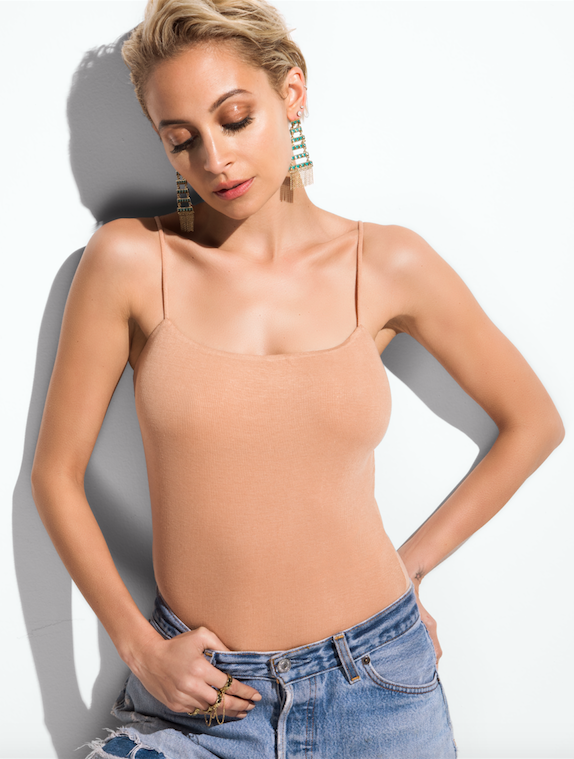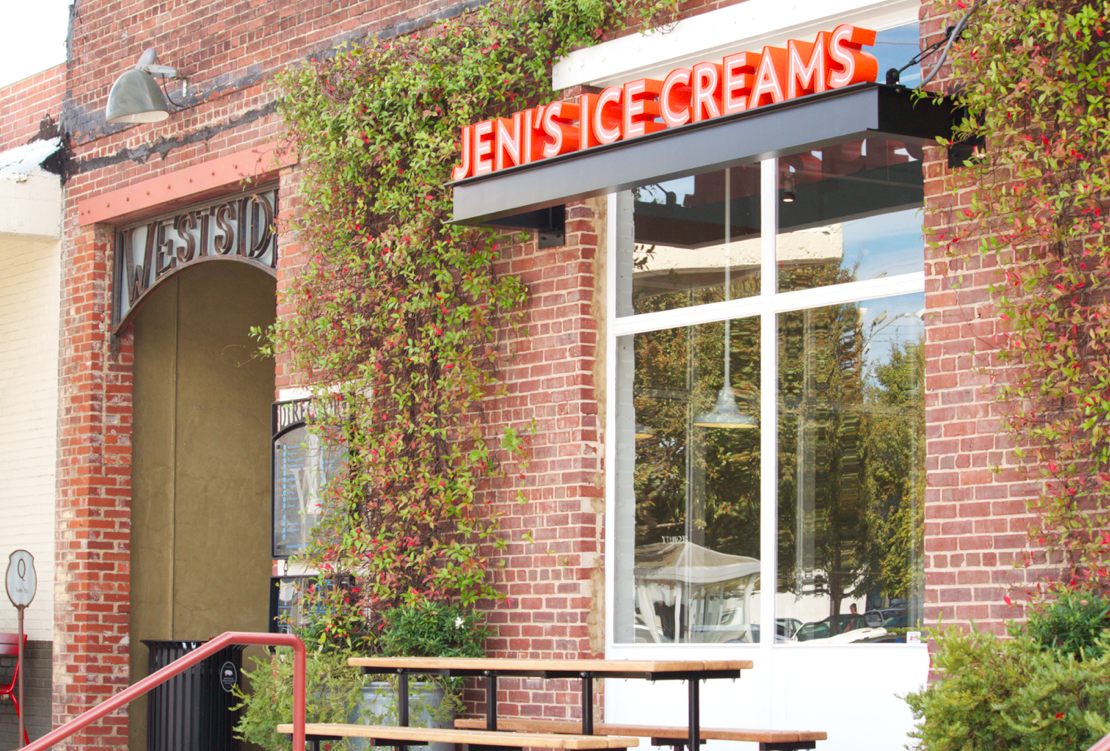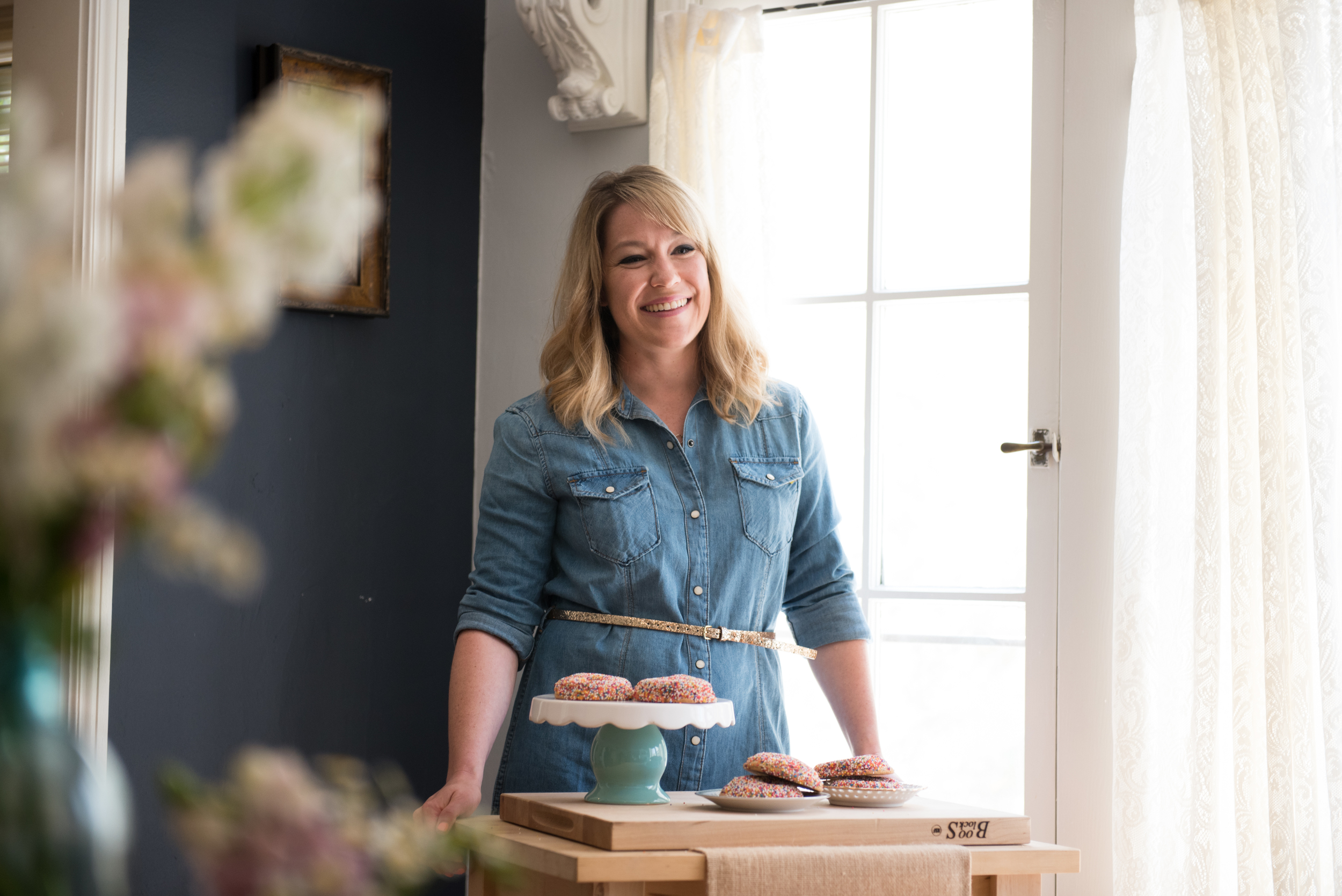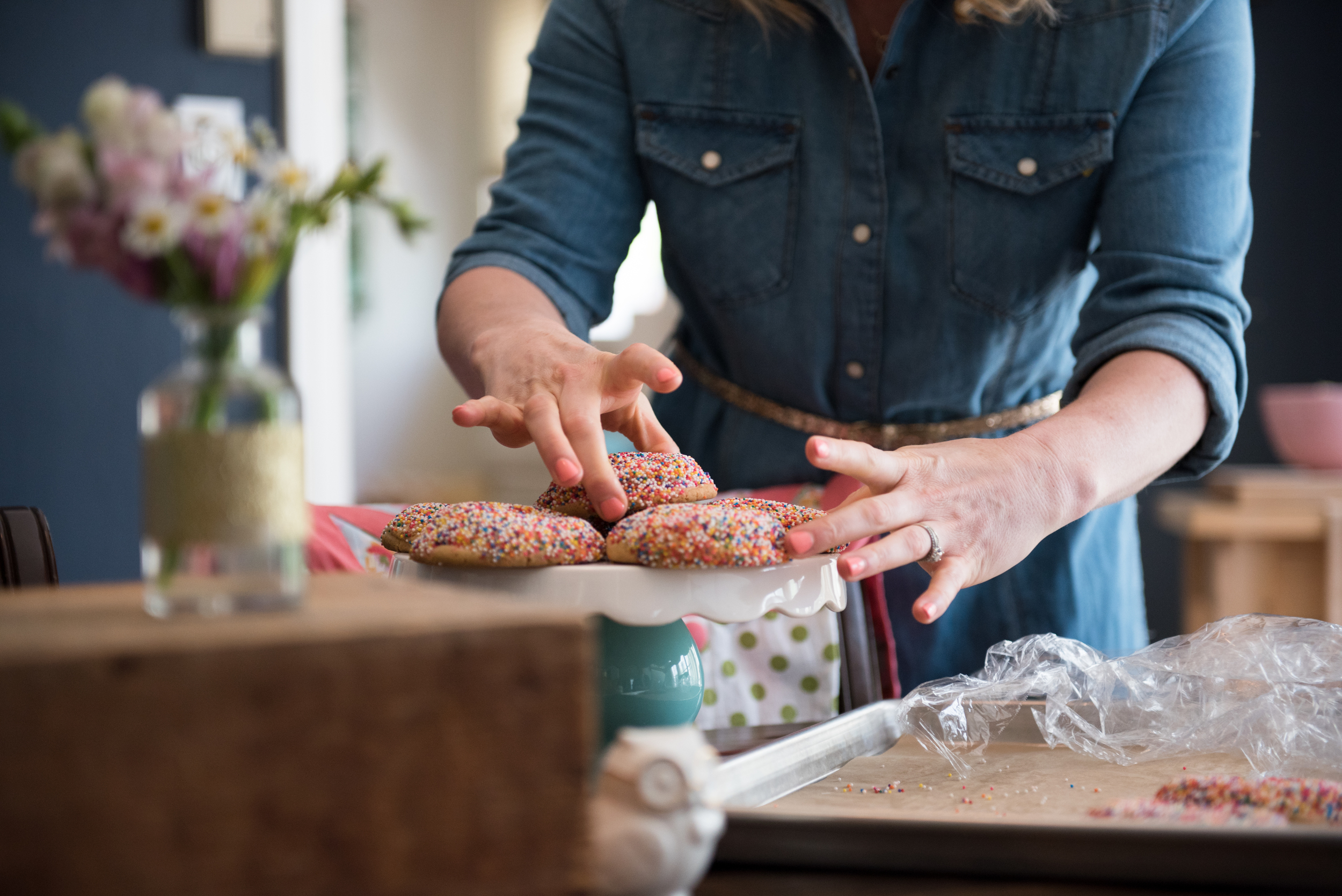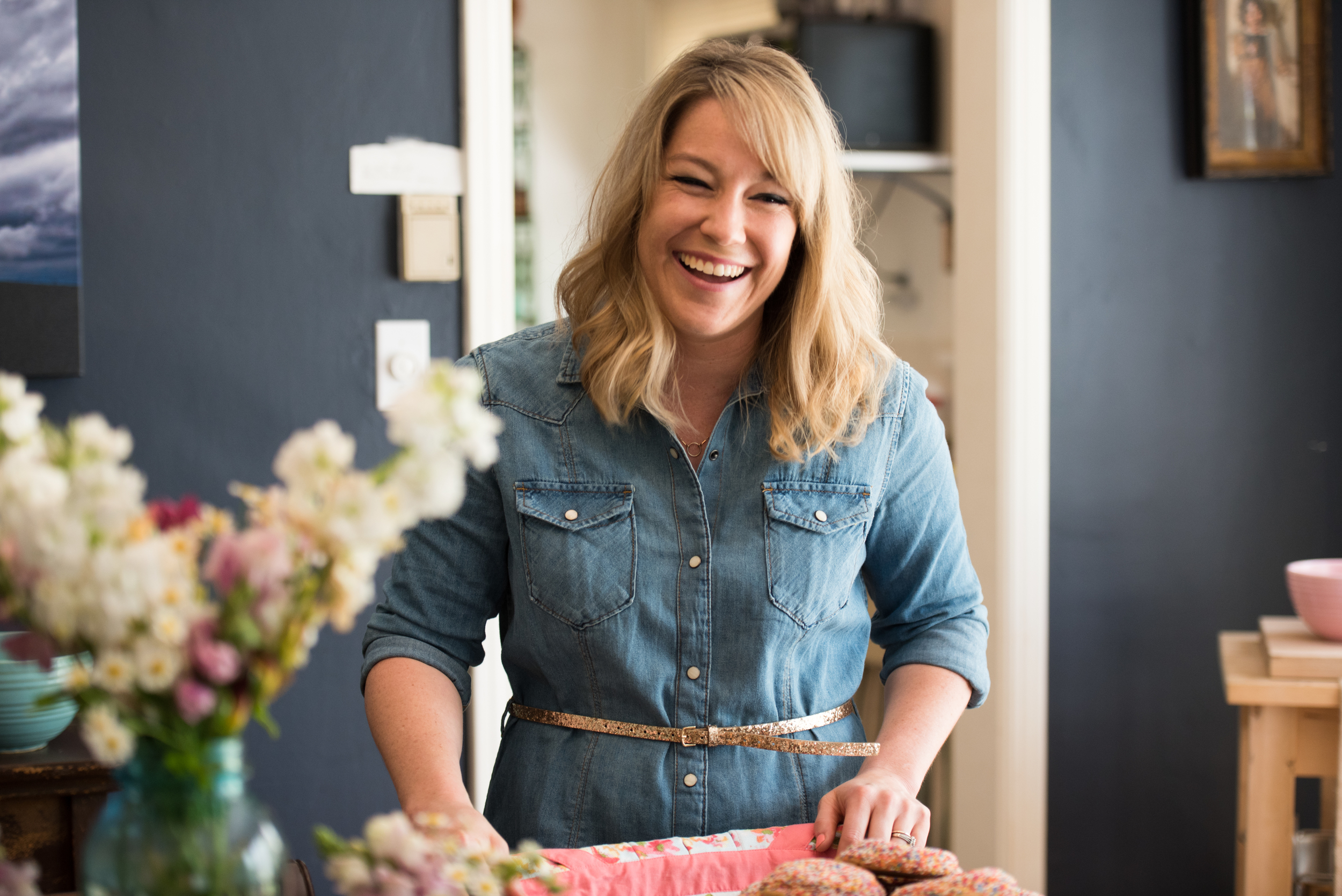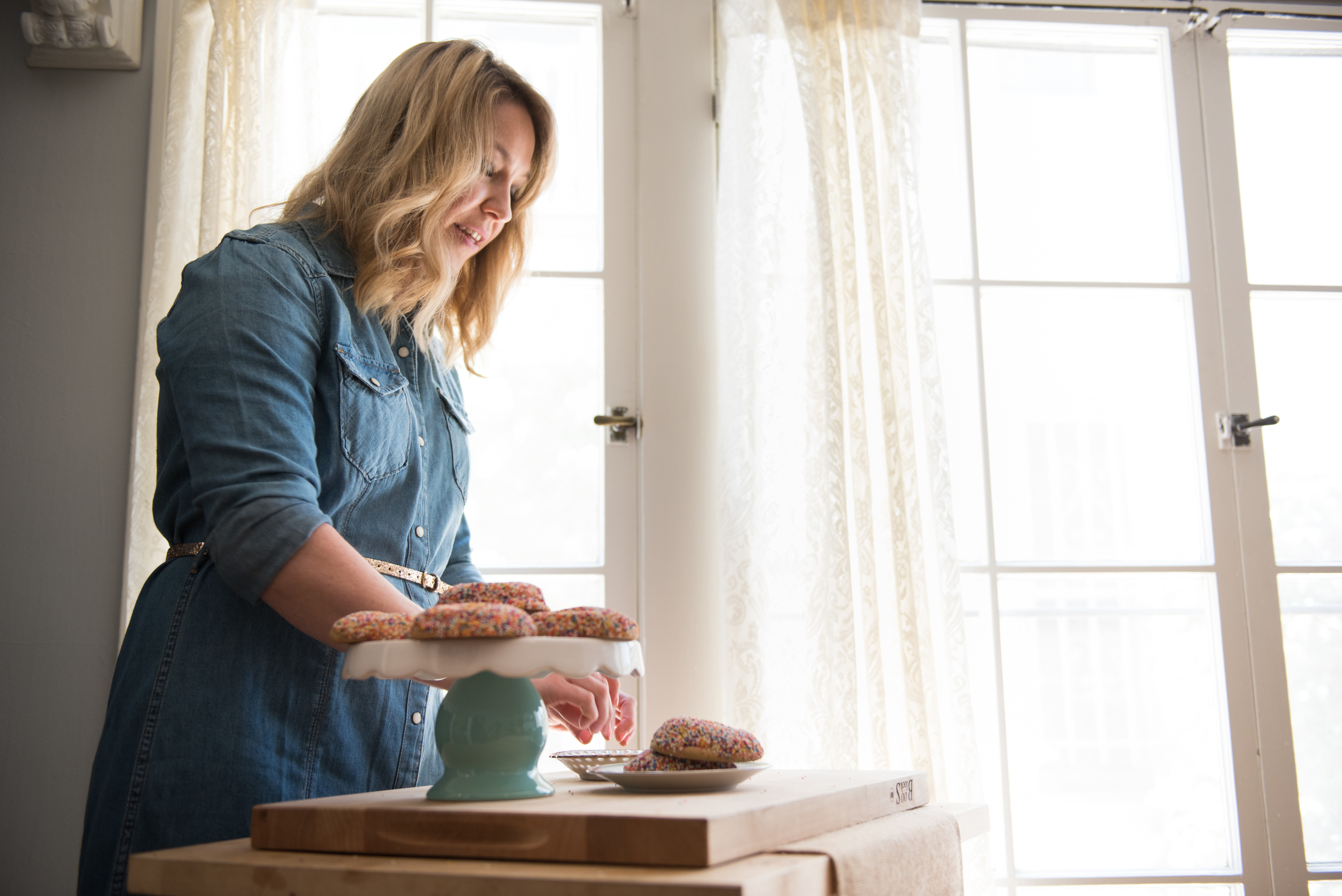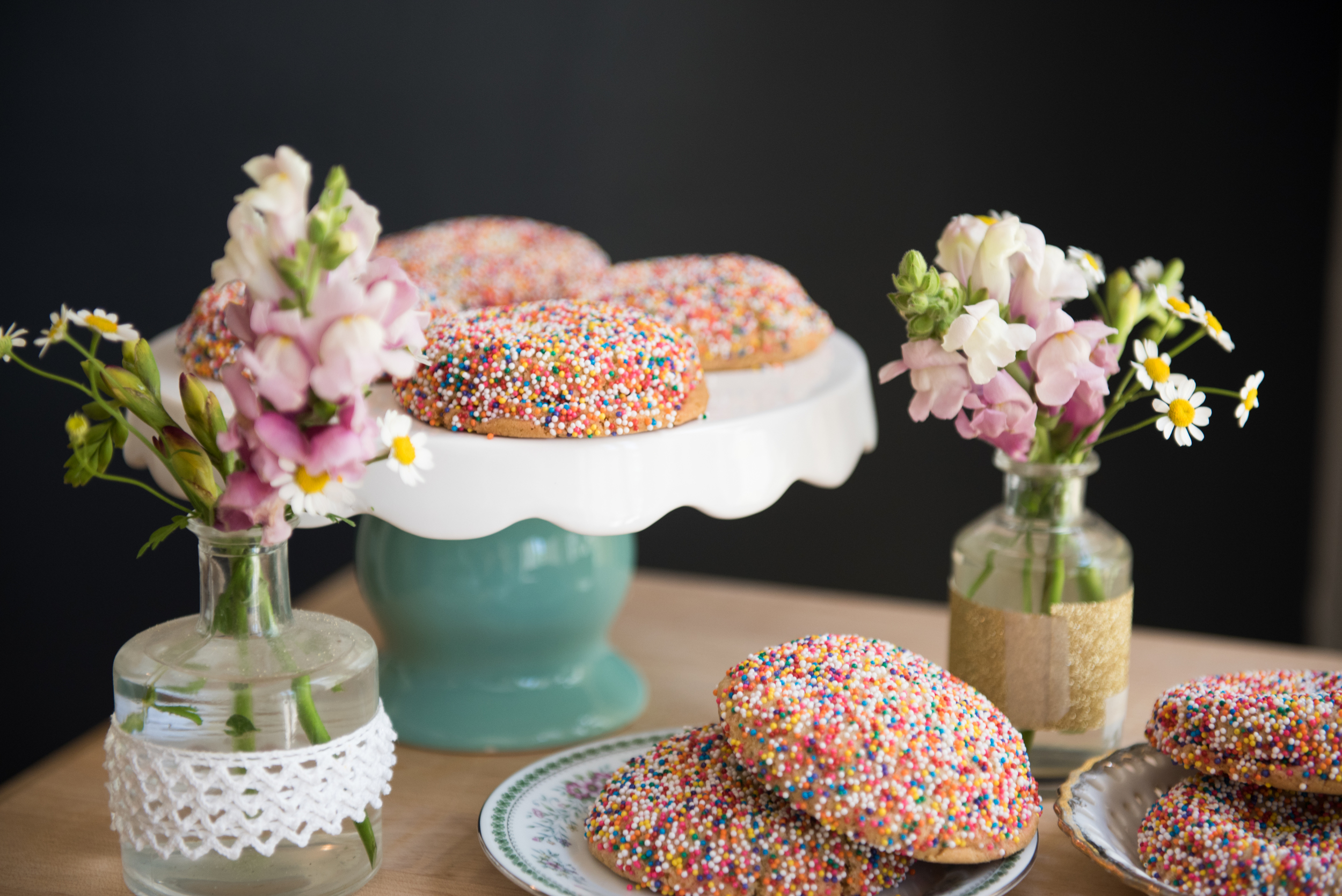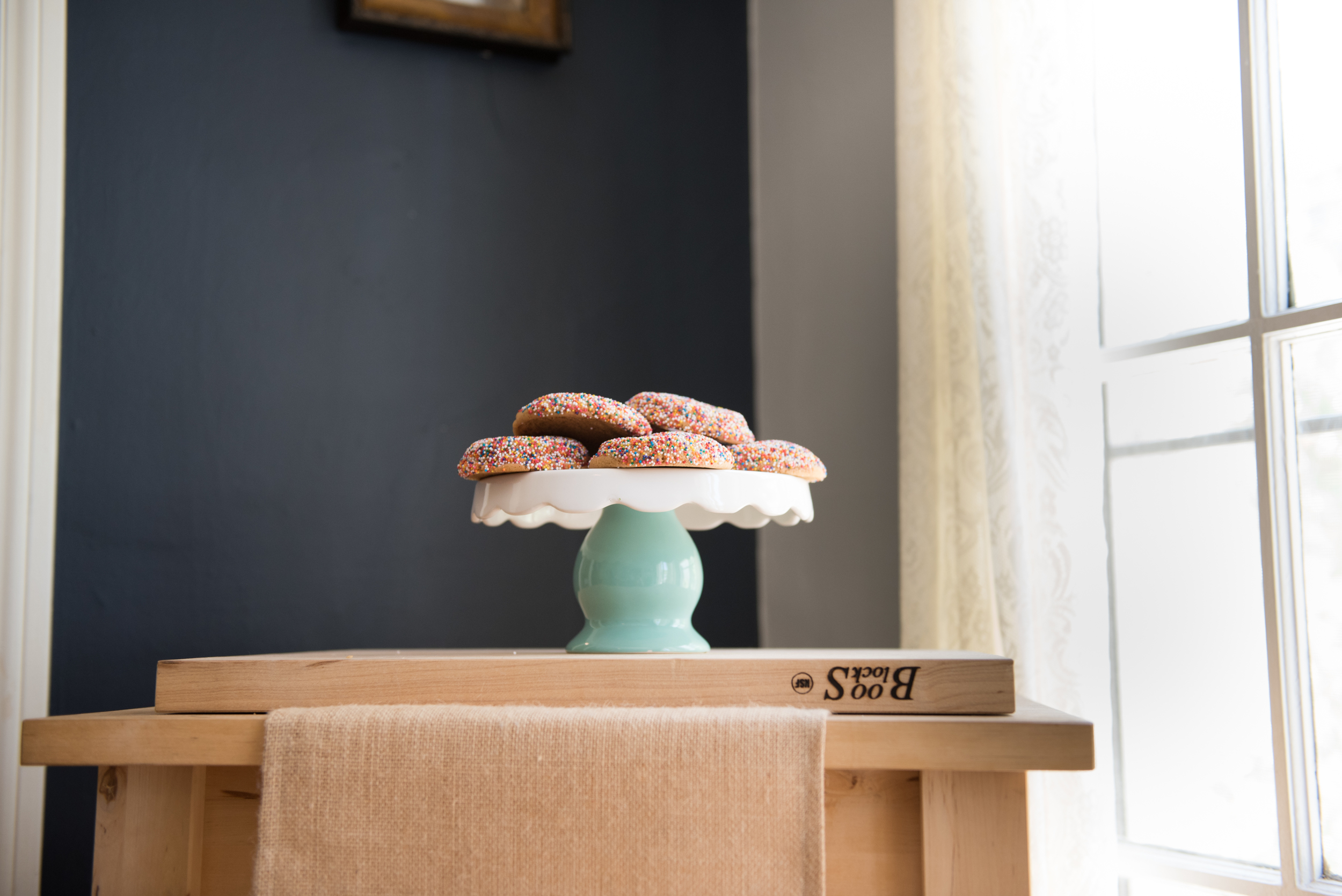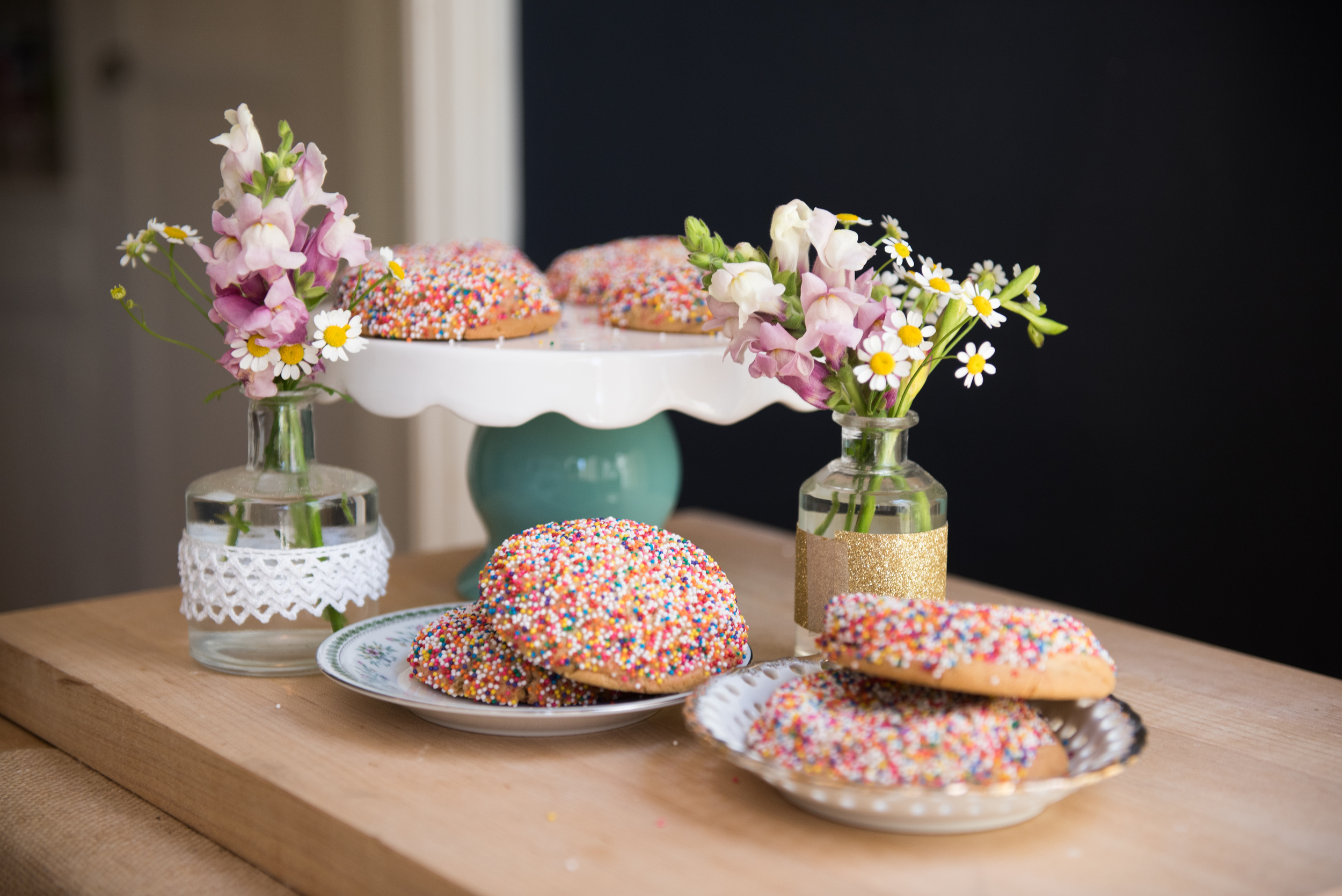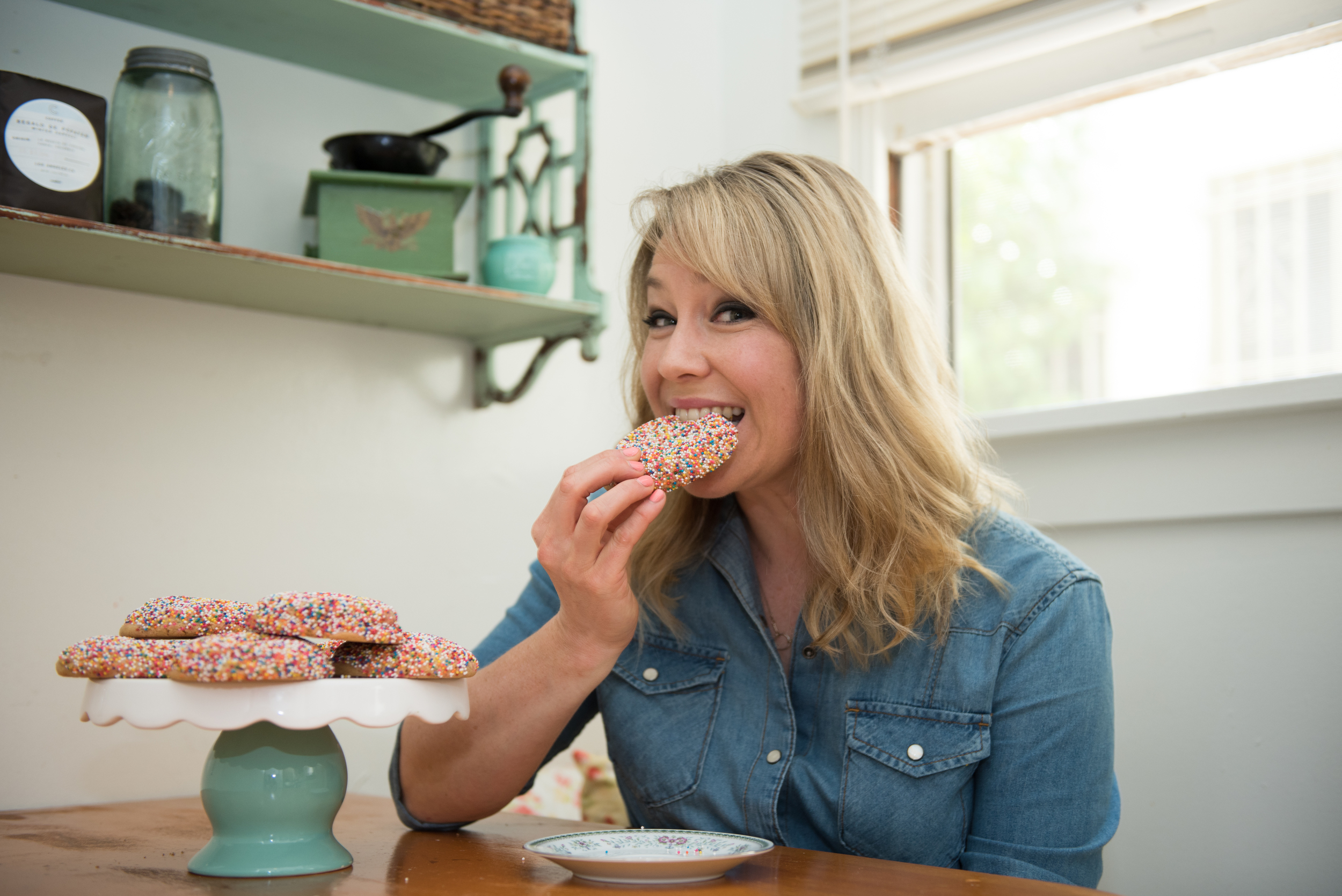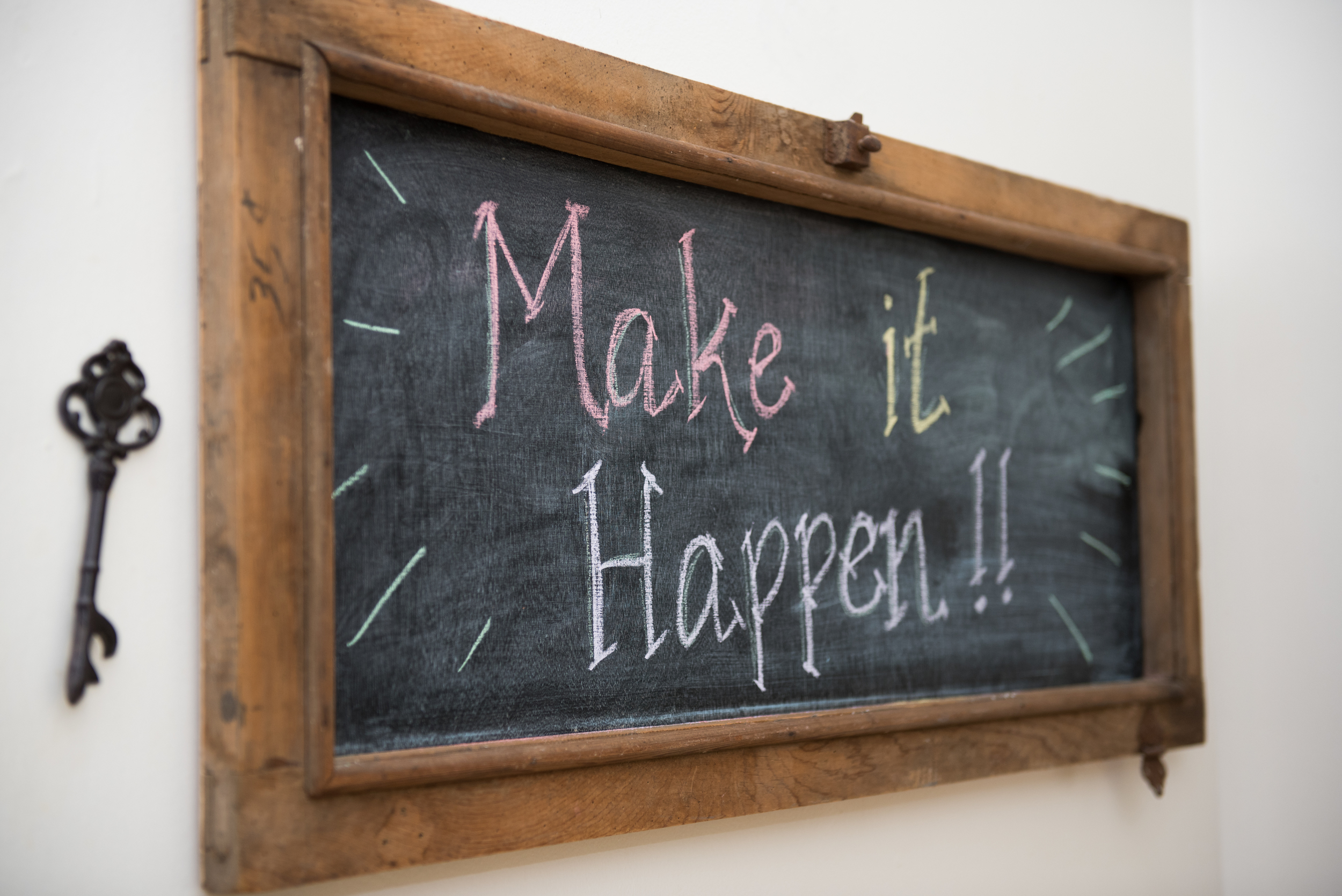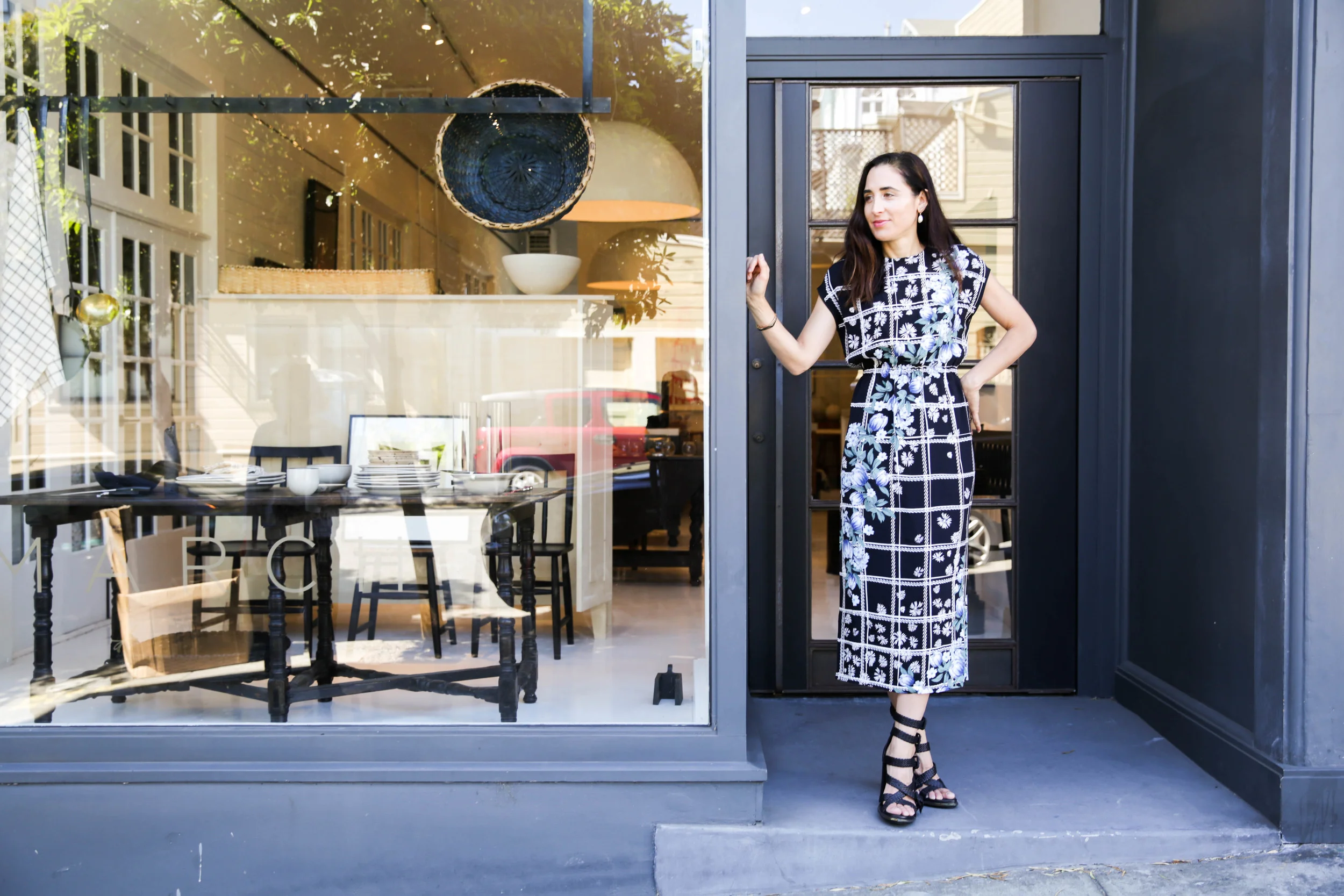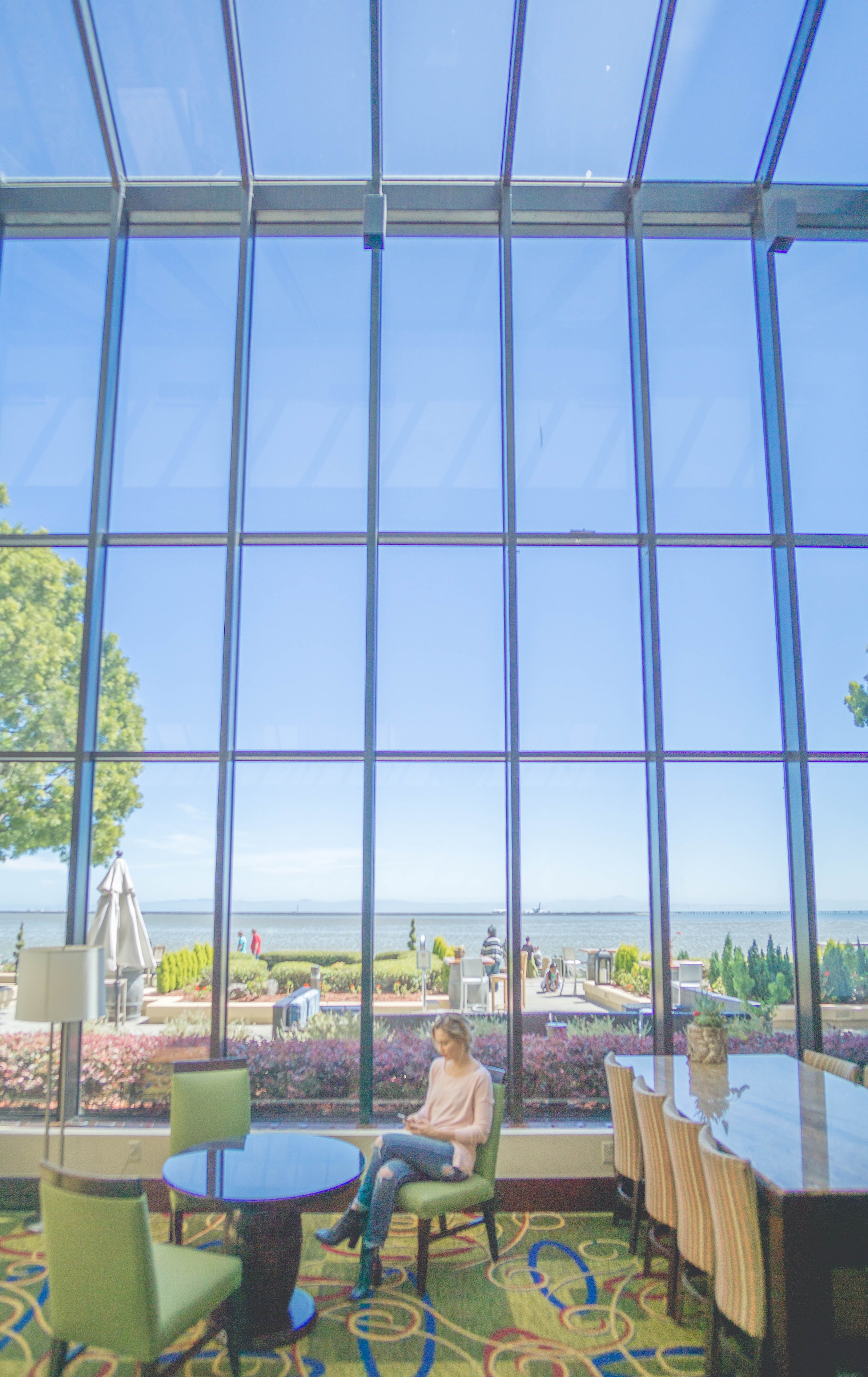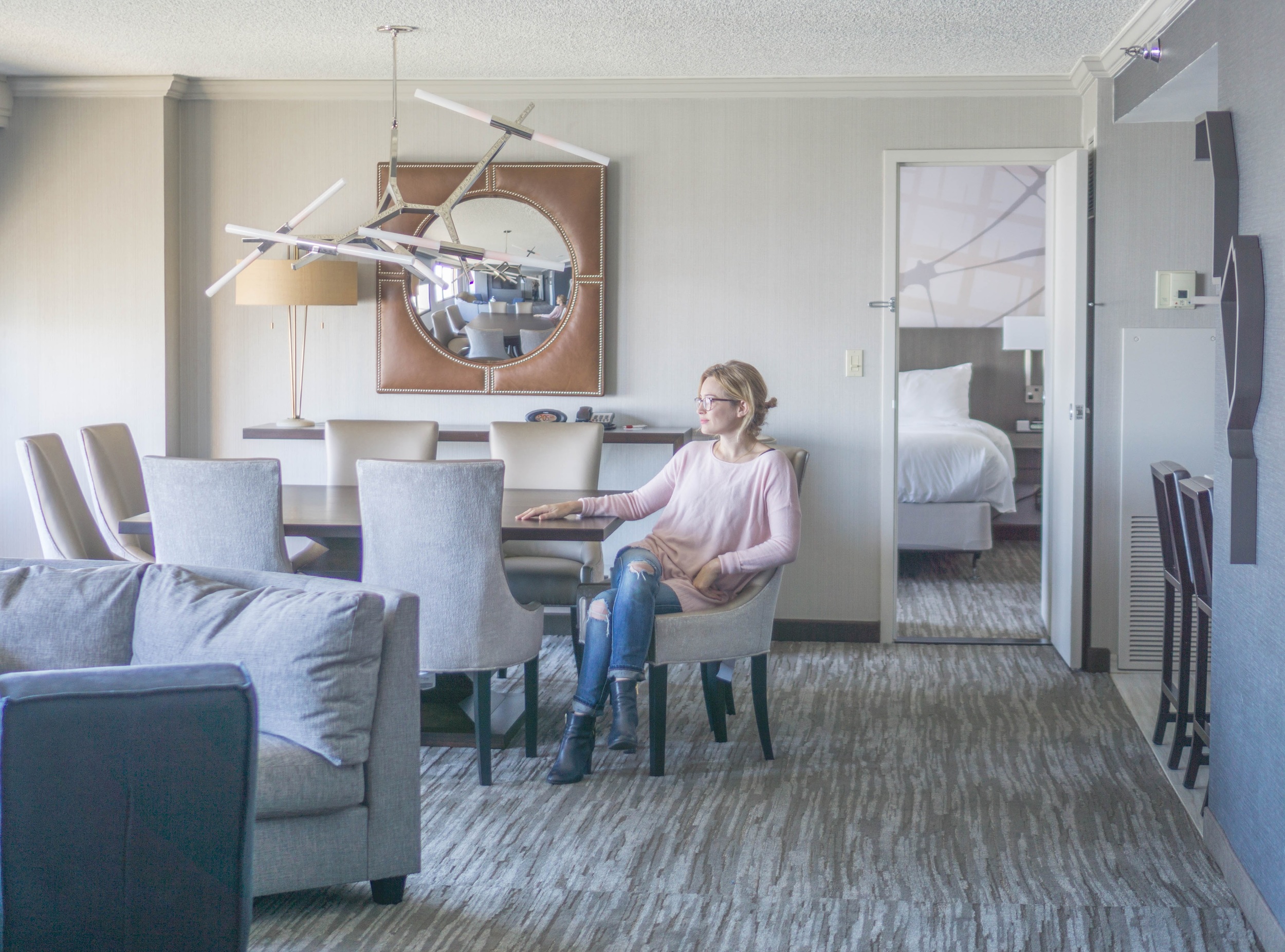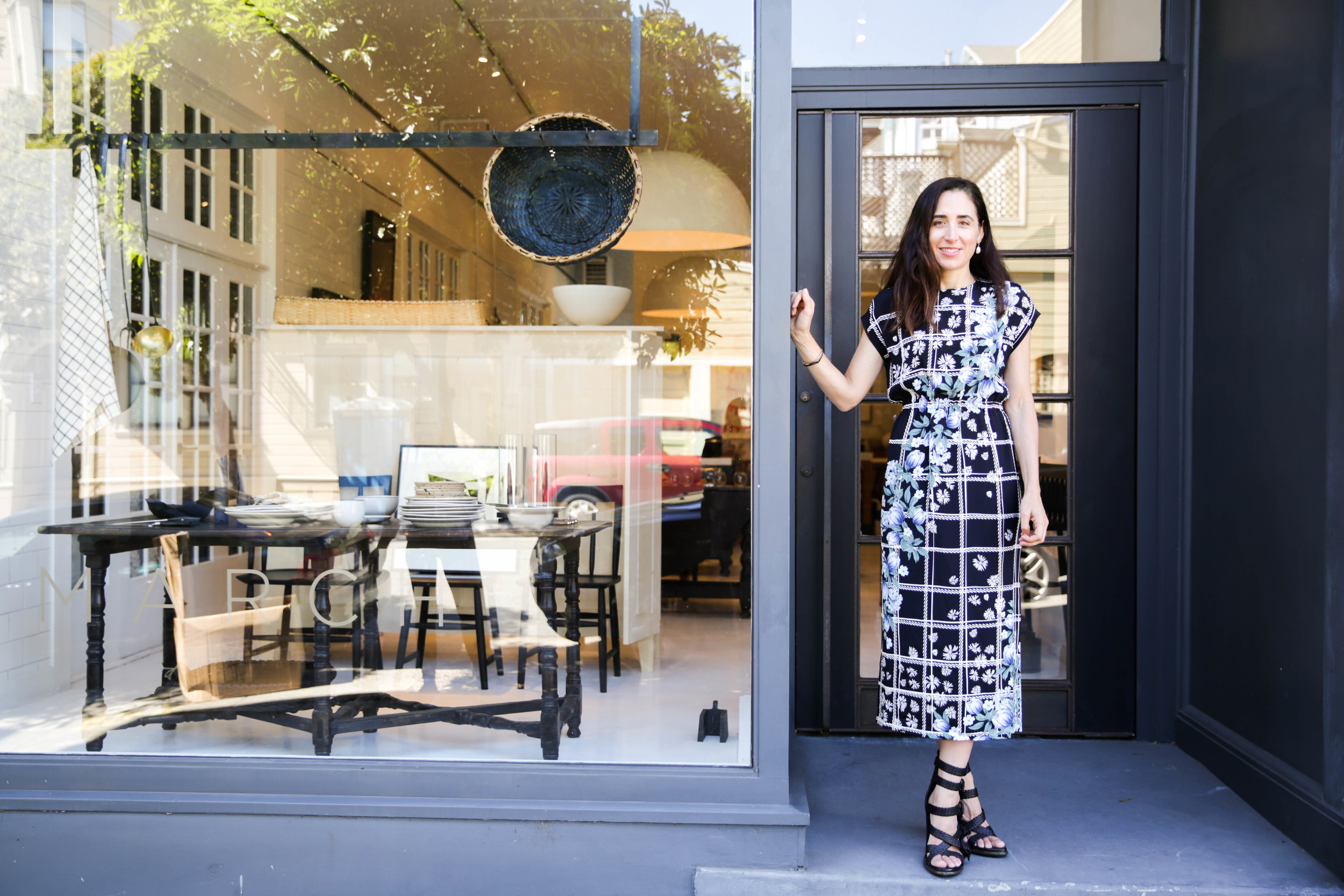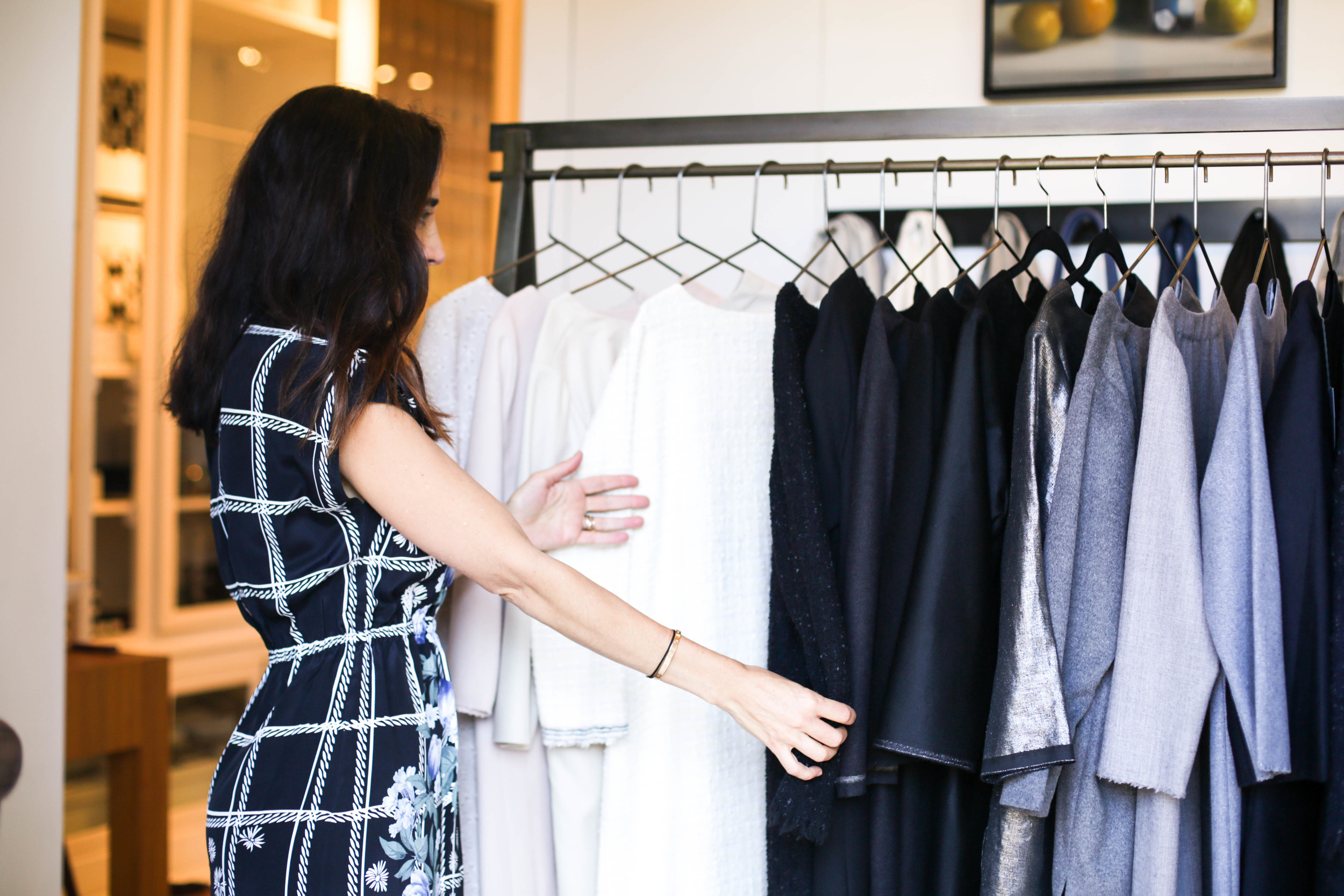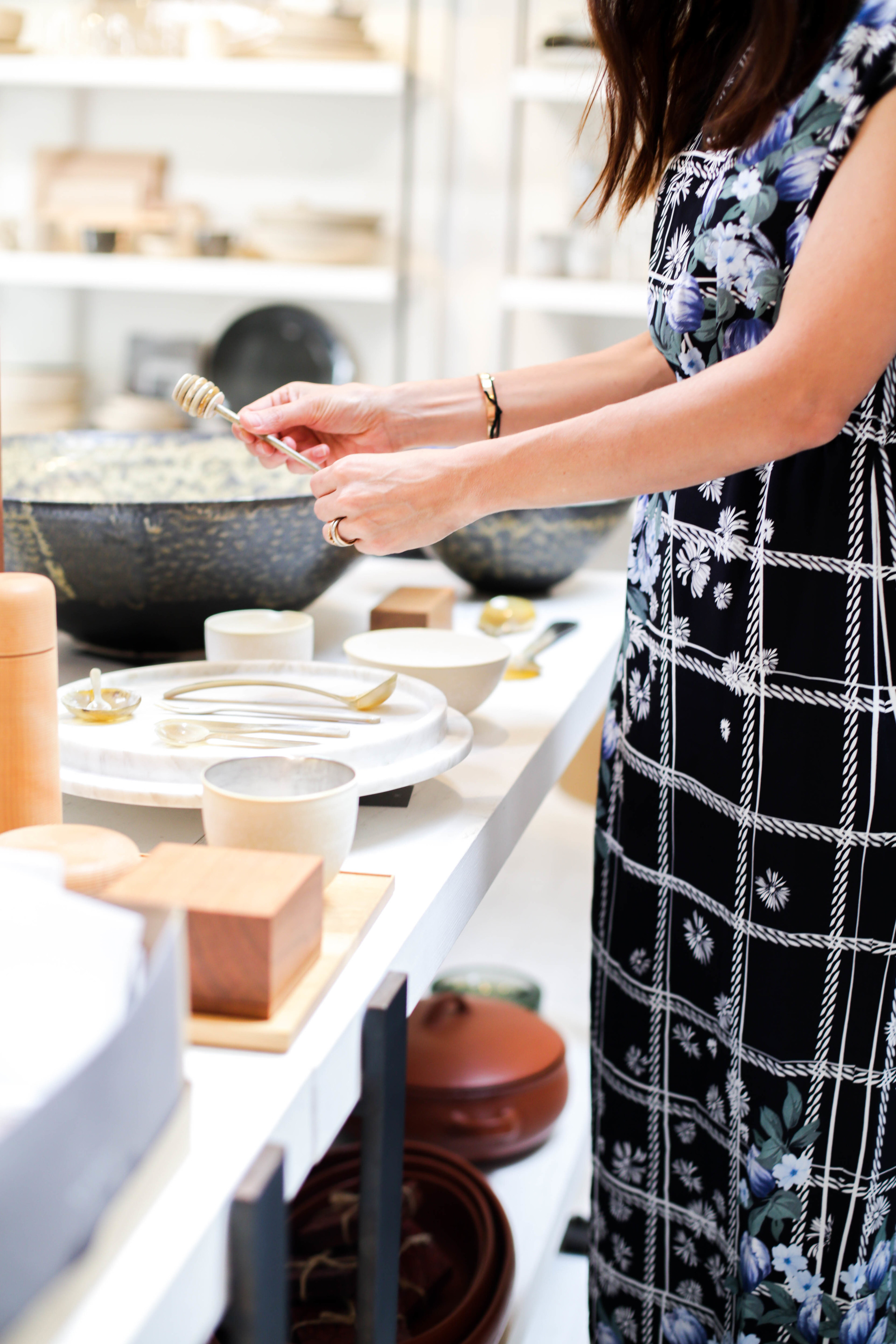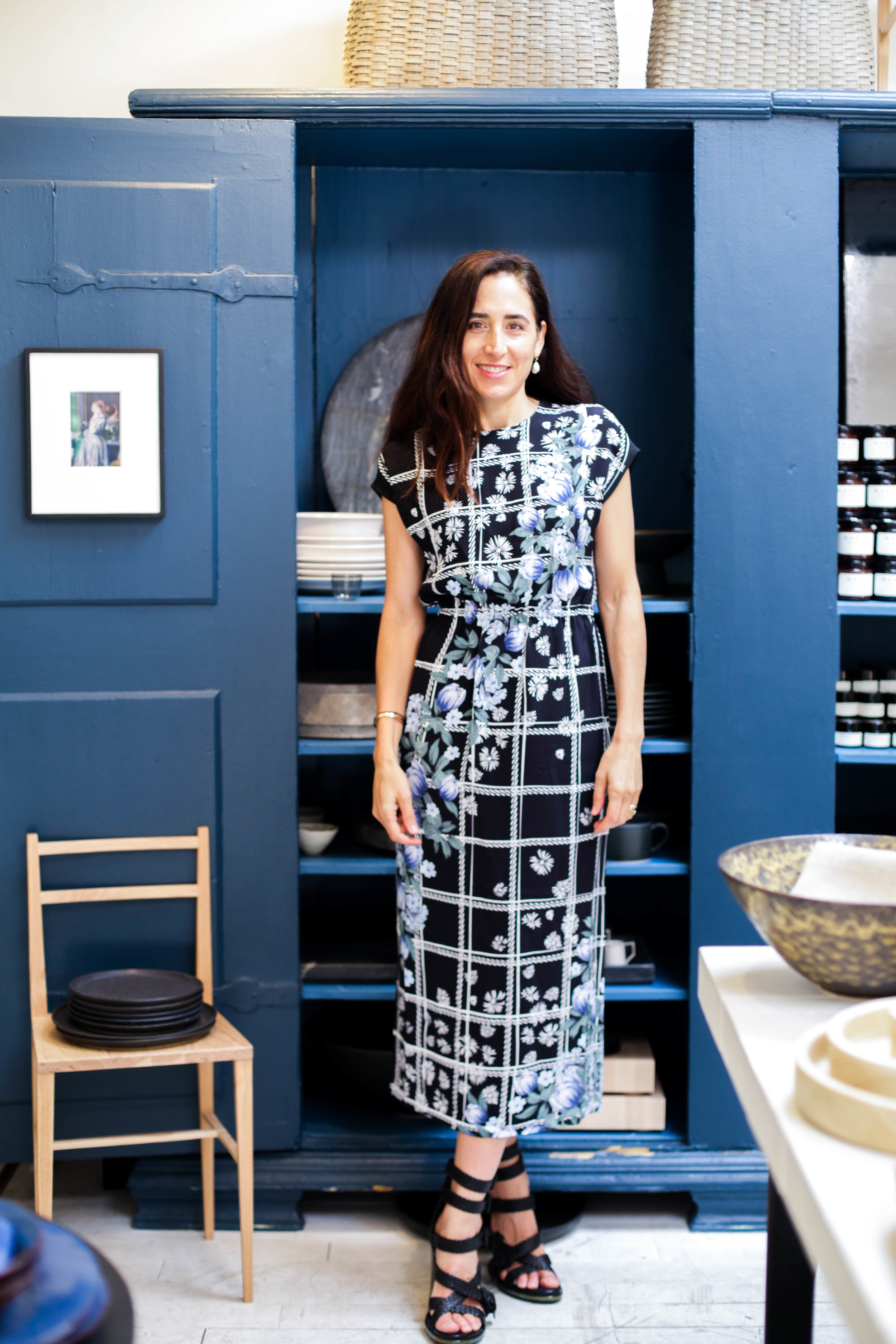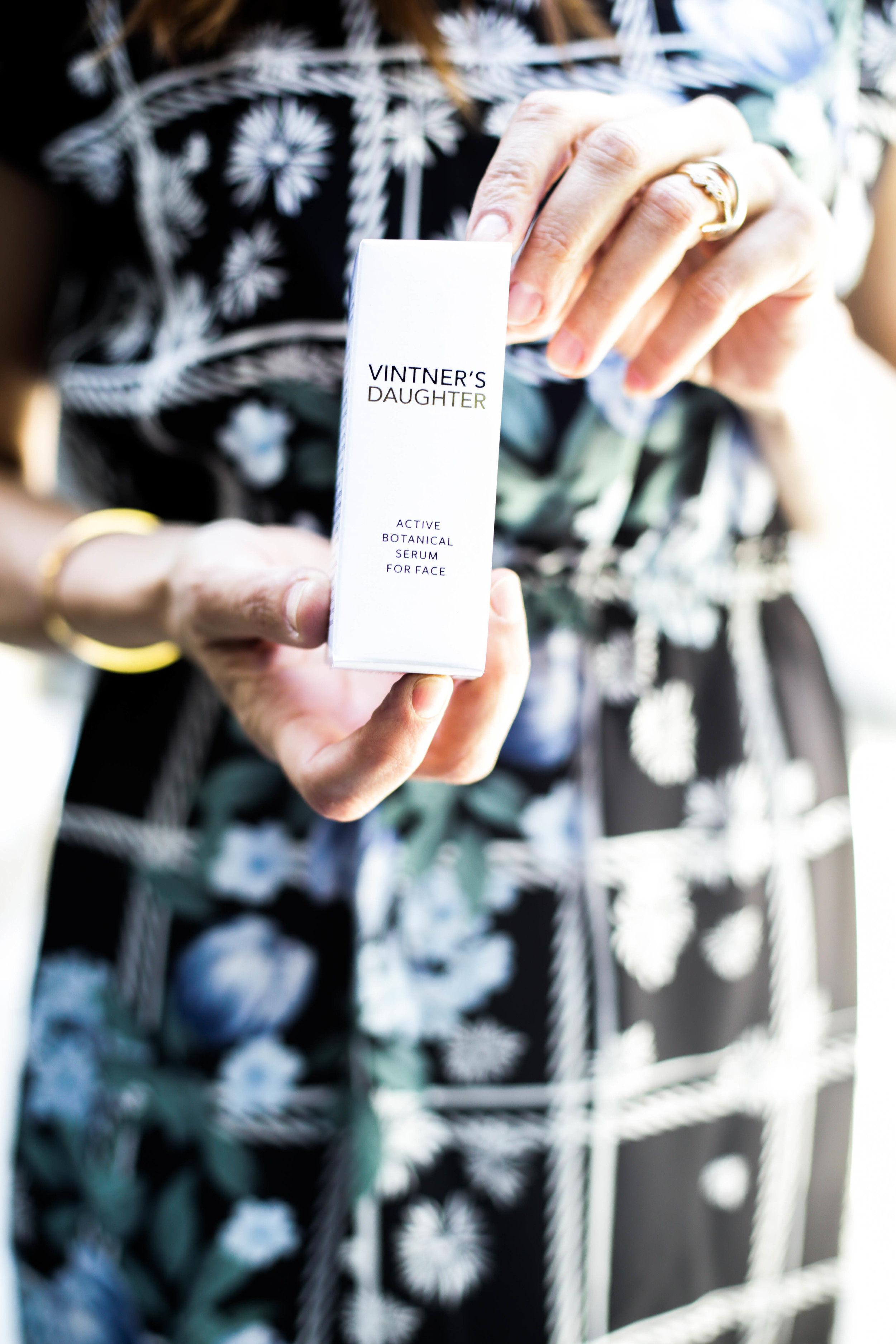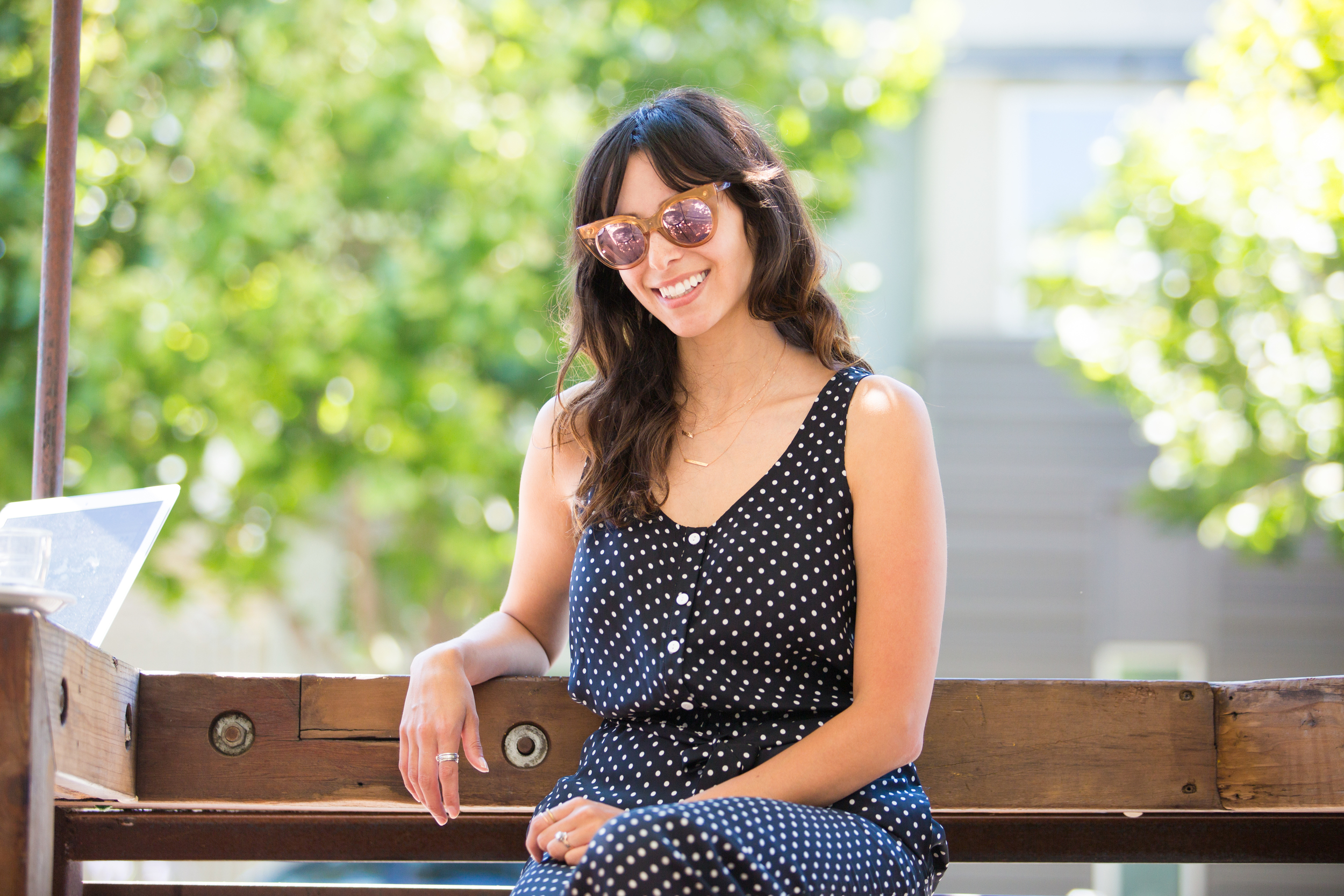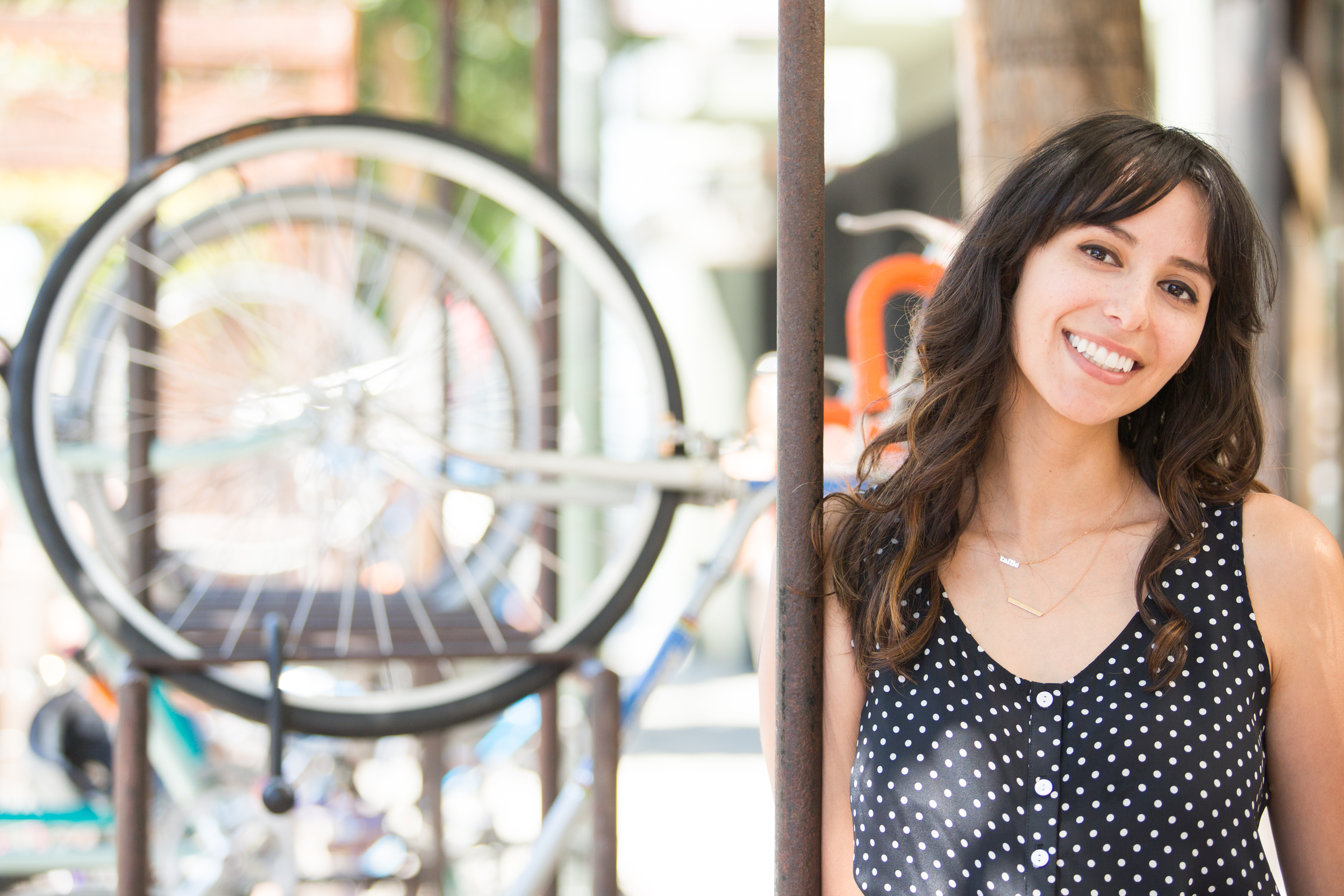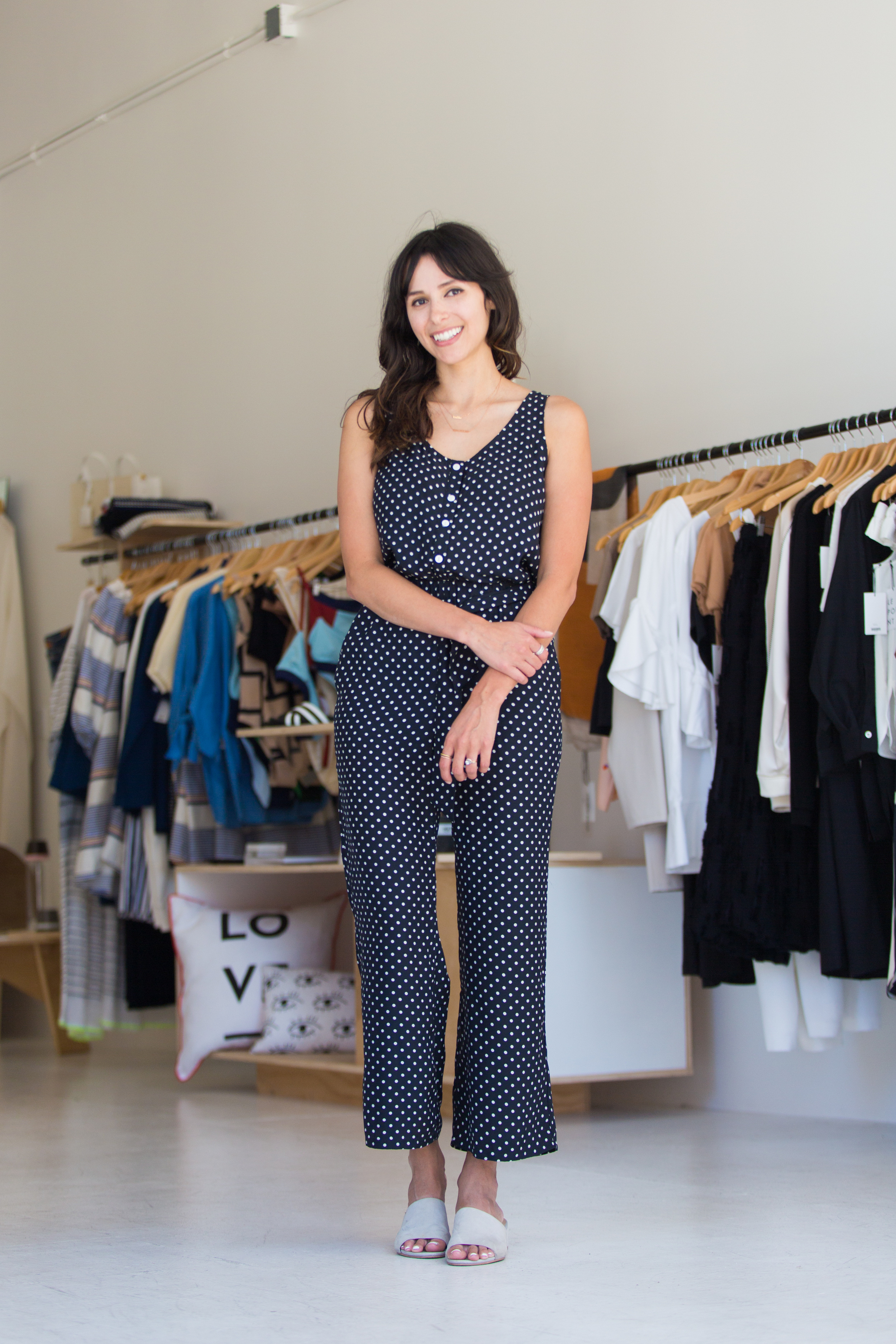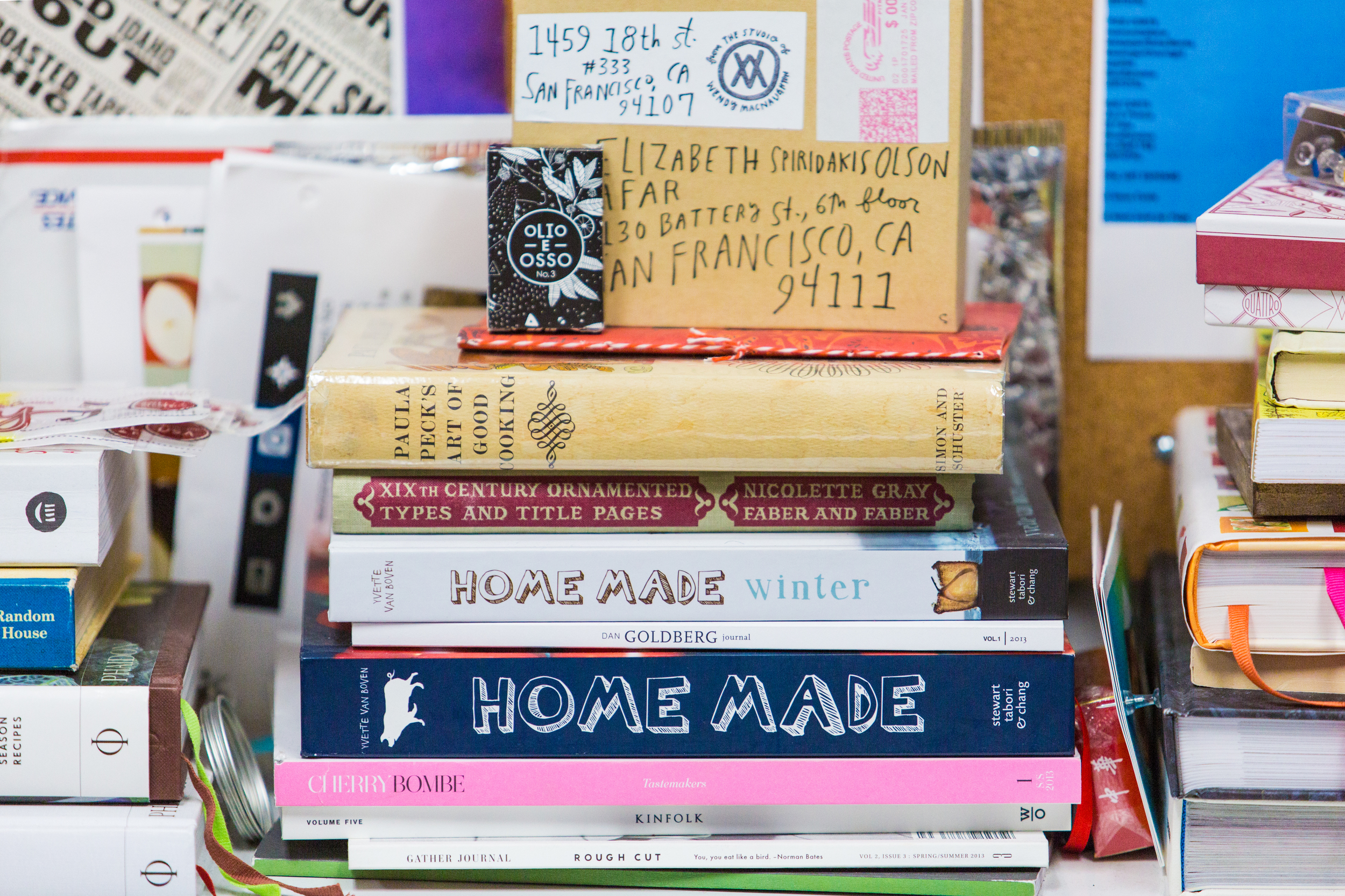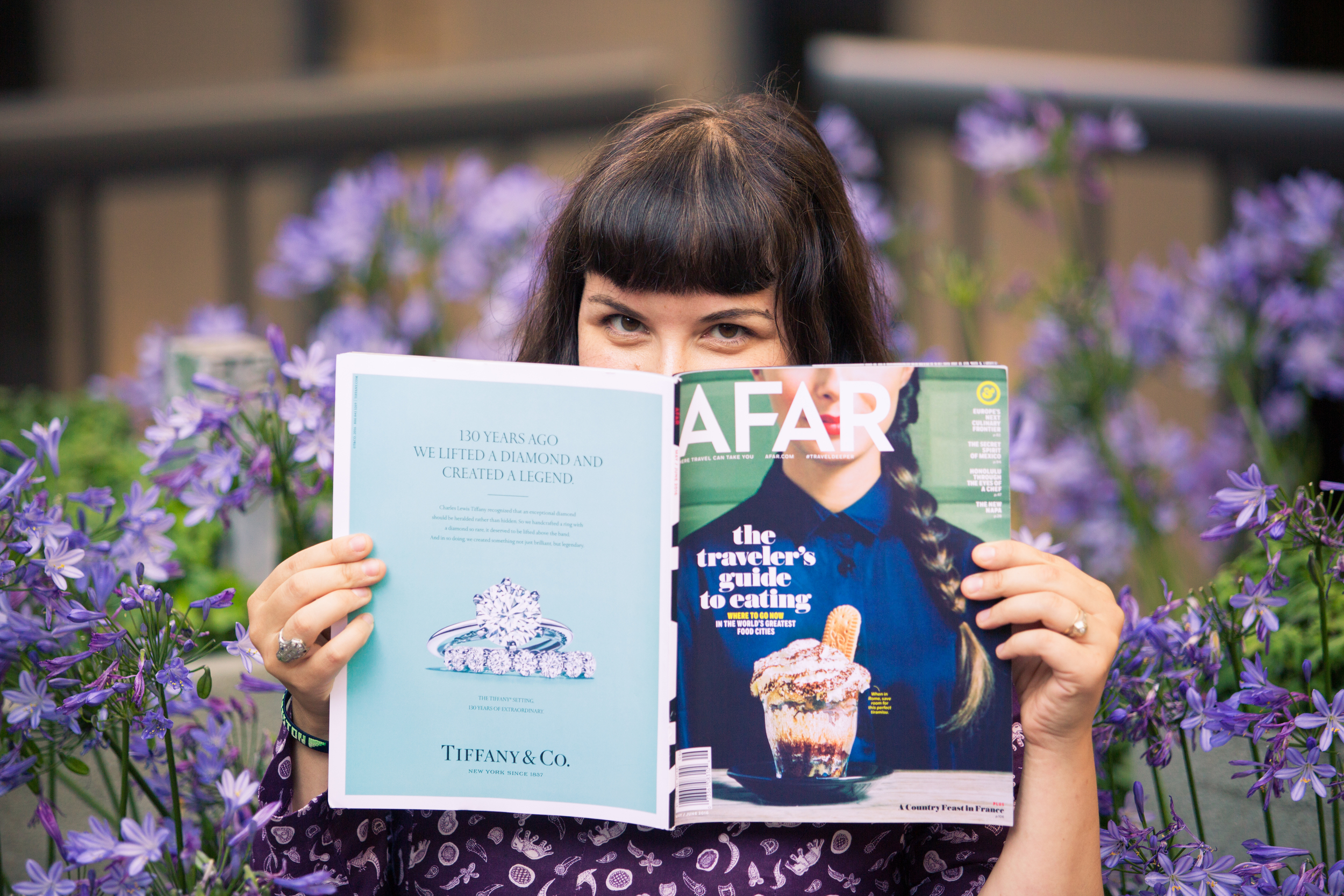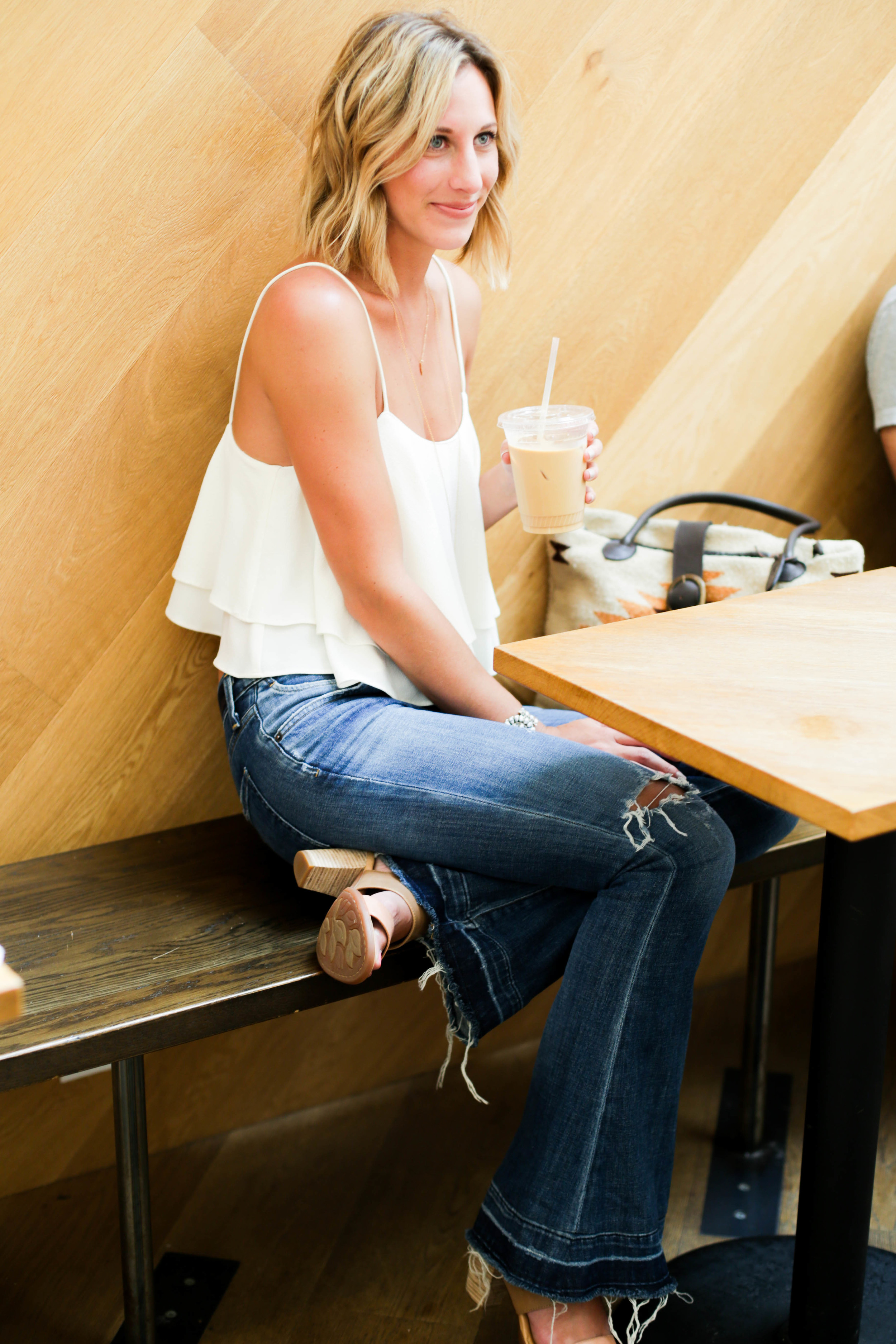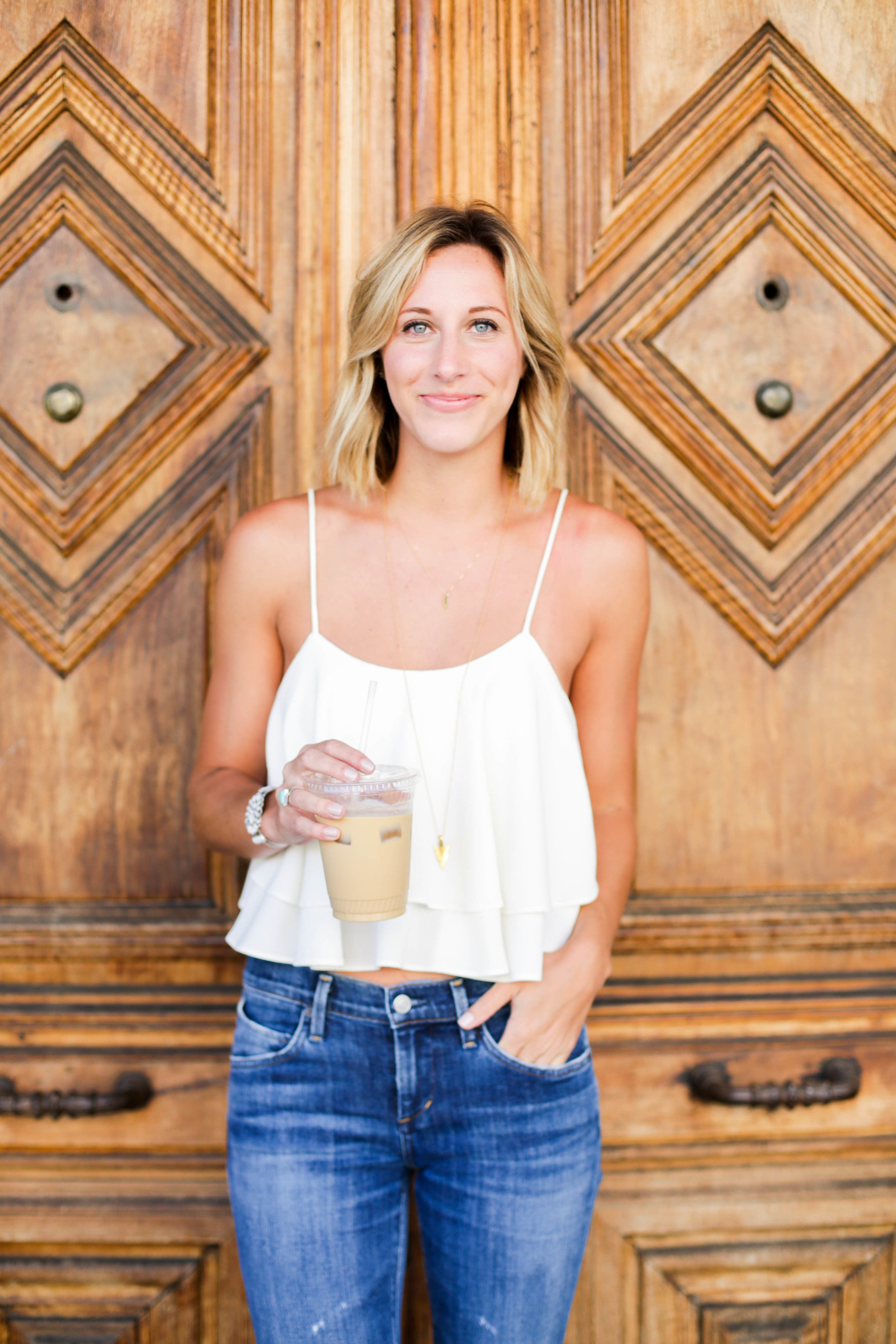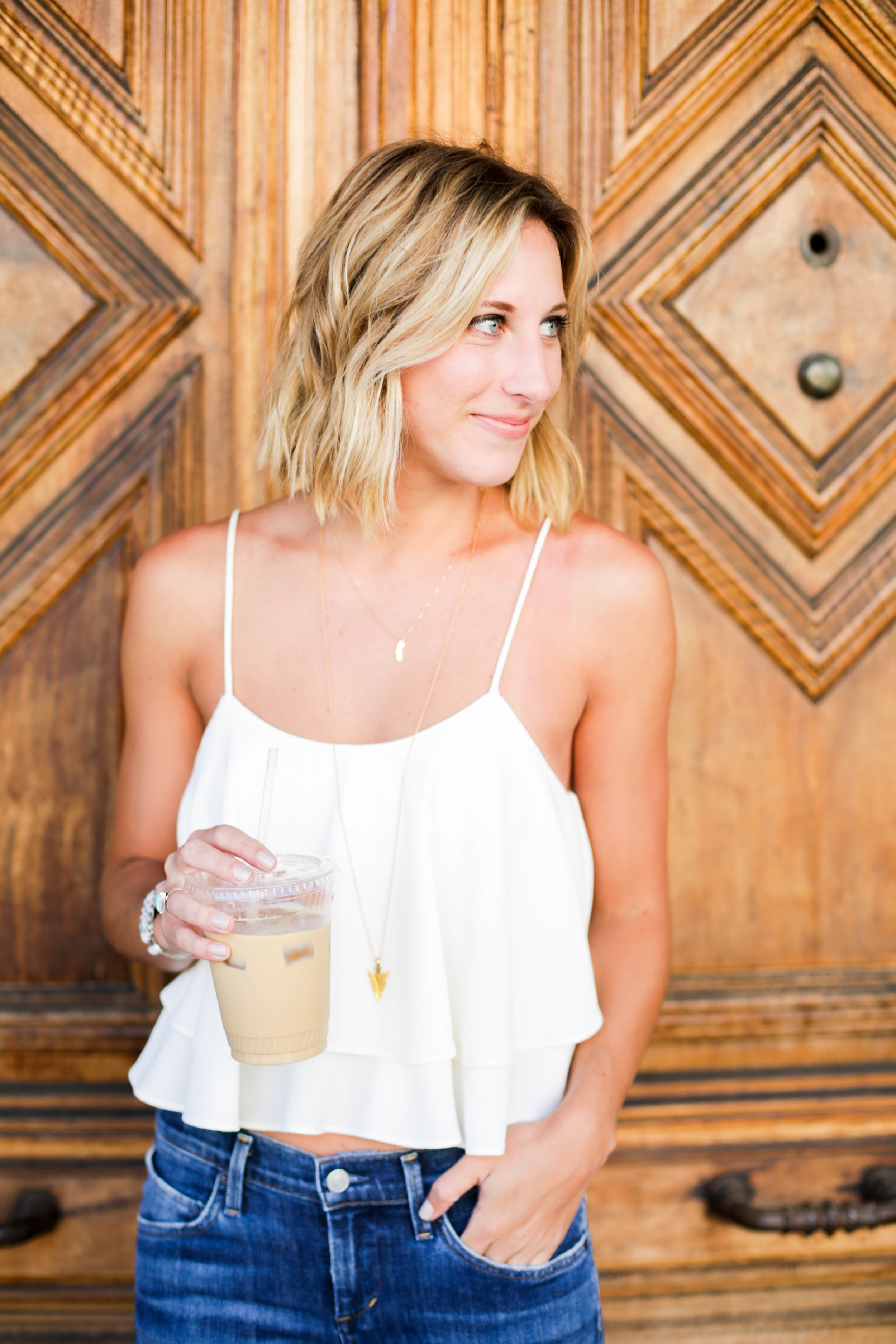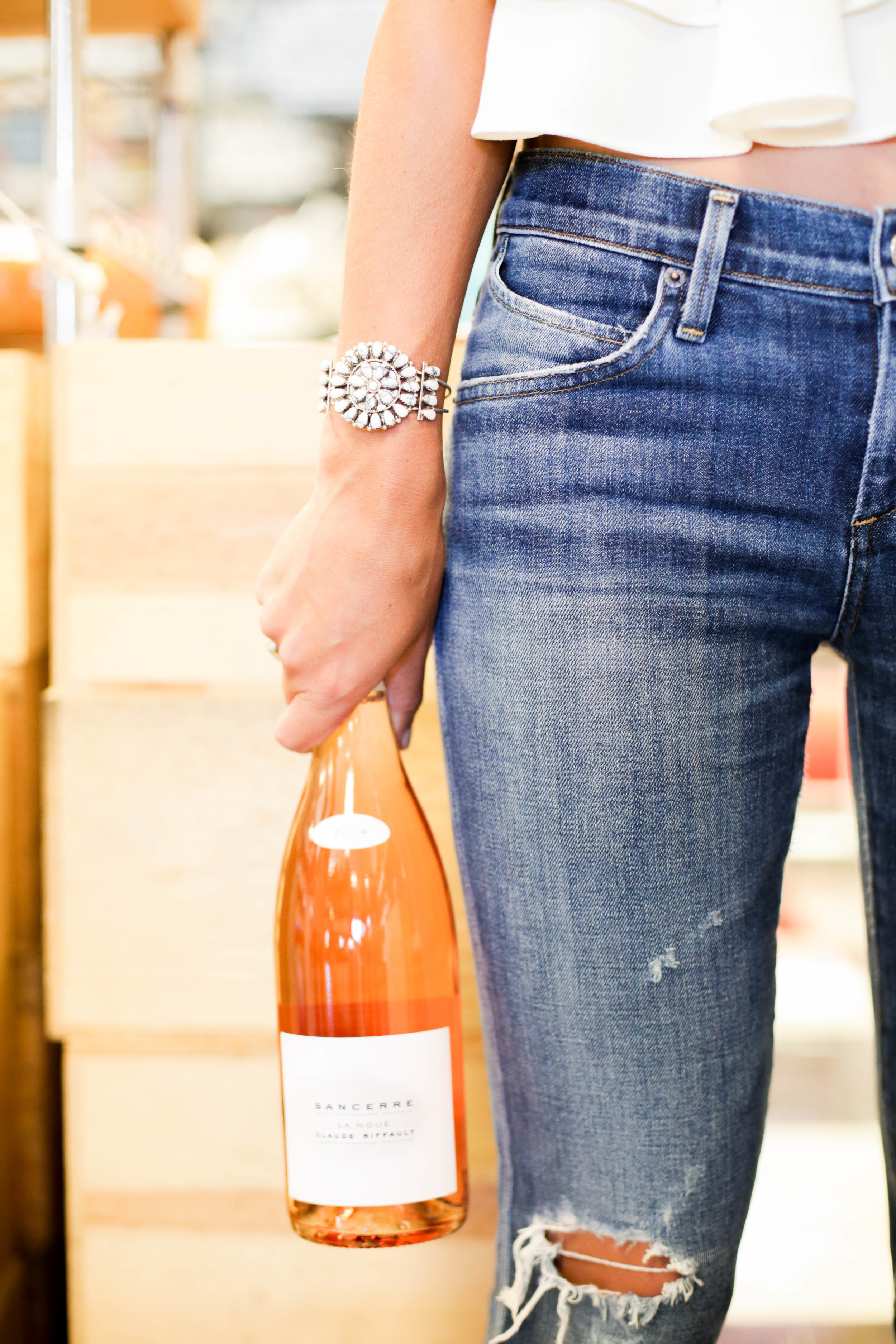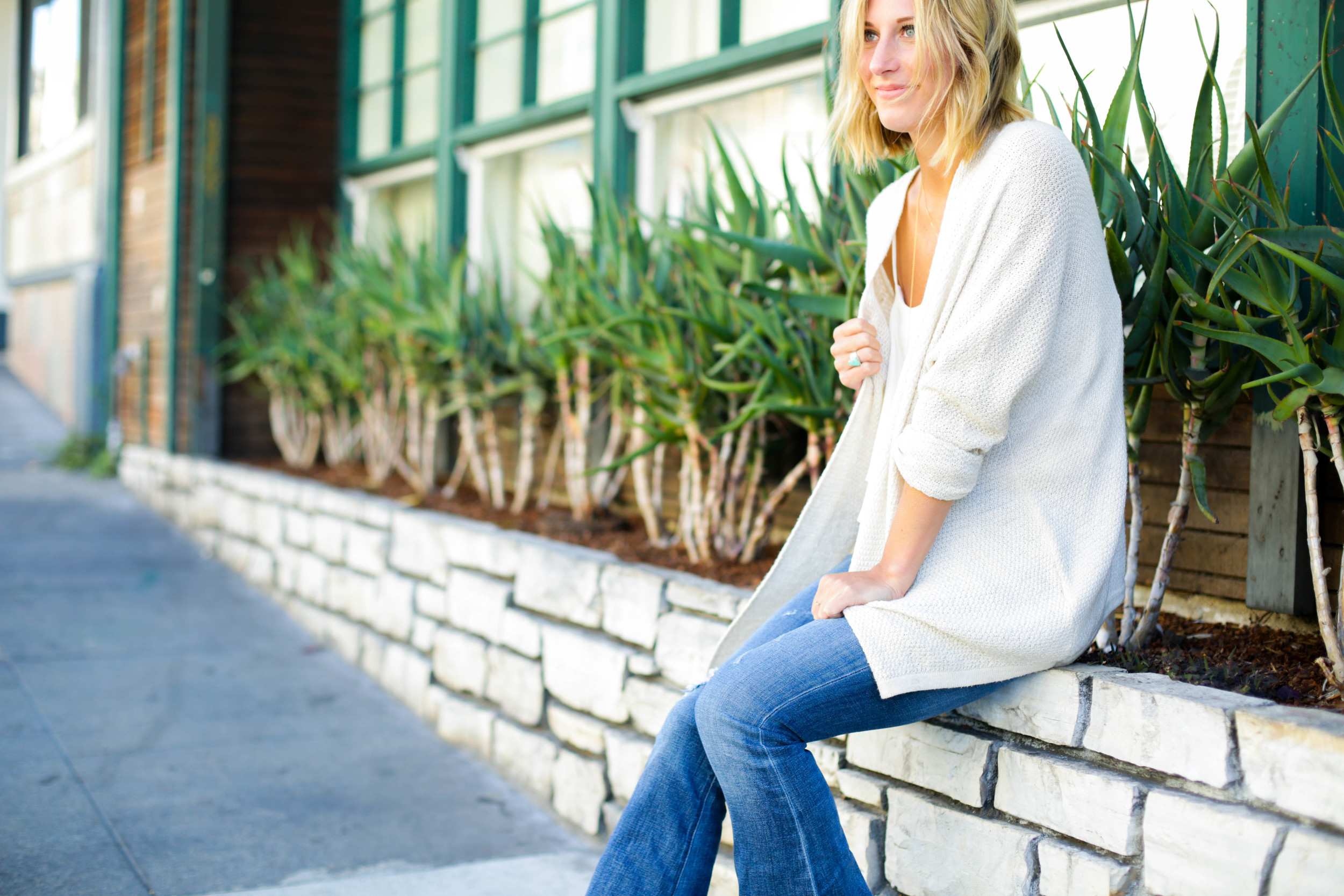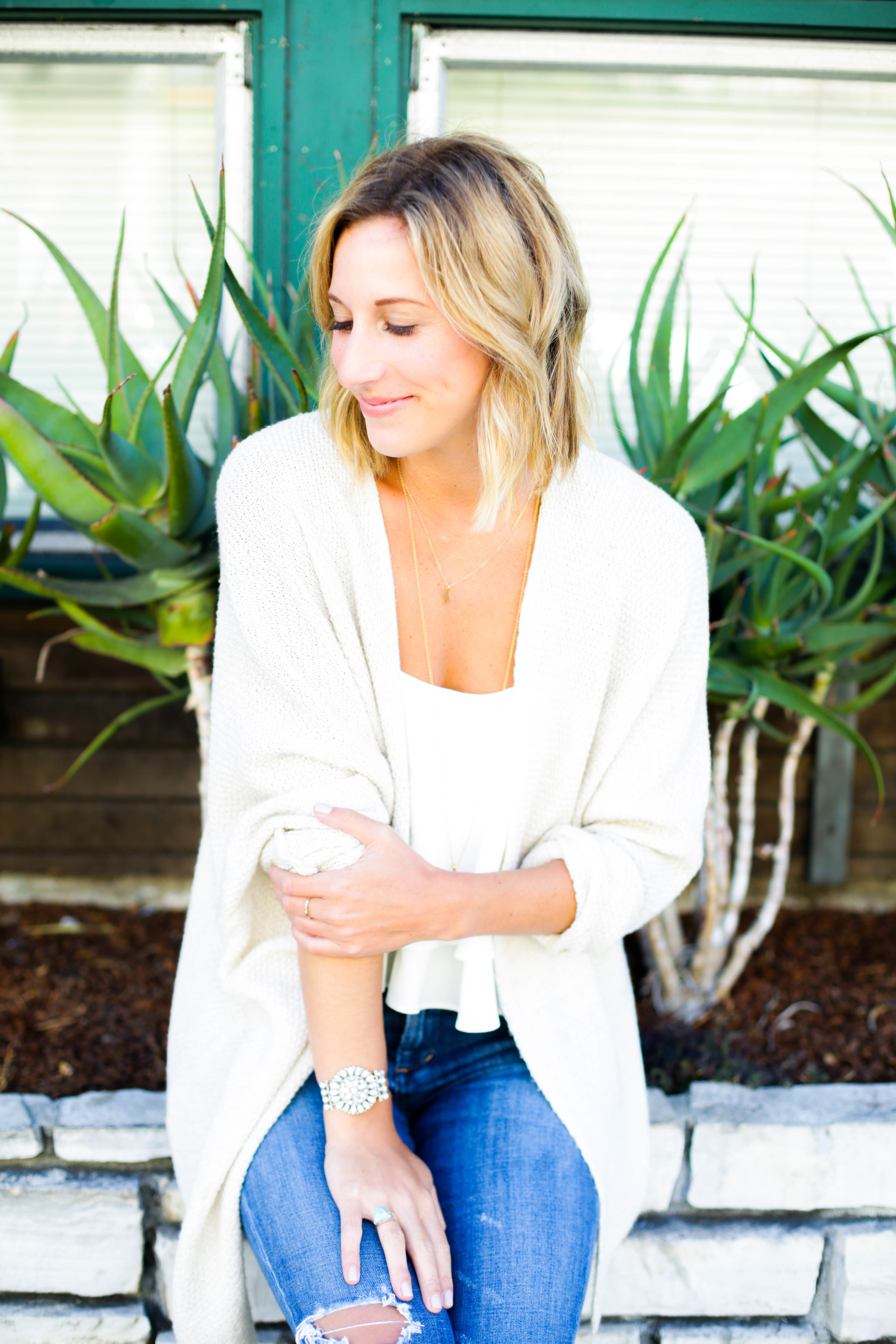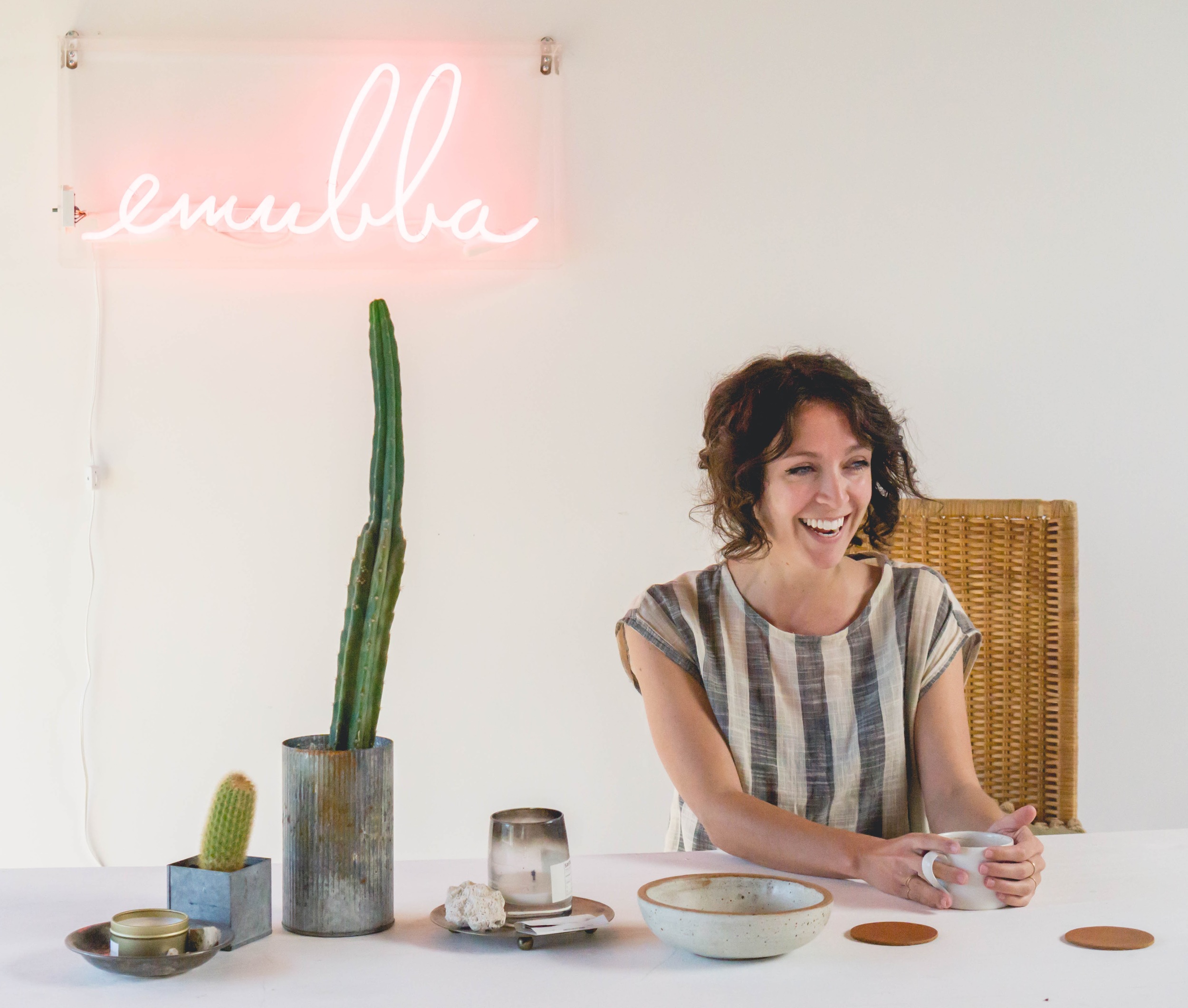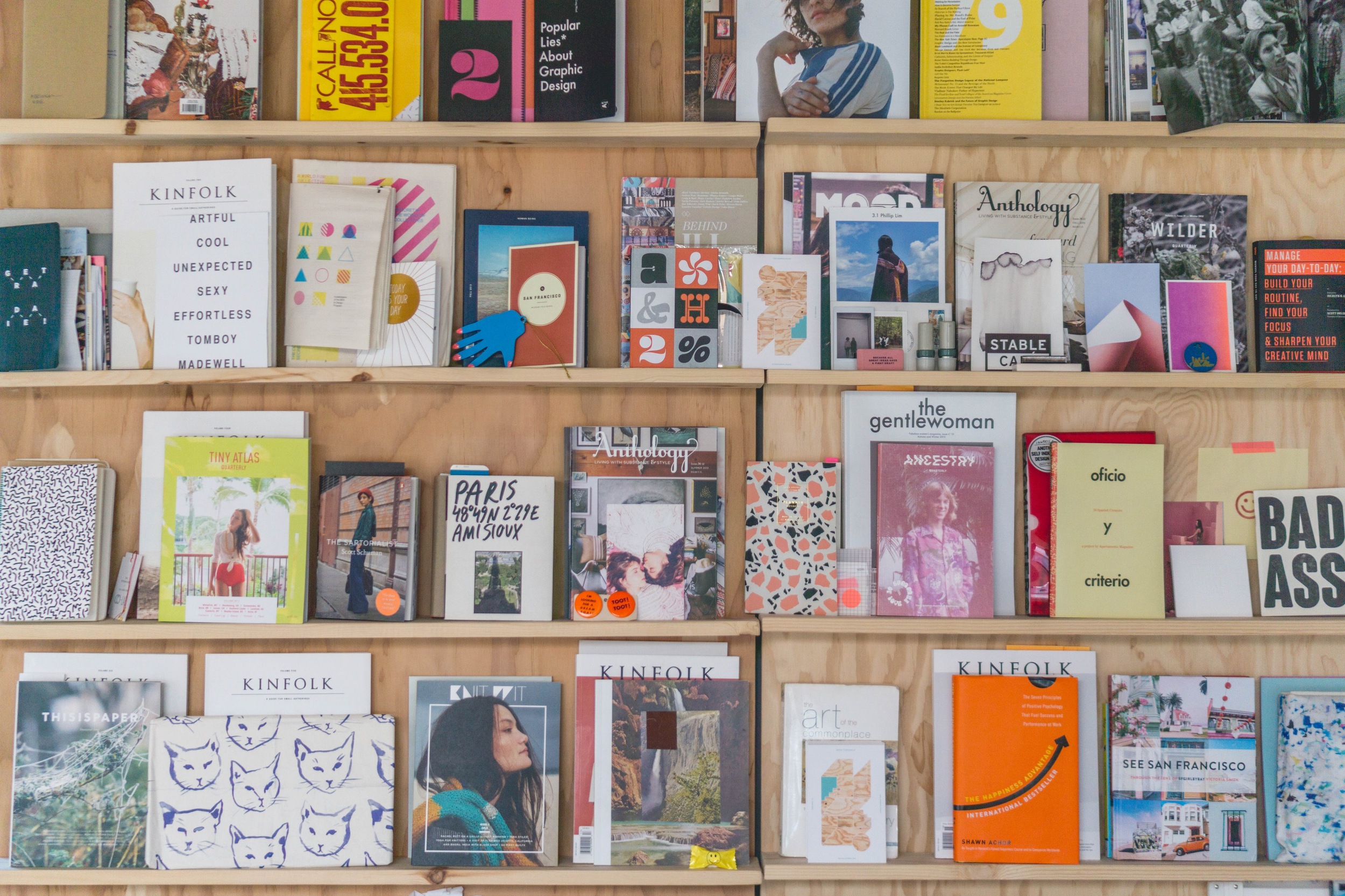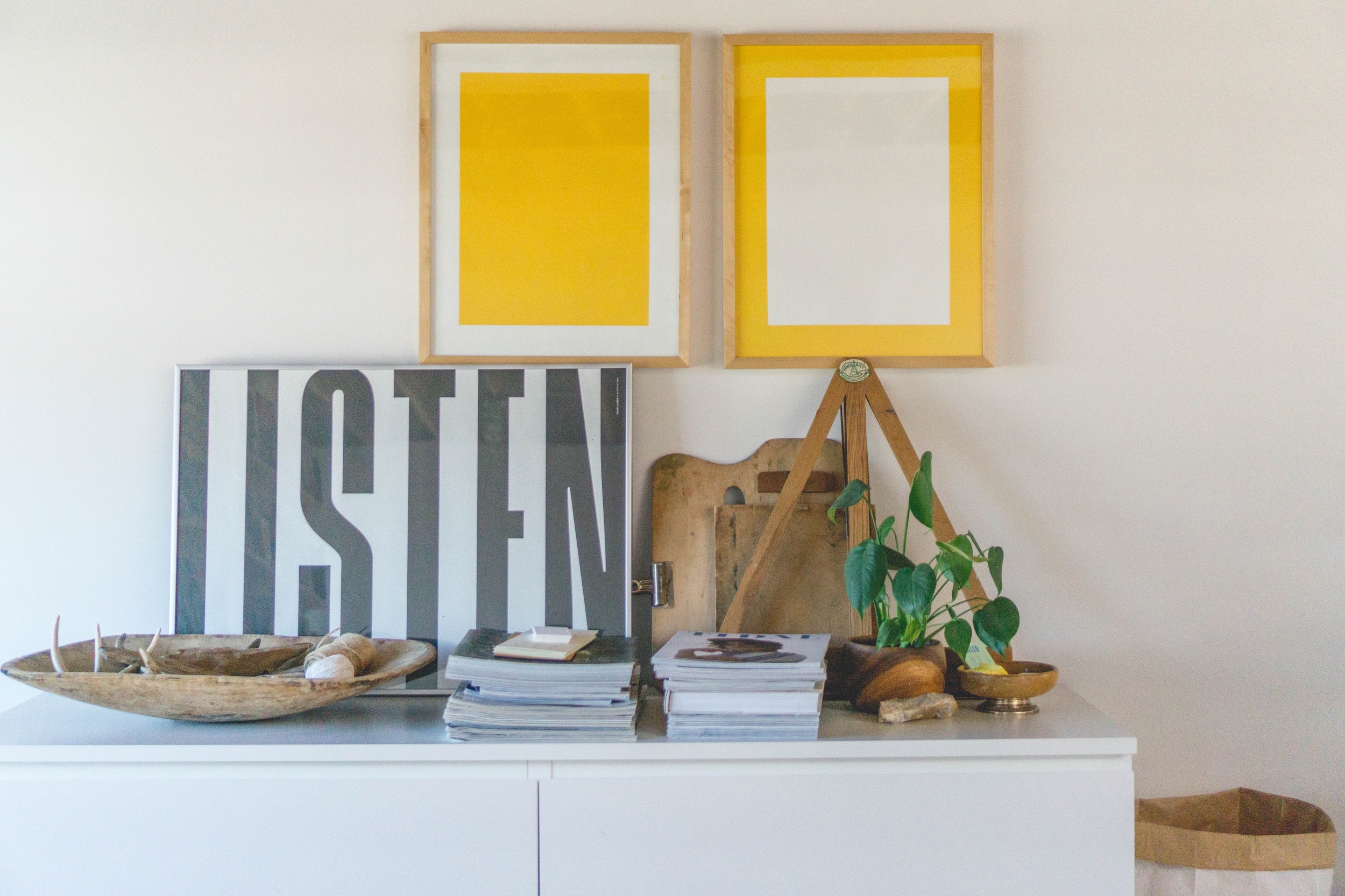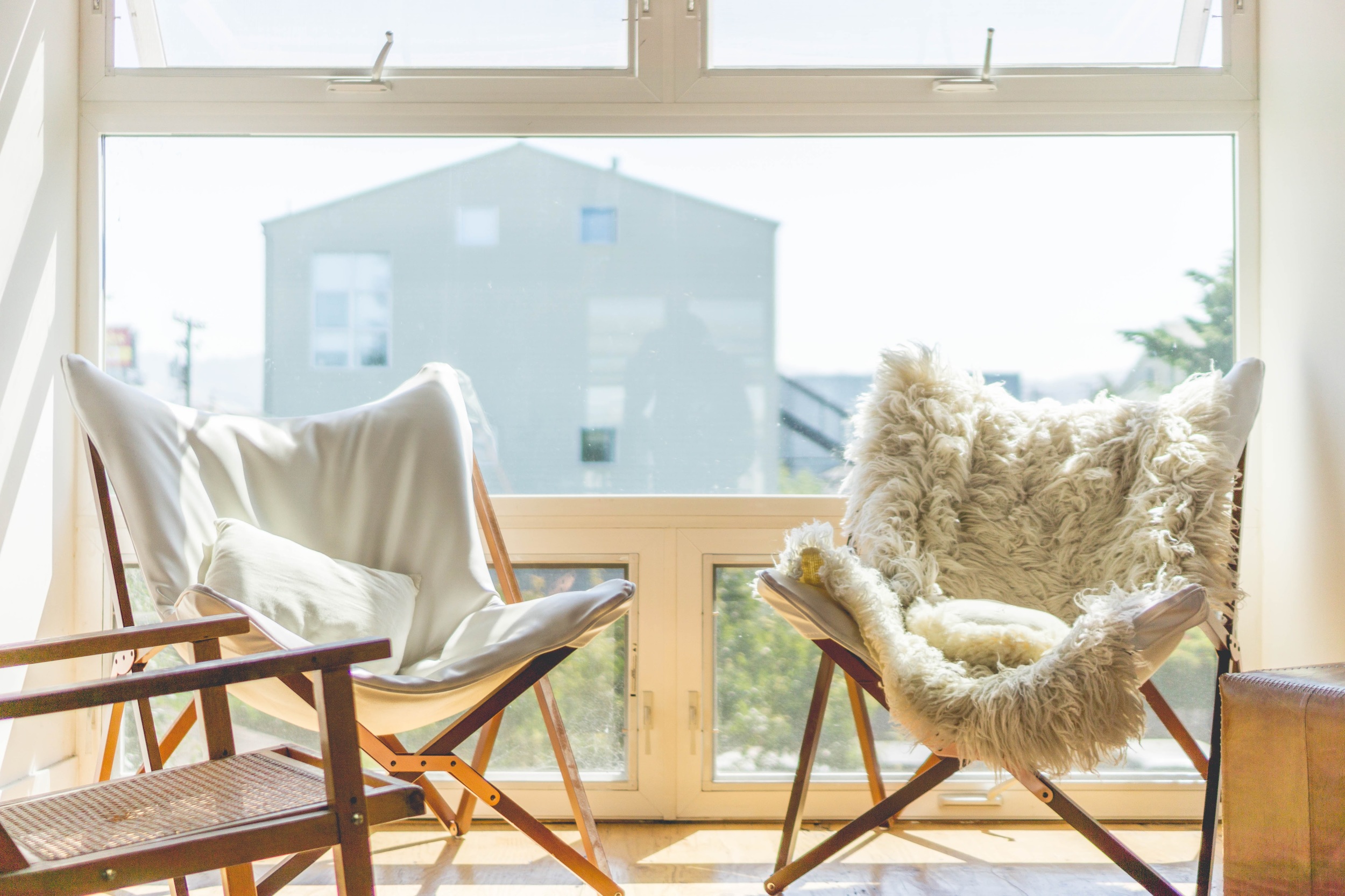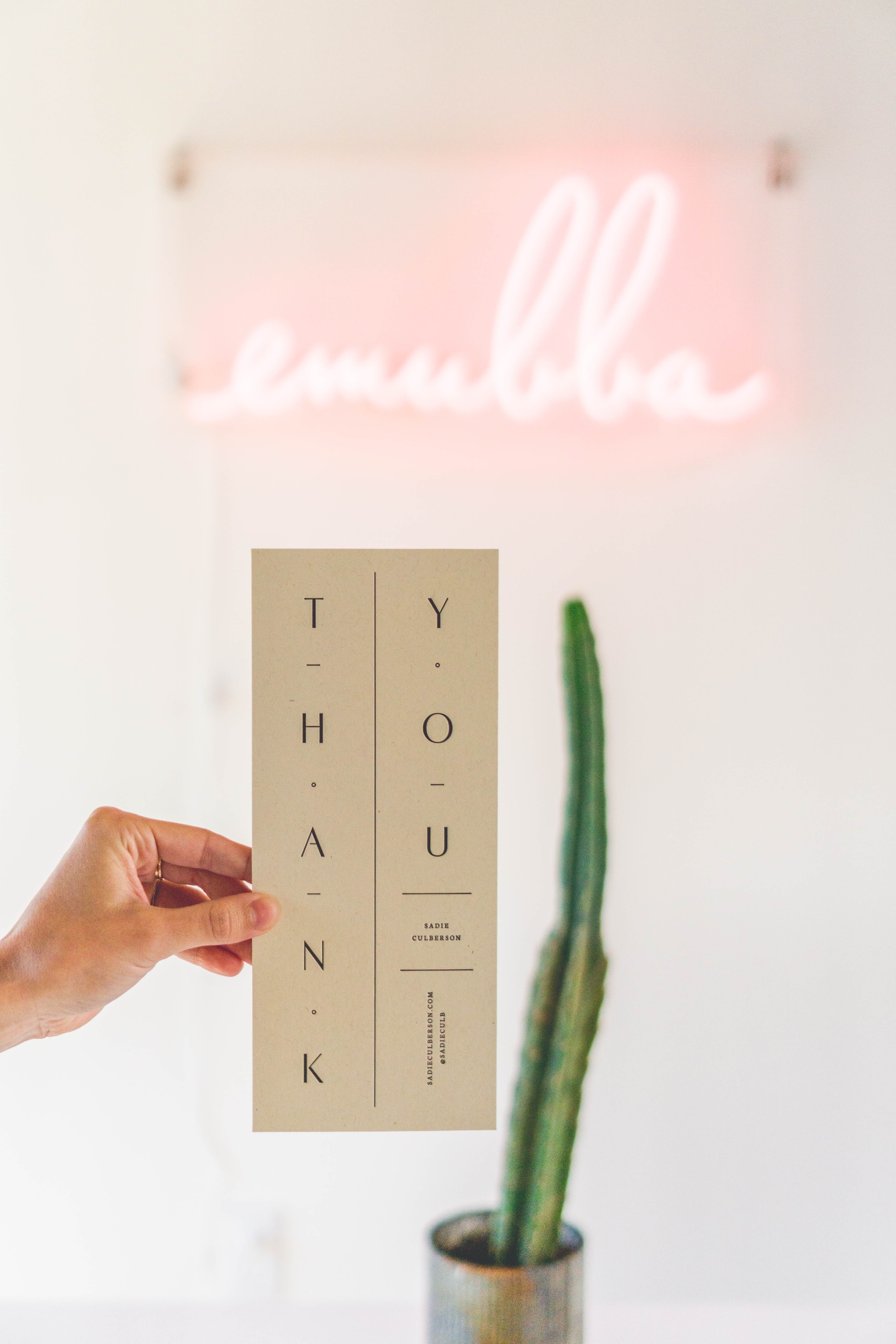Philanthropy: Lauren Conrad, The Little Market
The CEO with heart.
This article is part of our Create & Cultivate 100 List created in collaboration with KEDS, you can view the full Philanthropy List Here.
The CEO with heart.
Lauren Conrad is no reality TV has-been, to say the least. A decade later, and with her first child on the way, the former star of Laguna Beach and The Hills has parlayed a flare for on-screen drama into a fashion and retail empire complete with best-selling novels, multiple fashion lines, and, now, The Little Market, an online fair trade shop empowering a network of global artisans to rise above the poverty line.
With The Little Market, Conrad and partner Hannah Skvarla are supporting female artisans around the world by selling their handmade goods to socially conscious consumers who value ethical and sustainable manufacturing, not just stylish design. It’s a mutually beneficial partnership that allows customers to purchase beautiful, one-of-a-kind pieces while enhancing the lives of women makers — it’s a far cry from tube tops, spray tans, and beachside boy beef with Heidi Montag and Stephanie Pratt.
Appropriately, the journey to the Little Market began in Africa, home to many of the market’s skilled craftswomen. “When we were trying to come up with the concept for The Little Market Hannah and I were visiting a girl's school in Africa,” Conrad tells us. “While we were there, we had the chance to speak to a lot of the students. When we asked them if there was anything they needed their requests were heartbreaking. Water, vegetables, and a bed. At the very end of our visit it began to rain and the girls started dancing around. The rain meant that they would not have to make their daily four hour round-trip walk to get freshwater and they would be able to read their books in the daylight because they have no electricity and can't study at night.”
Building a marketplace for remote regions devoid of technology isn’t always easy, but Conrad forges ahead with the help of her team. “Language barriers, internet access, long lead times, and customs all can make the process challenging. Fortunately, we have an awesome team who always seems to get it done somehow.”
Moreover, in a culture that increasingly craves fast fashion, it’s all the more important for The Little Market to establish that resonant emotional connection with its audience — to showcase the people behind the product, the lives who benefit from the exchange. “The more a consumer sees value in the story behind the product, the more likely they are to take an interest it where it comes from,” says Conrad, who knows a thing or two about design and manufacturing, herself a Kohl’s fashion mogul. “Continuing to tell these stories and see products for so much more than they appear to be will encourage others to do the same. Whether it's a shoe made from reclaimed plastic or an artisan made product that can help send girls to school, sometimes the message is just as important as the trend.”
"I've learned the value in saying no and learned to delegate."
Tweet this.
As The Little Market continues to make big moves, Conrad navigates the murky waters of being your own boss — she even allows herself at least one day a week off. “Even though you often have to work through the weekend you can give yourself a Tuesday off. It's important to have time to focus on things that aren't work related and to clear your mind. I've found that I'm happier and more productive this way,” advises Conrad, who knits, hikes, and hits the beach with her pups in her spare time and says having a partner has helped her to become more selfless. She’s also learning to be less hard on herself. “There was definitely a point in my life when I took on too much and was burning the candle at both ends. Since then, I've learned the value in saying no and learned to delegate. It can be hard to trust others to work on a brand that you spent so much time on, but you can't do it all,” muses the soon-to-be-new-mama.
At the heart of The Little Market is its mission to support women artisans around the world, but let’s not forget the work that’s left to do right here at home. “Female empowerment means looking at being a woman as a strength not a weakness. Because let's be honest, we are pretty damn strong.”
Entrepreneur: Katie Rosen Kitchens, FabFitFun
Thought outside the subscription box.
This article is part of our Create & Cultivate 100 List created in collaboration with KEDS, you can view the full Entrepreneur List Here.
Thinking outside the subscription box.
Katie Rosen went from writer to business marketing guru, but you might be surprised to hear that prior to co-founding FabFitFun the mogul-in-making knew “next to nothing,” about starting a business. “This was a huge transition for me,” Katie shares. “I had over 10 years of experience as a writer. The editorial space felt very comfortable for me. But comfort hardly ever leads to true success.”
FabFitFun, a subscription box that delivers premium, full-size lifestyle products four times a year, is Katie’s most successful venture to date. Plus she says, “there’s been something truly exciting and satisfying about learning an entirely new skill set in my early thirties.” And the mom of two loves being an example for her daughters.
This past year FabFitFun nearly tripled its 2015 revenue, experiencing crazy growth margins. “I think investing in our team has been one of the leading sources of growth,” shares Katie, who also serves as the company’s Editor in Chief. She explains that in the past few years they’ve brought on “game-changing talent,” those that are “far smarter and more talented,” than Katie. That game-changing talent is predominantly female. 71% of the staff is female, their leadership (positions of director or higher) is 75% female, their senior executives (VP or higher) is 43% female, and their internal engineering team is 67% women. Katie notes, “Unfortunately, this is no the norm, especially in tech and startups, but we put real effort in finding and supporting talented women in our field.”
"Investing in our team has been one of the leading sources of growth."
Tweet this.
From their fantastic marketing and editorial teams to their team of data scientists who work to “uncover the products that really make people happy,” Katie has made investing in top talent a priority. “Research reveals a strong link between trying new things and happiness,” she adds, addressing the company’s desire to inspire happiness and personal growth through discovery. “We strive to nurture that link. I think that is what is ultimately driving new growth.”
But those growth margins have not been without growing pains. There are plenty of other subscription services on the market. “One of the challenges we face is helping brands understand why we are different and honestly better,” she says. “Once they participate,” Katie says, “they get it.” Almost every brand that has participated has asked to come back and be a part of another box. There are also days when the mom spends more hours at the office than with her family. But again, the upside comes back to people and the culture FabFitFun has built. “I’m happy we have built a team of such talented, dedicated and nice people who continue to inspire me and light with me every day.”
No matter how many hours she clocks, family remains at the top of her to-do list. With a teething nine-month-old who wakes her up multiple times a night, Katie looks to an example set by her parents, both children of blue collar families who were the first in their families to go college. Both still work. “My mom was the true definition of an amazing, successful working mom,” shares Katie. “She got her PhD while I was in school but still found the time to be a great mom and encourage me every step of the way.”
“I have to believe that women can have a career while still balancing a wonderful family life,” Katie hopes. Though it means that her barre card is covered in cobwebs, dinner consists of stir fry and quesadillas, she’s fine giving up certain things if it means she’s home to cook her kids dinner and put them to bed. “That means I’m back on the computer at nine,” she admits, “but it’s worth it.”
In 2017 FabFitFun will focus efforts on more personalization and customization. Katie believes it is a core factor in satisfaction and growth. She’s also focusing on building on content to bring the program to life, which includes treated members to exclusive perks from partners throughout the year. She also believes that the subscription box model will continue to grow, even though a day subscription service pops up every day. “I believe less traditional forms of subscription services will continue to emerge. And the need for better and more personalized customer service will lead to innovations in the market.”
It’s hard to believe there was a time in Katie’s life when she thought her only real possible career was as a writer or editor. “It was my big dream,” she shares. “And it was very scary to think about doing anything else.” But embracing the change is part of life. Besides, shares Katie, “you can’t please everyone and you will be boring if you try.”
Styling provided by Reservoir LA. Hair and makeup provided by Glamsquad. Photography courtesy of Light Lab and Woodnote Photography.
Brushing Up: You're Waiting Too Long to Swap Your Toothbrush
And what this new company is doing about it.
Claire Burke wants you to brush better. Which is why she and Goby, co-founder Ben Goldberg, are sinking their teeth into the business of oral hygiene. It may not sound like the sexiest venture, but it's one full of possibility. Last week Goby launched their first product, the first-ever direct-to-consumer rechargeable electric toothbrush combining unprecedented value and convenience. The toothbrush is available for $50 with a subscription and replacement heads start at just $4. The charging station has no cords and is designed to minimize post-brushing build-up. Sound like a dream clean?
We caught up with the entrepreneur to talk why teeth and how Goby is changing the game.
Can you tell us a little about your background? How did you end up as the co-founder of Goby?
I graduated from NYU’s Stern School of Business before working at investment bank Lincoln International for six years. Simultaneously, I pursued my personal passion for film and media by co-founding a production company. In 2013, I left investment banking to pursue an MBA at Columbia Business School. While at Columbia, I immersed myself in media and technology, working for The Raine Group, Hearst, theSkimm, and Female Founders Fund, each of which expanded my interest in startups and exposed me to the value and power of brand. I met Ben through a mutual friend from business school and was immediately drawn to the Goby mission. Deemed “Cavity Claire” by my family growing up, I was inspired by my own struggles with good oral care and was determined to enhance consumers’ oral care experience by creating a value-driven oral care product with a relatable brand personality.
With Goby you’re hitting a few of major markets and key trends— direct-to-consumer, health and beauty, and the membership business model. We’ve seen many businesses go this route. Why was now the right time for teeth?
We saw a significant opportunity to disrupt oral care because oral health is an overlooked space in health and beauty. Oral health is important! Many diseases have oral manifestations, oral issues are the leading cause of missed school and work days and 50% of people aged 30 and older have some form of gum disease. Leveraging the direct-to-consumer / membership business model was a natural starting point for us to enhance the brushing experience for consumers across the country. The average consumer changes their toothbrush every nine months as opposed to the dentist-recommended three months, so we offer a subscription to ensure that our customers can keep both their mouths and brushes clean without having to worry about running to the drug store.
"The average consumer changes their toothbrush every nine months as opposed to the dentist-recommended three months."
Tweet this.
What went into research and development? How long did it take from concept to product?
We tested all the various models on the market to determine which features were necessary and which were superfluous. We assessed dozens of other products, surveyed friends, family and colleagues and ultimately designed a product that fits seamlessly into the modern consumer’s lifestyle. From concept to product, it took about two years.
Why was the design element so important?
Design was important because it folds into so many aspects of the value proposition -- creating something intuitive and user-friendly that breaks through the currently overcrowded and over complicated market, ultimately providing the consumer with the best possible brushing experience at a fraction of the price of the competition.
How do you get people to look at something that they’ve used their entire life and think about the possibility of doing it differently?
It wasn’t as much about rethinking, but rather maximizing the consumer’s time and taking the onus off of the consumer -- having them think less about brushing and replacing, while simultaneously improving the quality of their brush and ultimately the state of their oral health.
Was it a hard sell?
We had been working on Goby for nearly two years, bootstrapping the vast majority of the way. The funding process was definitely not easy, but fortunately, our investors appreciated the problem we were trying to solve because they experienced the same problem firsthand -- frustration with today’s current oral care products. For both Goby and our investors, we experienced a pain point, and felt there must be a better way.
You have an investor specifically geared toward early stage tech products that transform consumer experiences for the better. How did you approach those meetings?
First, we tried to clearly articulate the problem. What we found with the investors that ultimately invested was they personally experienced the problem, too, and saw value in our solution. Second, it helped that the market opportunity is significant. Everyone brushes their teeth, but most people don’t do it well. Electric toothbrushes provide value, yet less than 15% of people in the U.S. use them. Goby’s improved experience has a measurable impact on consumers’ oral health.
From your perspective, what goes into building a strong brand?
Developing a brand personality that the consumer can connect with, while simplifying and maximizing the consumer’s experience with the product.
Why do you think there hasn’t been much innovation— aside from bristles and grip— in the toothbrush space?
In the electric toothbrush space in particular, there hasn’t been much innovation because the market is dominated by two large companies and is thus zero-sum. For the incumbents, there’s no need to innovate from a business model, messaging or experience perspective, but consumers are consistently expecting more from the brands with which they affiliate. Goby aims to resonate with those who are looking for an easier, relatable and more affordable oral care experience.
What do you hope to achieve with Goby?
We want to improve oral care by providing a brush that is affordable, intuitive and relatable -- overall, we want to enhance the oral care experience.
Cavity Claire, your nickname as a kid. If you had to blame one food, what was your go-to indulgence as a kid? And now?
I always had and always will have a sweet-tooth. I can’t blame my cavities on one specific food item, but in general, sugar was the culprit.
MORE FROM OUR BLOG
Filmmaker & Cancer Survivor Encourages Young Women to "Dream, Girl"
Komal Minhas knows dreams are meant to be lived.
Erin Bagwell (L) and Komal Minhas (R)
It was a Kickstarter trailer that lead to a cold email that lead to a life-changing partnership. “It was an instinctual ‘I have to be a part of this,’ there was no doubt in my mind,” says Komal Minhas. “I knew I had to give it my all, and what that meant for me was being totally authentic, totally honest with why the project impacted me so much and why it meant so much to me.”
“This,” is Dream, Girl. A documentary from creator Erin Bagwell that features the empowering stories of female-led companies and their founders. From fashion to tech to non-profit, it explores the challenges, successes, the conventions that still hold women back, and the dreams that pull them forward. It is framed by Bagwell’s and Minhas’ struggle to make the movie.
When Bagwell launched the project on Kickstarter, the two women were complete strangers.
Minhas was in Italy on what was supposed to be vacation. Like thousands of others she saw the trailer one night before dinner and told her partner, Mitch, “I have to be a part of this, I have to figure this out.”
“I knew I had to give it my all, and what that meant for me was being totally authentic, totally honest."
Tweet this.
Initially launched with a goal of $57,000, Bagwell was seven days and $18,000 away from reaching her target, when the project received a boost from author and life coach Marie Forleo. Forleo agreed to blast the Dream, Girl mission to her email list of about 300,000 people. Money started pouring in and so did the emails. One of which was from Minhas.
“Erin went from having $30,000 to $104,000 in three days,” says Minhas. “The amount of press, the people-- when you’re cutting through the noise to get to someone who is that busy, who is getting cold attention, going from zero to hundred, I knew I had to stand out.”
Before she made any “hard ask,” Minhas thought about what she could offer. She had her own company, Montreal-based KoMedia, which she founded at 23. “I knew I could invest a little bit of the money I had saved up from the year of operating my company,” she says. Beyond that she could strategically supply “camera equipment-- I had a couple of 5D cameras and I had some audio equipment.” In her first email to Bagwell she outlined every provision she could make. Drafting what she called a “have-to reply.” Minhas says she “created an opportunity for Erin to respond, making the option of saying ‘no’ incredibly difficult.”
“I didn’t want to be overbearing,” she says. “I kept it light, but it was a rich ask and also, offer.” The response was not immediate. “It took Erin three days to reply after I sent a follow-up email. It felt like ages to me because I knew this was went I meant to do.”
Three nights later the two were on a Skype call. It was midnight in Naples, the connection kept cutting in and out, but where the internet failed, the synergy between the women succeeded. “We told each other our life stories, why we were each doing what we were, and I again reiterated the offer, the strengths I knew I had and what I could bring the partnership.” Bagwell, she says, “she was right there with me."
"Throwing it down, not being afraid to ask, but also, not being a crazy person,” that’s how she got in the door. “It’s a strange line to toe,” she says, but acknowledges, “I prefer more over less. Fortunately in this situation, Erin did too.”
From a Skype call, an in-person meeting, emails in between, and Minhas landed on set a couple of weeks later.
That first $104k gave the filmmakers enough funding to make it through about 8 months. “For the first time,” Minhas says, “I didn’t take a salary. It was almost a full year before I did because we were bootstrapping.” In the summer 2015, lead by investor Joanne Wilson, who appears in the film, they did a round of Angel funding. That raised another $100k. They did one final round of friends and family to “make it through the finish line.”
Though Minhas had never raised for business, she had done work raising money for charity. For instance, while at university she spearheaded a campus fundraiser that raised over half a million dollars for the Canadian Cancer Society. “I knew how to magnetize money for a cause,” she explains, “but when it’s a business you have to include how you’re going to share long-term revenue projections, understand distribution, and we had to convince our investors that beyond the social impact mission of the film we would bring them returns, and hopefully great returns.” It was a “learning curve when we were starting to pitch.”
And then there was the big curveball. “Back in March,” says Minhas, “I was actually diagnosed with cancer. I am survivor and was diagnosed cancer free a couple of weeks ago. But when we got the news March 2nd our premiere was set for May 26th at the White House. We figured it out and did our best.”
Erin Bagwell, third from left and Komal Minhas, fourth from left at the White House screening.
They premiered the film to a private, 190-person screening for women entrepreneurs, followed by a round table discussion led by Diana Doukas, the director of the White House Business Council.
The response was overwhelming and powerful. “It took two years to create the film and we’re anticipating it will take a full two to fully maximize the distribution. We’re not only creatives, but we made a film about business and we are running a successful business.” Since launching in June in New York, Dream, Girl has had over 100 screenings in seven different countries. They are planning to scale that number to over 1000 in the next year.
Another arm of the goal is to give young women “better examples of what wealth and what wealth in business looks like,” says Minhas. “We don’t want to be Wolf of Wall Street. That’s not our jam, but it’s a no-brainer that a woman can be in power.
"We don’t want to be Wolf of Wall Street. That’s not our jam, but it’s a no-brainer that a woman can be in power."
Tweet this.
Minhas and Bagwell are also turning the forty plus hours of unused footage into a web series called, Your Moment of Ambition, which they are looking to launch in 2017. The series will be 20 episodes at about 2 minutes each. "There are so many stories that couldn't make it into a film,” says Minhas. “Those of sexual harassment to a professor at Wharton talking about why it’s also a no-brainer that every man should be a feminist.”
They are not only incredibly inspired by the people they interviewed, but by what Minhas says are “the next generation of feminists like Zendaya and Rowan Blanchard. These are really woke women. They have Queen B to look up to and some of them are just thirteen, fourteen years old.”
She says “Maybe Gen Z won’t see the work and effort it took to get here,” but “there will be no barriers in this generation's mind that they can be limitless.”
Dream, big. Dream, Girl.
For more information or to host your own screening and bring Dream, Girl to your community, visit the site here.
MORE FROM OUR BLOG
Links We Love: Why You Should Ask for a Raise, Mansplaining & Weight Discrimination
This week was a doozy so now we're getting boozy.
It's almost October, which means it's almost Halloween, which means WHAT ARE YOU DOING FOR NYE?!!
In the meantime, catch up on these links we love from this week's rager news week.
Want a raise? Ask. Research shows you need as many as possible before you hit 40.
Going up in the air? Here's how to get work DONE while you travel.
This is so meta Portandia.
"Women get promoted. Just not women like you.” Weight discrimination in the workplace is real and this woman is over it.
Everyone laughed when Amazon wanted to be the go-to fashion retailer. But Amazon Fashion is laughing now. All the way to the bank. Chachiiiing.
Solange got a new album. Weekend listening parteeee.
One, two, one, two. Mic check and then a fact check on the first presidential debate.
Space race said what? Elon Musk unveiled his plan for colonizing Mars.
Sure, she's got an Oscar. But here is Lupita Nyongo showing us why she should be your favorite rapper.
Melinda Gates, the awesome half to Bill, is going back to her roots and nope, we're not talking about hair.
Need some weekend inspo? Check out this list of women run media companies.
So many bloggers. So much fashion week. So much drama at Vogue.
Just how many times do you think Hillary Clinton has been mansplained over her career? Chime in below and let us know.
MORE FROM OUR BLOG
Millennial Women Are Burning Out Faster Than Ever
Where has all your motivation gone? (Paula Cole voice.)
Millennial women are burning out. They are also leaving their jobs at a faster rate than their male counterparts. This has nothing to do with babies. So what’s happening?
Here are four common reasons and what we can do about it.
THE REASON: SOCIETAL EXPECTATIONS
Even though women are starting companies and bringing home the bacon more than ever, there is still gender bias that exists in both the workplace and at home. In 2013 the US Census released data showing that 40% of household breadwinners were women. Still, the pressure to perform gender roles at home and smash through them at work is exhausting.
WHAT CAN WE DO: BELIEVE IN THE POWER OF THE FUTURE!
This is a tough one because this is something that will (fingers-crossed) work out over time. The rate of men staying home to raise the kids is not congruous to the number of women in the workplace. And women have been starting businesses at a faster rate than men for the last twenty years. Research has shown that women will create over half of the 9.72 million new small business jobs expected to be created by 2018.
So, we keep fighting for parity, in all areas of our lives. And we look to the future generations. Specifically, Gen Z, who, research has shown will be the least judgmental of all generations. They are less likely to ascribe to gender norms or put people in boxes.
"We keep fighting for parity, in all areas of our lives. And we look to the future generations."
Tweet this.
Which means expectations will change-- for both genders-- and ideally, the pressure to be all things to all people will subside.
THE REASON: UBER-CONNECTED WORKPLACES
Technology, you Medusa. Your snakes have slithered into every moment of our lives and it’s turning us to stone. Or ash, since we’re talking about #burnout.
Our parents never had to deal with this! They’ll never understand the reality of working round-the-clock and having an employer that can contact us at all hours of the day. I once had a boss who, if he wasn’t in the office, Facetimed me almost every morning to make sure I was staying on track. It became exhausting to see his face. Sometimes I was in the bathroom. Other times, I’d miss the call because I was refilling my coffee. If I missed it, I was reamed. And I burnt out 100% and left that job.
WHAT CAN WE DO: SWITCH OFF, WITHIN REASON
Easier said than done. A black screen is our worst nightmare, but we are creating an abyss more ominous than any black screen: our professional burnout before 30.
"Technology, you Medusa. Your snakes have slithered into every moment of our lives."
Tweet this.
You need to set boundaries with your job. There is no reason that you need to be answering emails at midnight or checking your phone FIRST thing upon waking. The healthiest mind is a balanced one. How many times do we have to say it before it sticks?
Start somewhere small-- because small changes create bigger boundaries and better habits. Aside from the obvious dangers of texting while driving, make a pact with yourself to NEVER answer a single work email or text while you are driving because it will help set a boundary. It will not only save your life or others’, but driving is a 100% legitimate reason to not answer a frantic text/email from a boss or colleague. Tell your boss you’ll no longer be answering texts or emails from the car. As long as you make it to work on time, this is healthy place to start.
THE REASON: UNCLEAR CAREER PATHS
We hear about women who are fired and find themselves.
We hear about women who boldly quit and find themselves.
We hear about women who make the transition from “job” to “career.”
Very rarely do we hear about women who stayed the course and found themselves within their current position. Guess what? It happens! This should excite you even though career means something very different than it did 20 years ago. The shifting technological landscape and startup world mean everything is moving at warp speed. It’s hard to know what a tenured career will look like when you can’t see two years from now. It's hard to think about the fact that maybe our generation will never really retire!
WHAT WE CAN DO: BE THE CARTOGRAPHER OF YOUR OWN CAREER
If you feel lost within your current position, write down the goals of where you want to go. You can take the freelance backroad or you can hop on the corporate interstate but goal-mapping is important and journaling is the enemy of confusion.
This is completely on you. It’s not up to your employer or boss to create your path. If you want to move forward within the company, make it known. Talk to you supervisor about what your options are. Don’t quit because you can’t see the forest through the trees. Wipe the sweat from your brow and refocus.
THE REASON: IT’S NOT YOUR PASSION
It doesn’t help that social media features lots of influencers who have “quit” their day jobs and refused to pursue passion in the margins. Some people say that if it’s not your passion, you will burn out. But other millennial women are using this as an excuse to bounce from their obligations.
WHAT CAN WE DO: FIND THE PASSION IN YOUR CURRENT JOB
The pairing of job and/or career and passion is not a perfect one. If you are looking for complete satisfaction out of a career, boy will you will be looking for a long time! Even the people you meet who love their career, still don’t like them sometimes. It’s like marriage-- some days it’s love, some days it’s work.
Everything worth having is hard work-- that includes passion. No relationship and no job will completely satisfy you; it’s the reason why we have more than one friend. Unfortunately it’s much harder to have more than one job. So work to find the passion in the work you are doing and you might end up finding your true calling. Or falling for the job you already have.
And then think back to point #2 and map out your career goals.
MORE FROM OUR BLOG
Why Nicole Richie Would Make the Best BFF
As if you don't have reasons enough already.
Inventor. Artist. Ex-Girlfriend. Australian. These are all titles Nicole Richie took on in season 2 of her VH1 series "Candidly Nicole." But while it's universally accepted that Richie is a quick-witted comedic Queen, capable of the above and more, she also takes her businesses (multiple), her friendships (more than multiple), and her role as mother (just 2) very seriously.
Almost nine years ago Richie launched House of Harlow 1960, shortly after the birth of her first child, becoming mom and mom to her career simultaneously.
“At that time I had so many fears,” she says. “I had a newborn baby. I was twenty-six. I was starting a new business. I was one of three people that I knew with a baby that was my age. I had no idea what the future would bring. I didn’t even know if I wanted to turn it into a full-blown brand yet.”
Which, is exactly what is has become. The initial 50-piece costume jewelry line has developed into ready-to-wear, eyewear, footwear, and handbags. The most recent collection was released in partnership with Revolve.
Though entrepreneur wasn't exactly a role she imagined for herself, Richie got a taste of that business life, liked it, and last November held the inaugural Pearl xChange in Los Angeles. It is her live-event series for women who want to make connections, share knowledge, and listen to speakers like Gwyneth Paltrow and Marianne Williamson drop some.
At first glance, it’s very similar to Create & Cultivate. That’s not a problem for Richie, who was a keynote at Create & Cultivate Atlanta in conversation with HelloGiggles co-founder Sophia Rossi.
“This is a perfect example,” Richie says, “of how two people in the same business with the same interests understand that we each have strengths. Joining together only helps us spread our wings, reach even more people, build the energy and make the vibration stronger.”
“Joining together only helps us spread our wings, build the energy and make the vibration stronger.”
Tweet this.
It’s the matter of competition being able to life us higher, together, not further apart and it’s a direction she’s focussing a lot of her energy. “I am able to see other people’s strengths where I have weaknesses. That’s not putting myself down, that’s understanding who I am and wanting to build myself up and make myself stronger. I’m so excited to be a part of the Create & Cultivate conference and spend time with other like-minded people who have been in this business longer than me.”
This approach is a through-line with Richie and many of her successful friends.
“Rachel Zoe is an example of a woman where there are a lot of parallels in our careers,” says Richie. “That being said, do we look at each other as competition? Absolutely not. Rachel is Rachel and I’m me. We’re two individuals. We have different lives. I’m so happy for her and I love going out and supporting her."
“Rachel has been very open with me,” she adds, “and this is very important to say, she’s been so open about the ins and outs of her business. She's never once said, ‘You’re on your own.’”
This approach has only helped them both. You can do it by yourself, Richie explains, “but you’re really limiting yourself. I can only get so far on my own."
She brings up longtime friend Sophia Rossi, who likewise understands the sisterhood of business. “Her business is HelloGiggles," says Richie. "It’s online, it’s so different than what I do, but we have found ways to collaborate and I’m really passionate about my friendship with her. She’s somebody who is a true connector. She has no skin in the fashion game, but she loves me and she wants to see her friends succeed.” Friends like Clique Media co-founder Katherine Power. “Sophia started a few years after Katherine, but she is the first person to say, ‘I just copied everything Katherine did. I listened to everything she said and she was my mentor.’”
“Those girls are the perfect example of two friends going after kind of the same thing but who have done nothing but support each other and maintain the closeness. You’re never going to produce the same thing, it’s just not possible. We don’t have the same souls.”
With Pearl xChange Richie wants to take this notion a step further. “When I hear other girls say, ‘Oh, I don’t have a lot of girlfriends,’ or ‘I don’t trust other girls,” I, personally, don’t understand what that means,” she says. “We have to get over that. It has to be a thing of the past and it’s really important to me. To say, or ask, ‘How can I help?’ ‘What can I give?’ and ‘What is the one thing that I have that I can offer?’”
She brings up advice Marianne Williams gave the audience at the first Pearl xChange. “She spoke a lot about us understanding our own strengths and how that takes more confidence than we know. Feeling good within ourselves about what we have to offer— that’s harder than a lot of people think.”
Adding, “There is no how-to book, but the idea of ‘this is how you do it’ can be thrown out. You can create your own way.”
“The idea of ‘this is how you do it’ can be thrown out. You can create your own way.”
Tweet this.
In her thirties Nicole feels more confident and secure in her decisions, her "own way," than ever before. That means exploring and pushing herself and finding new sides of who she is. “You really have to put yourself out there, give everything that you have, and do it authentically.”
“It’s been a slow and steady process of me finding the confidence in myself to take the reigns of my own business and my own life.”
“I think the key is to find the thing that you love and figure out how to turn that into a business. And just be that. Don’t worry about being anything else. Then you’ll feel like your life has alignment and true flow.”
MORE FROM OUR BLOG
Unpopular Opinion: Why You Should See Others as Competition
Hear us out - it's time to cut the kumbayas.
Credit: @alyssainthecity
Last week we spoke with beauty YouTuber Ingrid Nilsen who shared how she feels about young people and the bombardment of images via social media. "It makes them feel like life is a competition and love is a competition, and that beauty is a competition. It’s not." And she's right.
This is not an uncommon sentiment among women, both in their businesses and personal lives. We've rejected the notion that there is a limited amount of success and we're redefining that success on individual levels. Ingrid echoed this idea as well, telling us that, "I don’t equate being at the top with my success. I felt really successful from the beginning.”
But when it comes to business, especially when it comes to making money or inching someone else out, we've all gotten a little too kumbaya with it. Hear us out.
HEALTHY competition is important. It's vital to the advancement of ideas and breaking through our own limitations. If other people weren't "better," we would never push to be better either.
If other people weren't "better," we would never push to be better either.
Tweet this.
I started thinking about this while watching Simone Biles, gymnast extraordinaire, after her “low-scoring” balance beam routine on August 15th at the 2016 Rio Olympics. During the routine, Biles stumbled and touch the beam with her hand to prevent falling off. Instead of nabbing her fourth gold model, she took bronze (nothing to snuff at). Her teammate Laurie Hernandez, took silver. Simone was over-the-top happy for Laurie and the placement for U.S.A., but in a single blink she also revealed that she saw her teammate as competition-- in this instance the woman who scored higher than her. There was no ill-intent. Nothing malicious or malingering, but rather it was a healthy reaction that reminded Simone (and me) that competition is important, gold is not a given and that work is always necessary.
In this (also important) battle rally cry to support and uplift other women, we’ve forgotten that competition is OK. More than OK really. If we as women are all team U.S.A., happy and supportive when our teammates win, we should also each be the individual athlete, able to compete for the “gold,” in our careers.
We should be fueled by the women who are better— whatever your definition of better may be. There are going to women who get the job we want, who are paid more, who get the book deal, the brand partnership, the gold medal when we don’t even place. This is great news. If the highest wave floats all boats, someone has to be the highest wave.
We should be fueled by the women who are better— whatever your definition of better may be.
Tweet this.
There is, likewise, a building notion, budded by that Madeline Albright quote (‘there is a special place in hell for women who don’t support other women) that Albright herself has said was taken out of context.
The idea that women need to empower each other is correct, but that doesn’t mean that we can’t disagree with each other, or offer opinions that push against the tide. Why is it no longer OK to disagree with another woman without being shut down? Or called out?
Why is it no longer OK to disagree with another woman without being shut down? Or called out?
Tweet this.
Do we not see men as competition? I spoke with a male owner of an events and marketing company to get his take. “Do you see other men as competition?”
“You should see others as competition,” he said “but mix it with a bit of humility. With my company specifically, I know we could hire a Social Media Director and do all parts of a project. Or we could bring in someone else who can do it better. That way there's more for everyone, as opposed to everyone doing more. Everyone has their own limitations. The goal in the beginning of my business was to be so 360 that we took all the money and figured out how to do it afterwards. Now it's about taking the right money and building your business from there."
"At the same time, I'll look to the right or left or me, and there are people doing much better. They are the competition. But I ask myself, how many hours are they putting in? Success and competition is not just about a bank account."
His is what I'd consider a healthy approach to business. "Success to me is to work 50 great hours a week and enjoy 70 percent of my work. If I'm hitting those numbers it's easier to not look to the left or right and be frustrated."
Creating a community does not mean creating homogenization, where we are responsible for agreeing, helping, and supporting all women, all the time. Movements do just that (move) by their ability to pivot and shift. Competition is part of this. It moves us forward.
So let's move forward with a little bit of heat and humility.
MORE FROM OUR BLOG
Erica Domesek of P.S. I Made This Talks Crafting the Career of Your Dreams
Good with a glue gun and life advice.
photo credit: Amy Bartlam
Let’s talk for a moment about crafting a career. Sure, maybe Erica Domesek founder of P.S. I Made This can pom pom trim the pouf out of a hat (and best believe, she did), but how did she turn it into a business? One, years of hard work. Two, the simple act of being a good person-- something, we’d like to note takes zero DIY "skill."
Crafty since she was a kid, Erica says she always had a paintbrush or crayon in hand and was constantly creating. “I was blessed to have people around me who were also interested in moments of creative living,” she says, “and I got that DIY in my DNA early on. But DIY isn’t necessarily about picking up a glue gun, it’s a way of life and living creativity.”
“I believe anybody can craft the career they want,” Erica says. “Not to sound cheesy, but I truly believe it.”
“I got that DIY in my DNA early on.”
Tweet this.
After graduating from school in Florida where she studied business and fashion merchandising, she set out into world. “I had a jewelry line before I could even have an adult beverage and I was doing trunk shows at Saks Fifth Avenue and all over the Eastern seaboard,” she says. She didn’t necessarily know that she would be a “serial entrepreneur,” but she knew she “enjoyed makings things and making people happy.” That, and the entrepreneurial spirit of trying new things. “I didn’t have a roadmap, I met nice and interesting people and I believe when you’re nice and like to help people, well, it’s called karma.”
From helping out the fashion director at Golf Digest when she was in college to then meeting “every editor at Condé Nast when I was 21 years old,” Erica was naturally curious and had a willingness to get involved-- to work. She wanted to learn. She wanted, to do-it-herself. These are all traits that helped her along that unpaved road.
“It was a very different world when I rose up,” she said, “but you can’t compete with being a good person.” Her career moved in the direction of prop stylist and design consultant, which allowed her to work with brands like Kate Spade, Anthropologie, and Bloomingdale's, as well as major fashion magazines. It was during a moment when she was creating wire sculptures for Anthropologie that she realized, “I was just happy-- I was happy making and creating, but ultimately I knew that there was a goal from the business side.”
P.S. I Made This launched in 2009. Shortly thereafter, Elle deemed Erica “Fashion’s Queen of DIY.” She did some "heavy lifting" in the DIY space, spending 11 years in New York, the city where she says her hustle “sparkled and shined.” Coming off the hamster wheel of the city however, she knew she had to ask herself, ‘Wait, where do I see myself in five years?’”
She doesn’t have a specific answer to that five-year question, but is looking into how virtual reality will play into her work. “I’m really interested in VR,” she says. “I’ll always be a storyteller, but pressing on to find the next round of innovation is always going to tickle my curious bone.”
She knows that “Gen Z is going to be the power user,” so she’s thinking about how they will interact with tech and what that side of the business will look like. She also knows that there are key ingredients for success, those that don’t shift or change even as tech does. “Hustle, confidence, desire, keeping true to your integrity and being a good person along the way,” are her standouts.
Having grown up in the business pre-social days she says “numbers don’t define you. I think people are so focused on a number. Social media is a blessing in so many ways, but self-worth is not based on the number of likes received on a post. I was definitely conflicted about the ‘we’ vs. ‘me,’ and the ‘I’ vs. ‘us.’ I was torn what to share-- the narrative was confusing and I struggled.”
This is not an uncommon feeling among bloggers juggling platforms, what to share and what not to share. (That is the modern question.) To alleviate part of that stress Erica has a personal Instagram account for friends and family, what she calls “a small, private space on the internet.”
She advises young entrepreneurs to do the same. “Find a place on the internet-- should you want to,” she says, “that’s just yours.” It’s how to believe you can attempt balance in the midst of the hustle. “I give advice to a lot of people and I think it’s really important for younger generations to have separation,” she says. “If you want to craft the career you want, you have to be happy inside. And that’s the hardest DIY project in life.”
“If you want to craft the career you want, you have to be happy inside. And that’s the hardest DIY project in life.”
Tweet this.
Erica’s current hustle depends on the day. When we talk she’s in the midst of prepping for multiple shoots the following week, as well as joining us on stage at our Beverly Hills #CreateCultivatePopup. She tells us, “I’ve always gone for what I’ve wanted and always took the road less traveled.”
photo credit: Amy Bartlam
In addition to her blog and brand, she has a new TLC series, “Erica in the House,” where she's sharing her DIY and lifestyle expertise with viewers. In a video introducing the series Erica says, life is “like the monkey bars, you gotta let go of one to get to the next.”
Last year Erica let go of New York and headed west to Los Angeles. Since moving the entrepreneur says she now “cooks more than she crafts.”
“I love entertaining and having people over-- doing things where I’m able to put my phone down. I might pick my phone up and Instagram a pretty plate but weekends are not about work for me. I had to make a separation because I did hustle so hard.”
“I think hustling is great,” she adds, “but it’s also great to be able to enjoy life.” She quotes friend (and fellow TLC-ite) Stacy London, saying, “One of her favorite words is ‘almost.’ She loves it because it means that we haven’t arrived, that we can always reach for more.”
"Hustling is great, but it's also great to be able to enjoy life."
Tweet this.
“We’re still evolving. Everybody who says they’ve figured it out, is wrong. They’re lying. We all have that 'almost' inside of us.”
MORE FROM OUR BLOG
Hey Lauren: Can You #Hustle Your Way to Happy
The positive psychology movement wants to improve normal lives.
"Hey, Lauren" is our new bi-monthly column from licensed psychologist Dr. Lauren Hazzouri. Dr. Hazzouri is a TV show host and founder at Hazzouri Psychology, where she’s carved out a successful niche treating women who are psychologically healthy—but trying hard and not getting satisfaction in various aspects of their lives. Through her life experience and training, Lauren’s developed a program that allows women to live meaningful lives and feel fulfilled doing it. Lauren is founder of HeyLauren.com, a project for women, where she provides evidence-based insights on job stress, relationship woes and everything in between.
photo credit: Moriah Ziman Photography
To submit questions to Lauren follow the prompt at the bottom of the article. She'll be responding to your needs every month! In her first post, Hey Lauren addresses the issue of "the hustle."
FOR DECADES, psychology focused on ill-being—providing scientifically-driven treatments to help miserable people be less miserable. More recently, the positive psychology movement set out to determine how to improve normal lives. Much research has been done to answer the ultimate question: What makes us happy? Everyday I have women (just like you!) trying super hard and not getting any satisfaction, rolling with the 'Can’t Stop, Won’t Stop' mentality and coming into my office saying, “I just want to be happy!” The problem is NOT that no one is talking about happiness—an Amazon search for books on happiness results in 22,083 differing opinions and tips, and to date, there have been 544 ideas worth spreading about happiness at TED. The problem is that no one seems able to define the word happiness. Happiness is defined by Merriam-Webster as the state of being happy. I don’t know about you, but one of the first things I learned in Fourth grade vocabulary class is that it’s not acceptable to define a word, using that word or any variation of that word in the definition. The only students, who tried to get away with that were those who hadn’t studied the vocab list.
"No one seems able to define the word happiness."
Tweet this.
In this case, it’s not that simple. Happiness is hard to objectively define. I remember (back in my doctoral training days when I studied happiness) having to split the happiness variable into positive and negative affect ( mood) and life satisfaction. The problem— and, I’m sure you’ll agree!— is that you can have a ton of positive feelings, like your life a whole lot and yet, not feel blissfully happy. Many times, the missing factor is that we still don’t like ourselves!
It’s been said that the key to happiness is healthy self-esteem. People often confuse confidence and self-esteem. While correlated, they’re not one in the same. You can be confident in many areas—your skill-sets, your appearance, your ability as a tennis player—and still have very low self-esteem. Confidence is a feeling of self-assurance that arises from appreciation of one’s own abilities or qualities, while self-esteem is confidence in one’s own worth or value. In an attempt to feel good about ourselves, we often improve our tennis game, lose those five extra pounds, or #Hustle, #Hustle, #Hustle. While good for a confidence boost, there are many champion tennis players and experts in their respective fields, who’s self-esteem remains very low. However, confidence and self esteem are correlated, and self-esteem and happiness are correlated, too.
Recent literature points to three levels of happiness. There’s The Pleasant Life—a life filled with fun and positive experiences; The Good Life—the life of one, who’s identified her signature strengths and uses them to access Flow; And, The Meaningful Life— the life of one, who uses her strengths and abilities to make a contribution to the bigger picture, the world. It’s said that people who live The Good Life and/or The Meaningful Life are happier than The Pleasant Life livers, but the whole is greater than the sum of it’s parts. Adding pleasant experiences and fun to the other two seemingly renders the best results. I know, shocking!
Here’s the deal— We can use this insight to make our #Hustle work for us, rather than against us! Get off the proverbial hamster wheel and #Hustle to use your signature strengths ( areas in which you have high confidence levels) to live The Good Life, losing yourself in Flow. This way, working hard can feel good! If you’re lucky, you’ll discover that those same strengths can be used to make the world (—even your community) a better place to live The Meaningful Life. The best part—doing so will allow you to feel your worth and value, and in turn, increase self-esteem.
"Get off the proverbial hamster wheel and #Hustle to use your signature strengths to live The Good Life."
Tweet this.
In the words of Gloria Steinem, “Self-esteem isn’t everything; it’s just that there’s nothing without it.” Apparently, not even happiness! So, let’s get started.
IDENTIFY YOUR SIGNATURE STRENGTHS
Take this brief survey at authentichappiness.com! Knowing your individual strengths is the most important part.
PRACTICE FLOW
Flow, a term coined by Mihály Csíkszentmihályi, is the result of being so engaged in an activity that your awareness of time disappears, and you are almost one with what you are doing. I’m sure you’ve heard an artist talk about losing herself in her art. She’s describing flow. To achieve flow, you need to be able to do three things: engage for an ample amount of time on one task, focus wholeheartedly and with intensity, and finish the task to completion. Ready, set, flow!
GIVE BACK
The trick to fulfillment is to make the shift from self-centered to others-centered. Use your strengths to get outside yourself and do things in your community to make your world a better place. Remember, giving back is an integral part of your personal growth and development, and the bonus is that you’re doing great things.
HAVE FUN!
Take breaks and get social. In reality, we are social beings having a human experience, not visa versa. When we spend too much time mastering our craft, we get a little bit squirrelly! Have pleasant conversations. See amazing places. Do fun things. For this one, think — You only live once!
With a commitment to honing your #Hustle toward the life you deserve ( —which at times means to #AntiHustle!) and have fun, too, you might be the one to finally define happiness for us all.
###
Dr. Lauren’s on a mission to bring psychology to the public. She contributes to a variety of online publications, provides candid talks to women’s organizations across the country, and was recently cited in Forbes. Lauren’s next appearance is on September 9, when she will deliver a Ted Talk entitled Life Works. Her talk is said to highlight various aspects of the book she’s currently writing on “how to do the human-being thing really well.”
Dr. Lauren is the 2016 recipient of The Psychology in the Media Award from The Pennsylvania Psychological Association and is a member of The American Psychological Association. For more from Lauren, visit @dr_lauren and sign up for her weekly newsletter at HeyLauren.com.
TO SUBMIT QUESTIONS:
MORE FROM OUR BLOG
It's National Ice Cream Day! Meet the Woman Who's Changing the Ice Cream Biz One Flavor at a Time
"You get really, really tough blazing the path through the forest."
Photo Credit: Jeni's Splendid Ice Creams
Founder of Jeni's Splendid Ice Creams, Jeni Britton Bauer, says that if her business was a flavor it would be Dark Chocolate: "Complex and game-changing, hard to replicate."
With over two decades dedicated to the scoop game, Jeni knows a thing or two about packing a pint, but hitting the sweet spot didn't come easy. There were learning curves, major lessons and hard, trailblazing work.
We checked in with Jeni who shared about ups, downs, her entrepreneurial vs. business spirit (yes, there is a difference), and which pint she would choose to eat fooooreevvver.
Can you tell us a little about your background and how you got into the scoop business?
I grew up wanting to be an entrepreneur. My grandmother is an art teacher and because of her, I learned to constantly create and make things. Yet, we have two very different views on how to best craft an item. As an artist, she never wants to make the same thing twice, but I relish in it. When I hit upon something I love, I want to replicate, build a process and perfect the item until it’s flawless. And as a child, I started more businesses than I could count. So, it was inevitable that I would find something that I loved to make and run with it. I studied Art and Art History at The Ohio State University. I was also interested in pastry-making and working for a French bakery. I very seriously considered switching over to perfuming. I have always been led by my sense of smell so I wanted to go to Grasse, France and become a nose or find a way to incorporate scent into art.
One day I had the idea to use ice cream to carry scent, and that moment changed my life. It was precisely where all of my interests intersected and I knew in an instant that American ice cream could get a lot better and more interesting. So I set sail -- and the rest is a crazy ass history of ups and downs and hustle like nobody's beeswax.
Ups and downs. You were living out of your car during the first months of operating your first ice cream stand, Scream. You’ve come a long way. What’s some advice you have for a scrappy entrepreneurial spirits?
I'm an adventurer. I wasn't bothered a bit by living out of my car or hustling. I have so much energy and excitement for what's possible and very very few resources to make it happen -- I have found that my hands, feet, brain, and friends have been my greatest resource.
Every entrepreneur has a very different experience, but one thing is always true: you get a wacky idea that becomes a vision and then you start working toward that vision and never quit. No matter what. Entrepreneurship can be extraordinarily isolating; the better your idea is, the more people will be repelled by it. When I started, no one wanted spicy ice cream, or flower petal or herb ice cream. It’s about getting help from anyone you can and proving yourself over time. You are the only one who will champion your idea, and in some ways, that never ends. It's always about seeking great people to help. And to do that, you have to get really fucking good at what you do. You have to earn your teammates because they make all the difference.
"Entrepreneurship can be extraordinarily isolating; the better your idea is, the more people will be repelled."
Tweet this.
Interior St. Louis location. Photo Credit: Jeni's Splendid Ice Creams
What kind of learning curve did you experience between opening shop number 2 and shop number 10? [Ed note: there are currently 23 scoop shops.]
Suuuuuch a huge learning curve. But again, it's about my teammates. They would never take on something they can't knock out of the park - give or take a few snafus. We always push ourselves to try something new in each store and we learn from that experience.
We must get used to seeing great companies embarking on controlled growth. It's impossible to survive and truly build demand for the ingredients we want or build a safe and secure community of jobs without the resources to sustain it. The 21st century is very different from the 20th century, where we saw great little companies explode and just go downhill. It's not only possible to grow and get better, it should be expected. We look up to trailblazing companies like Patagonia for this reason. We will get better as we grow, not the other way around.
"We will get better as we grow, not the other way around."
Tweet this.
Is every pint still hand packed? How do you scale and business while remaining committed to local and quality?
We haven't hand packed every pint for a long time. And we determined that it’s no longer a safe way to pack pints, by our safety standards. It took us a long time to figure out how to get our ice cream to work on a pint packing machine because our ice cream is more viscous than others as it comes out of the ice cream machine.
We're building our company as a community of people and many are not local to our kitchen. We work with a 5th generation peach farm in Georgia, a vanilla farm in Uganda, and various makers and producers locally, nationally, regionally and internationally. We believe in each other and we believe that by coming together we make better ice cream. That’s how we’ve approached it from day one.
Quality is a choice every company makes every single day. And it begins with your values. There is no reason a company can't grow and maintain quality, but we also know that as we grow we can actually improve quality from the perspective of ingredients, molecular science, safety and direct partnerships. In many ways it’s the only argument for growth at all. Scale is important in ice cream unlike some other food products. You can't even begin to impact dairy quality unless you have scale to support it - which is why we love Ohio so much. But the same is true of direct trade vanilla or fair trade cocoa. We can all order ingredients from a catalog, but we want to be more than that.
"Quality is a choice every company makes every single day. And it begins with your values."
Tweet this.
You’ve talked about the difference between entrepreneurs and business people. Have you grown to understand and be more interested in the business side of things?
The short answer is no. I retain too much “artist” in my heart. In fact, I have less and less interest in the business stuff as I learn more about it. I like to create experiences, and to do that I need resources and a great team. That's what motivates me. The older I get the more comfortable I am in admitting that.
Exterior Westside Provisions, Atlanta. Photo Credit: Jeni's Splendid Ice Creams
"I have less and less interest in the business stuff as I learn more about it. I like to create experiences."
Tweet this.
The long answer is yes. I am inspired by my teammates who are so flipping brilliant at everything from leadership and org stuff, HR, R+D, Art and Design, and our finance team kills me—some of the most creative people I know. They find stories where I see a paper full of digits.
The truth is that I have so much belief and trust in these people and our talents work really really well together. I have the luxury of being able to purposefully remain blind to many business details. Not to say that I don't keep up, I absolutely do, I just keep my head very squarely on creating the best ice creams I can imagine and making great places to eat them in, but always with great reverence for the resources we've built and how to do the most with them.
What are some lessons you’ve learned about rapid growth?
We have 23 stores. I've been at this for 21 years (I have had two ice cream businesses). Jeni's is almost 15 years old. We've stepped out our growth. As we get more great people and knowledge and dairy we apply it. Every single day is challenging in business. That's what makes it fun.
Still, if you want to do something new it's often difficult to know how to do it. You can hire the top consultants in the world and you'll still fuck up somehow. You get really really tough blazing the path through the forest.
----And you make it a lot easier for the copycats who benefit from your blood, sweat and tears.
Scoop pros. Photo Credit: Jeni's Splendid Ice Creams
If you had to eat one of your pints from now until forever, which would you choose?
Lemon buttermilk frozen yogurt. It's perfect. And I say that after making it for 20+ years - with tweaks along the way. Perfect texture, body, and flavor. I think this is one of a handful of our flavors that really sets us apart from all others in terms of know-how. Plus, it's so simple: fresh lemon, cultured buttermilk, bio-dynamically raised yogurt, grass-pastured milk and a nice dose of cream. You can't ever tire of it. It would sustain you for forever, too - the right combo of protein, fat, carbs.
OK. Truth: Is the dessert business sweet? What parts are more like veggies?
The highs are really high. The lows are really low. But they balance each other to become a great adventure.
But I have a very strict policy: if I'm going to eat ice cream daily (which I do) then I have to balance that with lots of veggies (which I do).
It works the same way.
MORE FROM OUR BLOG
The Female Forbes: Why Moira Forbes Is More Determined Than Ever
"If you can't see it, you can't be it."
Moira Forbes, EVP of Forbes Media and Publisher of ForbesWoman, has the kind of last name that immediately makes you tilt your head back and raise your eyebrows. Forbes. Yes. Heard of it.
Moira Forbes, journalist and knowledge seeker, makes you tilt your head to the side and listen intently as she speaks, curious as to what knowledge nugget she’ll drop next.
Growing up in one of the most powerful and influential families in publishing, Moira is one of five daughters of Steve Forbes, current Editor-in-Chief of the publication, and Sabina Beekman. Her great-grandfather B. C. Forbes founded the media company, releasing the first issue in September 1917. The inaugural 52 pages featured the business of “Doers and Doings,” as well as a section called “Women in Business.” This might not seem revolutionary now, but it would be three more years before the 19th Amendment was ratified, granting women the right to vote. “My great-grandfather,” says Moira, “was interested in telling great stories in business. The huge successes and the big misses,” regardless of gender. The core mission of the media company “has remained the same,” she says, and is an exploration of humanity that captured her attention as a young girl.
On Moira’s ninth birthday, her grandfather gave her a leather briefcase, which she filled with any office supplies she could get her hands on and lots of pens. The same year, her father bought her a name plaque for her desk. “I loved playing office. Office and store were my two favorite things. I loved interviewing people growing up. We’d play newspaper. It was a natural interaction and curiosity.” She was always interviewing family members, asking questions, questing after the story.
At the moment that story is ForbesWoman. The platform launched in 2008. ‘It was a time in our business,” she says, “where we were really looking for growth and opportunity, and looking for a deeper commitment to audiences that are important to Forbes.” She believes that the content in the magazine is just as relevant to women as it is to men, however, “we felt the opportunity to go a level deeper and engage with the community about the unique dynamics of women in business.”
The focus of ForbesWoman is on female entrepreneurship and sharing stories from female movers and shakers (AKA the doers), in an environment that offers practical advice, and creates “a community of women who are striking out on their own, making unconventional decisions, and looking to see how others are charting their course.”
Moira was directly involved in this decision, calling it a passion of hers. After looking around the media landscape and not finding content that she wanted -- from career to leadership to more soft story elements around lifestyle, she narrowed in. “There was a void of content that we felt was authentic to our brand and that our audience was eager to consume.”
***
“It is a very exciting time for those who didn’t have a voice before,” Moira says.
Digital has created an extraordinary path for women to contribute in the business world. Entrepreneurship is on the rise for women. There is more access than ever. A sea change for women professionally, socially, and politically, came with the Democratic nomination of Hilary Clinton for president.
“When you see women reach the highest levels of power,” she explains, noting that the person in the White House is the most influential person on the planet, “and they’re at the helm of the most powerful nation in the world, that’s a very powerful sentiment. If you can’t see it, you can’t be it.”
“If you can’t see it, you can’t be it.”
Tweet this.
It’s an incontrovertible notion. “As women continue to break through these last glass ceilings, it makes for a powerful statement that these opportunities are possible.” She makes quite clear that change will never be quick or easy, but it is nonetheless important. If digital is a fast-paced, quick animal (content is fast, stories are 140 characters) change is its tail, dragging behind. There are two ways to view this. Frustrating sure, specifically in a nation that Moira says, “prides itself on opportunity and access.” But no change or success has ever come without setback and failure. Opportunity knocks often on the heel of disappointment, it’s simply unfortunate that some of us are too busy wailing to hear the call.
“I think change is slow,” she says, “because the business ecosystem is much larger than just female entrepreneurs. You look at access to capital-- that remains a huge challenge. You look at opportunities that influence policy and government that are inextricably linked to business, which are still areas where women don’t have the same level of representation.”
Ecosystems and sectors outside of business are also still in the midst of giant shifts. They are all parts of the massive, slow moving machine that is equal representation, though as the parts become better oiled, there will be less friction, more motion. “It’s very hard to steer those parts in a different direction,” she says, “so you do have to work to drive change in all the different sectors and realize that it isn’t as simple as we portray it to be. There isn’t a CEO who is saying ‘I don’t want more diverse boards,’ or ‘I don’t want more women at the table,’ but how you do that and how you go about that change can be difficult for a variety of different reasons.”
She lists a few including: socioeconomic, political, cultural -- particularly issues with unconscious bias. “Something,” she notes, “that each of us holds, but are those small things that can have big repercussions.” She thinks it’s positive that culture can change faster than ever before -- social media and the shifting idea around influence and power certainly being precipitant factors, but creating what she calls lasting change and gender parity, even with “the greatest enthusiasm, effort and commitment, will take time.”
“Lasting change and gender parity, even with the greatest enthusiasm, effort and commitment, will take time.”
Tweet this.
In a way, lasting change is like piecing together a good story: the parts come together in bits, you work for them, seek them out, and sometimes you get hung up on or ghosted, but for the sake of the story, you never give up. The is the crux of where Moira finds her own calling: the hard parts and the “curveballs you’d never expect.”
“Understanding the stories of how people keep moving forward, what inspires them to continue to act and gives them a sense of mission, day in and day out, to fight the fight when many people would throw up their hands and say it’s just not worth it,” that’s what she wants to share.
So what is a reasonable timeline for the current fight toward gender parity? Even with the potential of a female POTUS, she says that even in the next 3-5 years there will not be true 50/50 representation.
This isn’t single-file success, but not everyone can get through an open door at the same time. A front door opens to a small hallway, a hallway leads into a dining room, and slowly more people gather at the table. “We need to create great pipelines for talent, understand how to identify and source great talent,” she says. It’s also vital to acknowledge that while we’re talking about women starting occupy the highest positions in a company, not that many positions are open; turnover at the top is slower. “We spend a lot of time,” she says, “talking about corporate boards and public companies and needing women on these boards, which is very important, but the flip side is that there are only 100-120 of those spots that open up each year. I think we have to be ambitious with our goals and be realistic about what are the challenges and opportunities to get there.”
Noting, “You can’t hit fast-forward on experience but the next best thing is to learn from the experience of others.” She sees ForbesWoman as the storyteller, sourcing and sharing the relevant content with an audience that can thrive on the information parlayed. And she wants “to be able to scale and amplify these great stories, to inspire people to act, and think differently.”
The content she is most interested in is comeback stories. “When we talk about success we talk about it as a destination and think about the heroes of entrepreneurship and business. We think about the context of where they are now,” she says, “but no great success or achievement occurred without setbacks and failure along the way.” This was a mission of her great-grandfather from the beginning, who penned the following words in that first September issue:
“The most notable winners usually encountered heartbreaking obstacles before they triumphed. They won because they refused to become discouraged by their defeats.”
“No great success or achievement occurred without setbacks and failure along the way.”
Tweet this.
Despite the movement toward gender equality, Moira believes “women still face the challenge of a narrower band of acceptable behavior. You have to walk a much narrower line to communicate confidence in a way that others will be receptive to and not turned off by.”
She says hard work and great work are number one, but women should also pick their heads up and let people know what work they're doing. “Let people know what your ambitions and aspirations are,” she says.
It’s impossible to have this conversation without mentioning Hillary Clinton again, a case study of both an ambitious, unapologetic woman who has broken through one of the final glass ceilings, who has also been subject to immense criticism of that unabashed determination. “Women are still subject to [biases],” Moira says. “There is a crisis of confidence sometimes where [women] feel badly and ashamed of that and want to hide.” She adds, “I’ve never met a man who has impostor syndrome.”
Irrespective of party politics, she celebrates Clinton’s achievements and nomination as “a historic moment in this country. You have to recognize that and celebrate whether you support Hillary Clinton or not.”
The sense of possibility is great. “The fact that we haven’t seen a female president in our lifetime, yet -- you can’t underestimate the power of those cultural messages. You need to have the role models of what’s possible because then it’s no longer questioned.”
“You need to have the role models of what’s possible because then it’s no longer questioned.”
Tweet this.
She brings up the Roger Bannister effect. “For hundreds of years they said no one could break the four-minute mile. It was always said it was impossible and there were articles written that you would die. Roger Bannister broke the four-minute mile and then within months of that five more people did. It’s a great reminder that when the impossible is made possible the powerful effect that has.”
We ask what she would have in her leather briefcase today. She laughs. “Nothing. It’s all on my phone. Shows how times have changed.”
Yes, times have changed, but the Forbes commitment to its roots has not. “We’ve always been rooted in telling the story, empowering our audience to not only achieve success in business but achieve success in life. That has been our core, fundamental guiding principle, so how we tell that story and the way we tell that story-- the platform may change but the core mission has remained the same,” she says.
And that is hardly nothing.
Arianna Schioldager is editorial director of Create & Cultivate.
MORE FROM OUR BLOG
Find Out How This Cookie Maven Turned a Teenage Recipe Into a Million Dollar Business
From mom's kitchen to storefront.
Got an appetite for hearing from the leading boss women that are calling the shots in the culinary world? Get ready to grub hard on our new#CreateCultivate series: Counter Culture, where we'll be talking to prominent women in the food industry about good eats, food trends, and making it in the cutting edge cooking world.
Don't put a fork in it, because we're not close to done.
Someone once asked Courtney Cowan, founder of Milk Jar Cookies what her secret ingredient was. Her answer?
"The salt from my tears," she joked.
But it's a little more complicated than that. "The context of that statement was that, as I was preparing to open, my dad was diagnosed with lymphoma and shortly thereafter, my mom was diagnosed with breast cancer. So, between the exhaustion and stress of opening the shop, keeping the train moving forward, and worrying about them, it was a pretty tough time that was definitely accompanied by some tears."
She had also left her job in the television industry, deciding to put her whole heart, soul, and focus into Milk Jar Cookies.
"I’m a fighter for whom failure isn’t an option, so even though I had to dig deep at times, the commitment to make it work never escaped me."
"I’m a fighter for whom failure isn’t an option."
Tweet this.
Today she is casual, (dare we say?) relaxed even. "Do you think I should put shoes on?" she asks when we arrive to shoot. There are donuts waiting and a batch of fresh cookies. It's like walking into your favorite aunt's home. The one who tells you bad jokes while baking up a storm. The one you have real talk with. And we do. We talk about 20-hour days and pivotal business moments. We talk about the decision to put off having kids. We talk about the reality of writing a business plan when you have no idea how to write said plan. And we talk about her beginnings.
"When I was a kid— my mom taught me the Tollhouse Recipe," she explains. "I found myself making cookie dough anytime I could-- like every Friday night." It was in a suburb of Indiana during her teens that she started futzing with that recipe, landing on what become the base for her famous Milk Jar Chocolate Chip cookies. Her tried-and-true-and-tested by all friends and family recipe. Everyone knew, no matter the occasion, Courtney was going to show up with cookies.
It's a trait that followed her to LA and her job as a post-production supervisor in one-hour TV dramas. Per her M.O. she was bringing cookies into work, leaving them in the kitchen, and people kept mistaking them for bakery purchased cookies. At that point she was still relying on her trusty go-to chocolate chip recipe. Milk Jar now bakes 15 flavors daily.
In 2005 she stared an online cookie company (originally named Sweet Cheeks Cookies), hustling on the the side while she worked full-time in TV production. For seven years she shifted back and forth between cookies and her day job, using industry hiatus' between shows to her benefit.
In 2012 while laid up after a back surgery she realized she could either go back to TV or she could focus on baking full time. During the 8 weeks she wrote her business plan. She committed.
"I went through probably twenty iterations of a business plan," she says. "I didn't know where to start."
"I had a really hard time was putting into words why I wanted to do it and why I felt it was important. It’s just cookies. But my whole goal was to provide more than just cookies- I knew the experience was as important as the cookies themselves."
She says a resource that was immensely helpful was the Small Business Administration located in Glendale. "They have a small business development center— and it’s free," she says. "They have seminars and counselors you can have one-on-one meetings with and their connections were critical in helping connect us to a bank that would give us a small business loan."
It was on December 4, 2012 -- which, she points out, happens to be National Cookie Day— is the day they got approved for the loan. January 1, 2013 they moved into what would become the Milk Jar Cookie flagship-- "a former Quiznos," says Courtney, "that left everything. We had a Quiznos party the night we got the keys and started tearing everything off the walls. We sold everything," she says, "down to the meat slicer."
Today that shop keeps her immensely busy, but she wouldn't have it any other way. "As crazy as it sounds" she says, "my favorite time to bake is extremely early in the morning. I thrive on the busy times that require me to be at the shop at 3:30am, jamming to some music, and doing my thing. My life will never be as simple as it was before I opened the doors of Milk Jar Cookies, so those mornings when it’s just me and my cookies are special to me and remind me why I love this."
"I thrive on the busy times that require me to be at the shop at 3:30am, jamming to some music."
Tweet this.
She says it's a "cool combo" of remembering the simplicity of the days when cookies were still a hobby and relishing in how far she's come. How far she's come currently does not include kids, which, was a conscious decision she made with husband Adam when they first launched. He also worked in television (to which he has returned) and took time off to get the business up and running. "It was a solid year and a half where we worked together— and we talked about nothing but the shop. World events and then cookies."
“I’ve never worked so hard in my life," she says. "Every book says 'be ready for 12-hour days,' but we’re talking 20-hour days.” But it was something she knew she had to do. "I didn’t know if I would ever get around to doing it if I had kids. You’re not eating, not sleeping, you’re worrying all the time-- this is my baby."
Her life mantra is "if you want it make it happen." (See the chalkboard in her kitchen nook.)
"If you want it, make it happen."
Tweet this.
Next steps for making it happen for MJC is preparing for growth beyond 5466 Wilshire. They've surpassed $2million in sales in less than three years. They are focussing on shipping and delivery "which," she notes "is in high demand and requires the least amount of additional overhead." They are also currently overhauling their website to make it more user-friendly and streamline the process on their end.
And Courtney says, "I’ve begun laying the ground work for an additional baking space, which is very exciting and a new challenge to tackle."
Upcoming challenges will include the month of December. Not surprisingly the holidays are their busiest time and they joke that "Winter is coming..." Last December was Milk Jar Cookies' biggest month to date. In one day they "baked, packaged, and delivered over 3,500 cookies. It’s intense," she says, "but truly so much fun." They've also shown 20% growth in sales every month, compared to that same month the year before.
Despite growth it's vital to Courtney that "Milk Jar magic is in each cookie and every interaction."
She seems to have nailed that recipe.
Milk Jar Cookies is located at 5466 Wilshire Blvd, Los Angeles, CA 90036
More from our blog:
Women Report Needing Half as Much as Men to Launch Business
So, women can do more with less? Who knew?
Photo credit: Sarah Natasha
What could you do with 10k?
If you’re a woman, you could start a business.
According to a report released by U.S. version of the Global Entrepreneurship Monitor, an annual survey that tracks entrepreneurial activity worldwide, female entrepreneurs in the U.S. reported needing only half as much as their male counterparts to start a new business.
In 2015, entrepreneurs needed a median level of $17,500 to start their businesses, and financed 57 percent of funding needs themselves.
Women reported needing half as much funding to start companies as men -- $10,000 and $20,000 respectively -- suggesting that women felt they could accomplish what they needed with fewer resources, or that they simply have fewer resources to apply to their businesses.
"Women felt they could accomplish what they needed with fewer resources."
Tweet this.
“Globalization, changes in technology, and social awareness have provided an impetus to develop capital flows from diverse sources,” said Babson College Professor of Entrepreneurship Donna Kelley, the GEM Report’s lead author. “Startup activity benefits from widespread recognition of the role entrepreneurship plays in increasing employment and improving the economic health of the nation.”
The findings align with the latest survey on business ownership by the Census Bureau, which found that 42.9 percent of female business owners reported using less than $10,000 to start their ventures, compared with just 38.4 percent of men. The Census report also found that 12.1 percent of men who owned businesses said they needed at least $50,000 to launch their companies, more than double the 5.5 percent of women who reported needing at least that much.
The GEM study also found that nationwide, there are more than 60 percent more men than women entrepreneurs. California and Florida have male rates equal to or greater than the overall U.S. level. New York and Ohio show an equal mix of both men and women engaged in entrepreneurial activities. Texas is close to equal and also has the highest rate of women entrepreneurs.
So, women can do more with less? And Texas female entrepreneurs are kicking-ass? Good up.
More from our blog:
Google Finally Introduced These 11 New Much-Needed Emojis
Giving us something to smile about.
Illustration by Chloe White
Since the dawn of the emoji, we've seen a fairly restrictive approach gender stereotypes. More often than not, we see more male emojis that tend to describe general everyday actions and certain jobs, while female emojis are restricted to reactions, princesses, brides, and even that spicy salsa lady dressed in red (because, truth, sometimes you need to send someone a cha, cha, chaaaa, but sometimes you want to show someone you're cha, cha, ching the boss).
It’s 2016 - and women are holding down jobs in STEM, the C-Suite, and HRC is running for POTUS. So our digital emoji world was running a little behind up until last week.
Thanks to Google, women are now represented not only as pretty princess emojis. Earlier this year, Google proposed to Unicode to introduce 11 new emoticons that represented women in diverse work fields to promote gender equality. This week for World Emoji Day, Google announced that they’re coming to life as part of 300 new Google emojis that are being introduced with Unicode.
Sometimes you need to send someone a cha, cha, cha, but sometimes you want to show someone you're cha, cha, ching, the boss.
Tweet this.
“While there’s a huge range of emoji, there aren’t a lot that highlight the diversity of women’s careers, or empower young girls,” wrote Nicole Bleuel, Marketing Lead & Diversity Champion, Emoji, in a recent blog post.
The 11 new emoticons include: doctor, policewoman, cook, coders, a female David Bowie-esque rockstar, farmer, mechanic, construction worker, and many more. The only two emojis that did not make the cut: tech line worker and a nurse.
“We proposed a set of new emoji to the Unicode Technical Committee that represent a wider range of professions for women (as well as men), and reflect the pivotal roles that women play in the world.,” said Google in their announcement on their blog. The new emojis will “make emoji more representative of the millions of people who use them.”
However, of course you can’t have progress, even in the emoji world, without a few haters.
“Why don't we get emoji's to represent humans/ mankind? Why women in particular? Then men also need some emojis like father, son etc.,” said one Twitter user in response to the announcement.
“I can't believe you let feminists get to you. Where is our Demi-queer Bi-gender disco pony day????,” said another user.
However, the fact that a conglomerate like Google was the first to campaign for more emoji representation of women in diverse work fields speaks volumes to the movement that continues to create equality for women in the workplace in the past century. (Even though there is a whole group of boys who see Anna and Elsa from Frozen as the new superheroes. More on that here.)
If Google, a powerful Silicon Valley-based tech company that is notorious for it’s lack of gender and racial diversity, is calling out for more representation within the world of tech itself, it's a step we can throw some love at. (Include all happy emojis here.) And it's a move that will hopefully influence the rest of Silicon Valley to recognize women for tech jobs.
We commend you Google, and we thank you. Because finally, we can show via text that we’re businesswomen, and we don’t have to substitute with a male emoji. Heart. Smiley. Thumbs up.
More from our blog:
Gal on the Go: The Ultimate Boss Guide to San Francisco
Five female entrepreneurs and business women are sharing their behind-the-San-Fran secrets.
CREATE & INNOVATE in collaboration with Marriott Hotels
Photo credit: Milo Cho
We headed to San Francisco this past month in partnership with Marriott Hotels to profile five women working and living in that glorious city by the Bay. Each woman is at a different point in her career. Each with a different focus, personal definition of success and balance, various insights, and secrets to share about the city.
We stayed at the newly renovated San Francisco Waterfront property (see above photos and the ceiling glass in the Great Room), talked best spots for coffee (obviously), their favorite place to sit and be still in the midst of the daily grind, and tourist locations that are their guilty pleasure. Spoiler: three of them have never walked the Golden Gate Bridge.
APRIL GARGIULO, FOUNDER, VINTNER'S DAUGHTER
Photo credit: Andrea Posadas
She's a designer, wine maker, and now skin care expert, but the through line of April Gargiulo's career has always been "businesses that are focused on quality and expression at the highest level."
April founded Vintner's Daughter an active botanical face oil "designed to be a powerhouse of multi-correctional activity." She calls it her desert island product (and has the skin to prove it). "It address all of my skincare needs (acne, discoloration, elasticity, tone and clarity) at the highest levels and without toxins. It's the product I would never go without. Interestingly, because we addressed my skincare needs at such a foundational level, Active Botanical Serum is able to correct a multitude of skin issues; from rosacea to acne."
It's also a face serum for the busy working woman who doesn't have the time for a multi-step skin care regime every night. 6-8 drops, 30 seconds of pushing and pressing per the serum's instructions, and you're glowing. "I am a business woman," she notes, "who is focused on creating the most uncompromisingly effective skincare made from the world’s finest ingredients."
Or simply: "Put Vintner's Daughter on, drop the mic, and walk away."
"Put Vintner's Daughter on, drop the mic, and walk away."
Tweet this.
Who: April Gargiulo, Founder, Vintner's Daughter
Where: March, the first stockist of her product, Lower Pacific Heights
Favorite spot to find the perfect chair: Hedge Gallery or Almond Hartzog
Where she'll grab a glass of wine with a career peer: The Progress
The facialist to whom she entrusts her skin: A Facial Massage from Julie Lynge. Her hands are magic.
Where she'll take a client dinner: Octavia
Favorite spot to grab coffee with a friend: As Quoted
If she could choose to sit and be still anywhere in the city, it would be: Wood Line. An installation by artist Andy Goldsworthy in the Presidio.
Tourist attraction in SF she's never visited: I’ve never walked across the Golden Gate Bridge.
ANGELA TAFOYA, EDITOR, LONNY MAG
Photo credit: Anna-Alexia Basile
Lonny Mag is an SF-based interior design publication that focuses on accessible design, but as the news and apartment prices tell us, SF is a very expensive city, even for successful, young professionals. In line with Lonny’s mission, Angela has found a way to enjoy "the culture and essence of the city by the Bay" even in the face of it's higher price tag. "I try to be mindful of little things during the week I can cut back on. While on-demand services are certainly convenient, I try to limit my use (only for times of dire need). Also, we lived in a pretty fair-priced storefront-style home in the heart of the Mission for years. We made it work (quite well actually) and just made some DIY adjustments to make it perfect for our needs. It was great, we were able to live in an awesome neighborhood and didn't have to pay the outrageous prices."
She still trusts her "tried-and-true written agenda" when it comes to organizing her editorial calendar, saying, "it's yet to let me down." And yes, if you're wondering if working for an interior design publication gives her the itch to re-do her house all. the. time. The answer is yes. "And, I succumb to it," she says. "I am actually in the process of redoing my house right now."
Who: Angela Tafoya, Editor of Lonny Magazine
Where: Four Barrel and Le Point, the Mission
Best place to stock your first “adult” kitchen: Gus's in the Mission. It's a relatively new, family-owned grocery store with plenty of local purveyors and an amazing bakery and sandwich shop inside.
Go for a solo outing: On my free days, which don't happen too often, I love grabbing a blanket and a magazine and lounging at Precita Park. Soaking up the sun and just doing nothing for an afternoon is very freeing. I also love walking down Valencia Street and popping into some of my favorite shops like Le Point, Voyager, and Mira Mira.
If she could sit and be still anywhere in the city it would be: An August or September evening, dusk, and I would be atop of Bernal Hill watching the sunset, soaking in the palatial view of the city — reflecting on my day.
Piece of furniture she's pining after: A fuchsia Hans Olsen Settee chair spotted at De Angelis. "It's a little bit outside my price range," she says, "and let's be honest, not super practical but — a hot pink sofa? Who can resist?"
"Atop of Bernal Hill watching the sunset, soaking in the palatial view of the city — reflecting on my day."
Tweet this.
Tourist attraction in SF she's never visited: I've never actually stopped at the Golden Gate Bridge lookout point. Who am I?
SF tourist attraction that's a guilty pleasure: The Painted Ladies, of course!
Have a glass of wine with a career peer: Mission Cheese. I love to grab a glass of Rosé and a cheese plate and sit on the patio.
ELIZABETH SPIRIDAKIS OLSON, CREATIVE DIRECTOR, AFAR MEDIA
Photo credit: Anna-Alexia Basile
Elizabeth Spiridakis Olson works for a company focused on travel. So it's only natural that, time to time, she would want to get out of the office and jump into the photos, Mary Poppins style. "I dream about it a lot!," she says. "I get especially excited when we are working on stories about big cities, my favorite kind of travel. Places like Copenhagen, Tokyo, Lisbon, Budapest, and Berlin." But as new mom to a 5 ½ month old and the Creative Director for all of AFAR Media, a getaway isn't the easiest. "Today I had a meeting to finalize the cover for the issue we are closing right now, had a planning meeting for the January cover, approved layouts for this issue, met with my digital designer about some new projects, plans and changes for our website and our mobile app, and checked in on the progress of an AFAR-branded retail situation that is in the works."
Each of her days is a little bit different, which, she says "is nice."
"There are photo edits to look through, color to approve, shoots to plan, digital planning meetings, and more." But even in the face of a hectic work/life she says it's so important to "be someone that others like to work with. Most of my jobs (long stints at Details, T, and Bon Appetit) came from recommendations from people who had worked with me before."
"Be someone that others like to work with."
Tweet this.
Who: Elizabeth Spiridakis Olson, Creative Director AFAR Media
Where: AFAR Offices, Financial District
Best place to go for a solo outing: Temescal Alley in Oakland. Does vintage shopping and eating donuts count as a good solo outing??? [Ed. note: yes.]
Have a glass of wine with a career peer: Over lunch and pizzas at Cotogna
Get dessert: Humphry Slocombe for a cone of secret breakfast
Favorite spot to have a client dinner: Tosca!!!
Best thing on the menu in her opinion: Cacio e pepe and the pony bottles of Miller High Life
Favorite spot to grab a cup of coffee with a friend: Bartavelle in Berkeley, at the Blue Bottle that is attached to the Heath building, or Craftsman + Wolves in the Mission
Tourist attraction in SF she's never visited: I’ve never actually walked across the Golden Gate Bridge. I want to but it seems so WINDY all the time and...a LOT of walking?
SF tourist attraction that’s a guilty pleasure: Alcatraz and Haight Ashbury
If she could sit and be still anywhere in the city it would be: I love the new SFMOMA. There are a lot of beautiful galleries to sit in and take a minute to yourself.
AMANDA HOLSTEIN, FOUNDER, ADVICE FROM A 20-SOMETHING
Photo credit: Andrea Posadas
Amanda Holstein runs the popular modern advice column/blog, Advice from a 20-Something where she shares the ups and downs, inns and outs of being, well, 20. For avid readers don't worry, she's already purchased the domaine, Advice from a 30-something, where she'll likely be sharing her journey on the next phase of her life. For now though, she lives in the Polk Neighborhood in SF and she focusses on sharing real content. "I love that what I'm working on is my own. It makes me work that much harder knowing that this thing I've created is an extension of me and I feel so much passion for it," she says. She's part of a generation that's forged a path for themselves. They're influential and early adapters. "I love being my own boss, coming up with what to work on every day, and feeling true satisfaction as a result of my own hard work."
"I love that what I'm working on is my own. It makes me work that much harder."
Tweet this.
Her way to weed out what to share and what not to is fairly simple. "My blog is all about offering real life, down-to-earth advice to twenty-somethings," she explains. "I make sure that everything I decide to share falls under that umbrella. I always ask myself, 'Would this content be helpful to a typical twenty-something?' If not, then I don't share it."
Who: Amanda Holstein, Founder, Advice From a 20-Something
Where: Saint Frank Coffee and Cheese Plus, Historic Russian Hill
Favorite spot to grab a cup of coffee with a friend: Saint Frank! I love the decor, the vibe, and the coffee, of course.
Go for a solo outing: Crissy Beach — even if it's chilly, it's a beautiful place to walk and enjoy the view of the Golden Gate Bridge.
An unexpected doorway to take a good blog photo: The carved wooden doors outside of Reverb on Polk St.
Have a glass of wine with a career peer: Union Larder
Tourist attraction in SF she's never visited: Alcatraz! I'm dying to see it but it's always booked!
SF tourist attraction that’s a guilty pleasure: Lombard Street — I actually live on Lombard St about three blocks from the famous zig-zag part of the street and it really is a site to see!
EMMA BROOKS, GRAPHIC DESIGNER, OAKLAND
Photo credit: Milo Cho
Emma Brooks, known to the internet and Instagram as Emma Dime, is an Oakland based Graphic Designer whose work is the stuff of design dreams. Crisp, simple, and unexpected, she spends her days in her home office working for clients as well focusing her efforts on a new design shop Hands-On, which she recently launched with a good friend that lives in Austin, TX. "We're virtually working together every single day so that has created a new kind of working environment for me."
According to Emma the best part of her job is freedom. "The freedom to take on jobs that excite me. The freedom to control my own schedule. The freedom to shift gears at any moment in time. I could go on and on." That doesn't negate the difficulties of freelancing. "I definitely get a case of the lonelies from time to time," she says, "and when the work load is heavy I'll disappear for a few days at a time and get lost in all of my projects." She also knows that just because there is a freedom in working for yourself, you should likewise expect to "Work hard. Work as hard as you possible can and then work some more."
"Work hard. Work as hard as you possibly can and then work some more."
Tweet this.
"My lack of balance can be frustrating at times," she says, "but I love what I do."
Who: Emma Brooks, Graphic Designer, Oakland
Location: Her Oakland Home/Office
Go for a solo (Oakland) outing: I love to cruise Temescal Alley. It's got everything you need — coffee, food, shopping, and great people watching! I usually get a coffee at The Cro Cafe first and then I'll browse Ali Golden, a local designer that has quickly become a favorite of mine. Crimson always smells good and is covered in thriving plants. Homestead Apothecary is where I pick up my sleepy time tea. Esqueleto has a great rotating jewelry and art selection. On a good day, I'll hit up Bakesale Betty for the lunch of my dreams - a fried chicken sandwich with coleslaw. Yes please!
Have a glass of wine with a career peer: Ordinaire is top notch. They have a great selection of natural wines from France, Italy, Spain, and California. The staff is super pro and super fun too!
Get a new book: Book/Shop in Temescal Alley carries an incredible selection of rare books. They also have small batch furniture, artwork, lighting, and other small goods. Issues is great for magazines.
If someone comes to visit the one spot she has to show them: I've been spending a lot of time up near Stinson Beach and Muir Woods - it's about an hour north of San Francisco. It has a small town vibe, surrounded by gorgeous trees, fog, and the ocean. It has lots of hiking trails that weave through some of the most beautiful California terrain I've seen to date. You're allowed to have a bonfire on Muir Beach so I always make sure to bring food, booze and a few blankets. It's always the perfect end to a day full of hiking and exploring.
Favorite spot to have a client dinner: Penrose — California cuisine in an environment that feels like... Paris! Every time I go there, I fall more in love with the space. It's magical.
Favorite spot to grab a cup of coffee with a friend: Boot & Shoe Service has great coffee, the BEST granola, and a cozy ambiance. It's also walking distance from Lake Merritt so if you want to grab a coffee and keep moving, you can head over to that path. Trouble Coffee just opened up by my house and is also a must. Their cold brew will have you jazzed for days!
Tourist attraction in SF she's never visited: I still haven't been to Alcatraz. I want to spend more time in all of the museums and parks — especially the MOMA, now that it's reopened.
SF tourist attraction that’s a guilty pleasure: The boat rides that go out onto the bay. If you go over to the obnoxiously crowded Fisherman's Wharf, you can catch one for pretty cheap. There is nothing like seeing San Francisco and the Golden Gate Bridge from the water - especially on a clear sunny day. Foggy days are cool too. You really can't go wrong.
If she could sit and be still anywhere in the city it would be: Somewhere by the water. In the East Bay, it's Crown Beach. My husband and I have started going there for a couple of hours every Sunday. In San Francisco, it's the west side of the city that looks out onto the ocean: Land's End and Ocean Beach.
Create & Cultivate will be visiting 5 more cities across the United States in partnership with Marriott. For our next city, we're heading to Miami.
More from our blog:
The 4 Rs You Need to Recover From a Mistake
The logistic ninjas of Grow Marketing break it down.
Photo Credit: Musings of a Curvy Lady
By: Cassie Hughes & Gabrey Means, Grow Marketing
Anyone who has dared greatly, innovated or made things better has also known failure. When we first set out to create our own experiential agency, we may not have known what we were doing, but we were crystal clear on what we wanted. Neither of us came from an agency background but we knew what was important from the client’s perspective and that we had something different to offer than what we were seeing in the marketplace. We knew there would be a lot of mistakes along the way and rather than shying away, we faced them head on.
"Anyone who has dared greatly, innovated or made things better has also known failure."
Tweet this.
Everyone makes mistakes. We’re only human. But how you learn and grow from them can help you better prepare for challenges ahead. Whether in your personal or professional life, here are a few tips to help you bounce back from a mistake and walk away stronger and smarter.
RECOGNIZE
Early in the life of our agency we took on a project where there were red flags we didn’t pay attention to because we were so eager to prove ourselves as a new entity, even though we had a long track record of success in our careers. It was a huge national brand in a category we were dying to break into so while our intuitions were screaming no, our egos kept saying yes. The client was unrealistic but we thought we could turn her around. We couldn’t have been more wrong. In addition to grinding us on every budget and continually asking for new ideas (free of charge) eventually she actually became verbally abusive. We got through the project and delivered but at a cost to ourselves and our team, who were left feeling deflated, unappreciated and exhausted.
RECORD
We are big believers in intention and writing things down. When we make mistakes we process them by writing down a list of what we learned and would do differently the next time. This was crucial to our process of avoiding bad project/client matches in the future. While it may sound intimidating to see your mistake recorded in black and white, it's actually quite liberating. When possible, sharing your list with a friend or partner who can keep you from being too hard or easy on yourself helps to keep the process honest and, therefore, most useful.
REPAIR
If you want to create an environment where people are inspired to be their best, they have to feel safe to fail. If they don’t, they’ll engage in all kinds of unproductive behaviors that only compound the mistake, from covering up to placing blame on others. Meanwhile, time ticks away and the impacts are increased. Encouraging people to own their mistake and take an active part in the solution means resolution comes quicker and the individual is left with the empowered feeling of having helped to repair it versus the deflation of screwing up, which only makes people feel and think smaller. To repair the damage to our team from the verbally abusive client, we owned up to letting our eagerness override our instinct and shared how we would avoid such situations in the future.
"If you want to create an environment where people are inspired to be their best, they have to feel safe to fail."
Tweet this.
RESOLVE
One of the most important parts of recovering from a mistake is knowing when to take a deep breath and let it go. Continually reliving mistakes is unproductive and paralyzing. Once you have done the work to repair the mistake and can clearly articulate your learnings, you should trust you have learned what that mistake has to teach you, freeing you to move on.
The mindset of recovery and resolution is an important one to build. It allows people to continue to want to take on new challenges and find new ways of doing things-- which, are really powerful assets. A culture that rewards creativity and trying new things – without punishing the misses – fosters a team of savvy problem-solvers who can think on their feet and are energized, instead of paralyzed, by new challenges.
More from our blog:
Find Out Why the Male-Dominated Tech Industry Won't Stop This Creative
She's adding dimension to the fashion and tech spaces.
Heather Lipner, tech maven, has worked in the dude-heavy industry for "at least 13 years." As the former creative director of MySpace, co-founder of Uncovet, and founder of Clashist, that oh-so-pop-culture-meme-tastic apparel line approved by James Franco, she has a few tricks up her techie sleeve.
Drawsta is her newest venture. An augmented reality fashion concept that adds an unexpected layer to your shirt [like the above panda (panda, panda, panda #broadsinatlanta)]. Augmented reality doesn't work without a tech device. In Drawsta's case, it's an iPhone app that allows for virtual designs to appear on a t-shirt. There are currently two screen-printed graphic unisex shirts ($48) each of which comes with 3-5 animations, with a new one released weekly.
We checked in with Heather to talk the industry's 'boys club,' how Drawsta is fighting against the need for fast and disposable fashion, and (read all the way to the end peeps) if we're becoming machines.
Let’s chat a little about your background. How did you arrive at the intersection of fashion and tech?
I have been in it for around six years, but prior I was doing tech/media. I worked as the Creative Director of Marketing as well as the Art Director of Product for Myspace and prior to that worked at a couple interactive design agencies for over six years. So been doing tech for at least 13 yrs.
How did the idea for Drawsta come about?
I wanted to take fashion to a new level, literally add a dimension to it. I felt stuck in a traditional world doing my previous brand Clashist. While it was a pretty viral line and lots of people loved it - I always had to make new - which, is very costly and often environmentally wasteful. So Drawsta solves the problem of wanting something new in the moment, but in a digital manner so we don't have to literally make so many physical goods. I think it’s more fun too. :)
How does it work?
It’s so simple - you just open up the app and point it at your tee and a layer of animated graphics pop and lock on the tee. You get the experience of wearing something new (you get new animations weekly) and you can also share yourself wearing the animated tee via social media, email, text - anything digital. (See below demo video.)
Social media made fashion shareable. Why is now the right time to take it a step further?
We’re going start losing the screen in a year or so and digital graphics will appear on, in front of, and around physical objects. Knowing that, I wanted to do something fun that can represent the individual’s ever-changing identity via something we’re all used to - fashion and social media.
Wearable tech is a billion dollar market, do you think we are going to see more augmented reality wearables?
Yes - from me for sure! :)
What is the most exciting part about being in the tech space right now?
I’ve always been obsessed with self-expression via fashion, social media, art, design, interior, etc and I think tech lets us explore our own identities in a faster manner. I get really excited when I see people (mostly younger generation on Snapchat) freely post without caring how perfect the image is. To me, that is freedom to explore and share our momentary thoughts, feelings, everything without caring about being judged. When you give people a way to do that in an acceptable manner, we can find our true passions and feelings in a more raw, real and evolutionary manner. THAT IS AMAZING AND EXCITING TO ME. MAKES ME CRY.
What’s been your experience in the tech world as a woman?
I hate it actually. It’s so annoying - sometimes I don’t care and sometimes I have this overwhelming rebellious feeling where I just want to roll my eyes, spit, and go in the opposite direction. LOL, but I love tech and I am also not sure if it is 'man vs woman' or there’s simply a club that is mostly male. You put a bunch of VCs in a room that are literally competing to see who will make more cash and it’s douchebag central. There’s a lack of creativity, sensitivity, understanding, depth, etc. I went to school and studied Economics at the UW Madison and it was the same - a room of mostly dudes asking each other who’s got higher grades. It’s lame - but not all VCs and guys in tech are like that - just a lot of ‘em. Heh. I just try to focus on the product, customers and creating a path towards what I believe is success. And hopefully in years to come the room will even out with less ego and more diversity, compassion, and care. :)
"I love tech and I am not sure if it is 'man vs woman' or there’s simply a club that is mostly male. "
Tweet this.
Is wo/man becoming machine?
Maybe we are already machines. We’re kinda at a high point right now in which we are really figuring out how to reverse engineer our DNA (coding) to manipulate our genes to live longer, to kill off diseases, to even alter our IQ. Once we can ingest nano robots to change our destiny then it will probably feel more and more like we are machines after all.
Arianna Schioldager is Create & Cultivate's editorial director. She's also a machine, in the best way possible.
More from our blog:
How This Female Inventor Is Turning Taboo Into Topical
TMI is dead. Miki Agrawal is bringing new meaning to the "share" economy.
Pizza, periods, and potties. That’s what we’re talking about with Miki Agrawal, serial social entrepreneur and champion of stuff we don’t want to talk about.
“Actually,” she says, “it’s pizza, periods, pee, and poop.”
Miki is referring to each of her businesses, founded in that order. The first is WILD, an alternative farm-to-table pizza concept opened in New York in 2005. The second is THINX, what the www has dubbed the period underwear changing the way we think and talk about periods (#periodpower). The third is Icon, a brand of panties for women who suffer from incontinence (happens to 1 in 3 women over their lifetimes). And the fourth is Tushy, a small, modern day bidet that attaches to your toilet, eliminating the need for TP.
For some it might be hard to understand the entrepreneurial jump from a good slice to the uterus (though, truth be bold, their shape is vaguely similar), but Miki's career trajectory is not as wild or disparate as first glances deceive. The through line for all of these companies: “Necessity is the mother of invention.”
AKA: She's solving problems with innovation.
Take THINX, the most dissected of her inventions. Buzzfeed editors have field tested it (with success). So have the gals at Nylon. With periods, Miki saw two problems. One: in the last 50 years there has been little to no innovation in the feminine hygiene category. Disposable pads were introduced to the market in 1888 and have been slowly improved upon since. A man invented the first tampon in 1931i. Certain birth control products promise your 'time of the month,' would only happen four times per year. In the '80s menstrual cups were introduced, but remain fringe. That's about it, despite the fact that almost every single woman on planet Earth gets her period. (We bleed for humanity people.) Two: Miki learned that 50% of Ugandan girls miss school when they're on their periods and that 100 million girls worldwide miss school when on their periods. She was so "mind-blown" that she went to Uganda to understand more. What she found was a domino effect detrimental to young woman and society: miss school, fall behind, drop out. It was a chain reaction unacceptable to Miki, so she, along with her twin sister, Radha, and friend Antonia Dunbar, decided to do something. Starting in 2011 THINX spent 3.5 years in R&D, where the trio worked to develop the tech for the underwear that would whisk blood into the fabric. The comfort level and practicality has been much discussed. Will it work? Public consensus is yes. Am I going to be running around in my own blood? No. Can I wear it all day, all day? Yes, though Miki suggests wearing a tampon on your heaviest days, as she does.
To address the second issue, THINX partnered with AFRIPads, a Uganda-based LTD. producing reusable pad solutions to women and girls, who would otherwise use cut up old mattress pads, banana leaves, newspapers, or simply stay home when menstruating. THINX is almost two.
Across the board, Miki is “looking at things that are uncomfortable to talk about— food, bodily fluid, bodily issues. People are very sensitive about food, their diets, and if they want to change their habits," she says. It's more obvious that people don't like to talk about bodily functions. According to Miki WILD was "the first restaurant to truly offer gluten-free pizza that was delicious."
"No one was talking about farm-to-table, gluten-free pizza in 2005," she says. "In the other categories it’s about using technological innovation to get people talking. To get people asking, ‘Why have I been doing it this one way this whole time?’‘Why have I just been coping?”
Despite the fact that these body convos typically happen behind closed doors, in doctors' offices, or wind up in the deleted category of our search history, Miki is getting people talking and believes TMI is dated. "There's almost nothing" she says, that she won't talk about. (Case in point: we chatted about Miki and longterm boyfriend using the rhythm method as birth control.)
But this isn't simply about making people uncomfortable, she has a head for business, and has isolated three prongs that are important to her across all of her brands. "You have to take things that are taboo and use innovation," she says. That's number one. But in order to get people talking you also need "considered design and accessible, relatable communication capable of changing the conversation." She believes that change will come, if you do all of the above “incredibly well and across every touch point of the brand: the website, the packaging, the product, the Facebook advertisements, the email, and the marketing."
"You have to take things that are taboo and use innovation."
Tweet this.
Beyond innovation, it has to look good. "Everything needs to be considered aesthetically," she says. So THINX created visually enticing and appealing ads, the first of which were rejected by the Metropolitan Transportation Authority, the corporation that oversees the New York City public transit system. Outfront Media, the company that manages much of the MTA's advertising argued that the ads were too suggestive and sexual.
Me THINX she's onto something.
Part of what MTA was so offended by was the word "period," asking Miki and her director of marketing, Veronica del Rosario, “What if a 9-year-old boy sees these ads?"
"As if that was a rebuttal,’” she says. “And we said, ‘Wouldn’t that be great if he did. Wouldn't that be great!?”
Instead of getting their period panties in a bunch, THINX stuck to its guns, challenging the idea and double standard that the ads were sexual, citing the approval of breast augmentation and lingerie ads. The above grapefruit design ran-- as originally submitted -- at the Bedford L Subway stop. Other ads ran on turnstiles and in Grand Central.
“People don’t want to talk about the things that actually happen to human beings. Even the thing that creates human life, that perpetuates humanity. Most people, including women, have never even felt their own cervix. Even as they’re giving birth, they have no idea how a cervix dilates."
She knows that these are uncomfortable conversations for most people, but also thinks that the less weird you make it, the better. “If we present the facts, for example," she says, in reference to Tushy, "that there are 26 million combined cases of hemorrhoids, UTIs, and yeast infections, per year in American alone, in a way that’s fun and relatable, then people will remember that, and ask, ‘Why the fuck am I using toilet paper?’” Same goes for periods. She’s not talking about the female ‘time of the month’ in hushed tones, she's not hiding tampons in her back pocket; her convo surrounding periods is like a firm handshake. “Hey,” she says authoritatively, “let’s talk about my period. You know, that thing that made you? You’re welcome.” Approaching these topics with confidence and without humiliation are a major keys in shifting the shame narrative around our bodies.
"Let’s talk about my period. You know, that thing that made you? You’re welcome.”
Tweet this.
Which is why beyond looking good, it has to sound good.
For Miki, one of the most important parts of her brands is presenting information in ways that people can digest. Or “like you’re texting your best girlfriend.” If you look at the websites for THINX or Tushy the language is what she calls “of the times.” These are not clinical and uncomfortable conversations about hemorrhoids. When you visit tushy.me the pop-out asks, “If a bird pooped on you, would you wipe or wash? So why is your butt any different?” The language challenges you, but in a friendly way.
"These are topics that could be talked about academically, medically, or clinically, but if all of the sudden it’s relatable, it’s not scary, it’s not a big change.” It also gives permission to everyone to talk about these subjects openly.
That’s not to say she hasn’t experienced WTF moments in investor and pitch meetings. “People have said, ‘Good luck getting people to use bidets. Good. Luck. No one is going to change. People also said, ‘No one is going to bleed in their underwear, that’s gross.”
But that hasn’t deterred her derriere; pushback is part of every entrepreneur's story. “Ye of little faith,” she laughs, referring to the doubters. “It just takes a few early believers and adopters to shout from the rooftops that they love it. Then you have a few great articles written, and it slowly builds from there.”
There are also environmental considerations with her products. For instance, 20 billion tampons and pads end up in landfills in the U.S. per year. She shares that we “cut down 50 million trees per year for American asses alone.”
“Do you know how many gallons of water it takes to make one single roll of toilet paper?” she asks. “37 gallons of water, isn’t that crazy?” she says, knowing yes, that is 100% crazy. For the people who argue that Tushy is also using water, she backfires. “Yes, you’re using a pint of water. Net per week you’re saving about 53 gallons of water.”
The pricing and product is accessible, easy to use, install, and/or wear. “It’s easy to change your habits. I’m giving you the easiest door to enter.”
All of the businesses also have corporate giving models. When you purchase Icon, it helps fund treatment and recovery for women with fistulas. THINX will continue to fund AFRIpad, but Miki says they have outgrown that partnership. What’s next and what she is incredibly excited about is the THINX Global Girls Club, a foundation currently in the 501c application process. “One of the things we kept hearing,” she says, “is that girls are unsafe when they hit puberty, unsafe walking to school, unsafe because they’re at risk for getting raped and having babies because they now have their periods.”
What Miki and her team intend is to “create safe spaces around the world for girls to learn about their bodies, get menstrual products at a subsidized cost, learn about self defense, personal finance, and entrepreneurship.” The pilot school will open in Tanzania, with branches in Uganda, India, and Nepal. It's taking social corporate giving to the next level.
As for any other bodily functions she's looking to take on, she claims, “No, I’m done. This is it.”
We hear her, but we’re not so convinced. Social innovation is in her blood.
More from our blog:
What Is Transgender Model Gigi Gorgeous' Most Vulnerable Career Move Yet?
We chat self love and big dreams.
Being inspired keeps up alive. And YouTube star Gigi Gorgeous, currently clocking 2.2 million followers on the video platform and 2 million on Insta, is nothing short of inspiring. Born Gregory Lazzarato, the middle of three brothers, Gigi began sharing YouTube videos from her bedroom in Toronto in 2008. They were confessionals, makeup tutorials, and normal goofy videos with high school friends. At the time Gigi identified as a gay male, receiving support from both her parents. Her brothers appeared in videos alongside her as well.
For a 14-year-old, Catholic school kid in Toronto, she says YouTube was “an amazing outlet,” and like we hear from so many bloggers, it was a creative space where she nestled into an online community.
“I found so many people online through my comment section who were like me, and I think that’s what is so amazing about YouTube. You can type in any topic and find it— it makes you feel like you’re not alone.”
The first YouTuber Gigi watched online was Michelle Phan, "pre-empire," when she doing makeup tutorials. “That’s what got me started, I was a huge fan of her, I started making videos and grew a community from there.”
It was after losing her mother to cancer that Gigi posted a video officially identifying as transgender. That was December 2013. She had spent the year prior not posting anything too personal to the channel. It was a move she recognized as not “fair to her fans,” later citing one of the reasons as wanting to “keep being the person that they loved.” In perfect makeup and fuzzy blue sweater she told her audience, “I’ve done some soul searching… I’m not the same person I was when I started my YouTube channel. It’s still my heart, it’s still my body, it’s still my mind, I’m just choosing to be identified as a different gender.”
It was an exercise in self love that she calls “successful and freeing.”
“Obviously not everyone has had as dramatic an experience as transitioning to another gender, but everyone is under pressure, everyone doubts themselves.”
"Everyone is under pressure, everyone doubts themselves." #selflove
Tweet this.
Looking back at her 14-year-old self she says, “I was so out there and unapologetic. I was in my own world, which I kind of still am. I was having fun.”
Fun is a lot of what Gigi has online, from answering fan questions to blindfold taste tests with Kylie Jenner, but she draws a fairly definitive line between her online personality and off. She’s always honest and forthcoming, but also acknowledges she hasn’t always shown an emotional side. For some it might be hard to imagine that Gigi, who has shared endless personal stories and laughs with her viewers, could share more. However this fall, she is, with a forthcoming documentary that follows her transition.
Gigi says she's "over the moon" about the release while also recognizing, "It's the most vulnerable thing I’ve ever done. It wasn’t just months. It’s years of footage and I’m sharing things that are so personal.”
The documentary will show an “in depth” view of her transition, “sadness, happy parts— there are tears," she says. "I go into aspects of my life that I’ve never touched on on my YouTube channel: family, relationships, really going in depth with my transition, whatever you haven’t seen on my YouTube channel, you’ll see in the documentary.”
It was a move she was hesitant to make and admits to being nervous about the camera crew following her around. “I do like to keep myself somewhat private, and online, making videos from my bedroom I have control over that. It was nerve-wracking but it was freeing,” she says.
“I think a lot of people watch my channel and think that everything is perfect, but the documentary shows that I am just like everybody else and I’ve gone through a really hard time.”
Still a hard time hasn’t slowed her down. She’s spent almost a decade in front of the camera. She edits all her own videos. She's taken acting classes and made a few moves in the world of cinema. As to who she wants to work with? "Any major star would be amazing," she says. "I really love acting." But she's also broken barriers, working with major brands like Pantene and Crest- what she calls “pinch me moments.” "When I signed the deal for the Crest campaign for 3D White, I bawled my eyes out to my dad, but it shows what you put in, is what you get out.” She’d love to work with MAC cosmetics, she says “for the same reason I use the products every day. I’m never going to work with someone that doesn’t align with me. It was the first makeup I ever bought as a young teenager, and that was a huge moment. I love their brand through and through.”
At the end of the day Gigi’s dreams “are to be happy,” adding, “I think everyone can relate to that.” As a role model for the LGBTQ community and LGBTQ youth, Gigi also serves as a role model to anyone who has ever felt alone, confused— human, really. Again, thinking back on her younger self she says, “I would tell myself to be strong. You’re going to get shutdown and feel alone and depressed, but I would also applaud myself.”
“If you’re feeling alone or not accepted, turn to YouTube, find a group of people or a community online, or in real life if you can, where people love and accept you for you," she says. "No one is alone. I definitely felt alone, but love yourself and find people around that support you.”
"No one is alone. I definitely felt alone, but love yourself and find people around that support you.”
Tweet this.
Standing ovation is more like it.
Be sure to catch Gigi on panel when she joins us for #CreateCultivateATL and follow her on IG, Twitter, and YouTube.
Arianna Schioldager is Create & Cultivate's editorial director. Follow her @ariannawrotethis.
More from our blog:
























